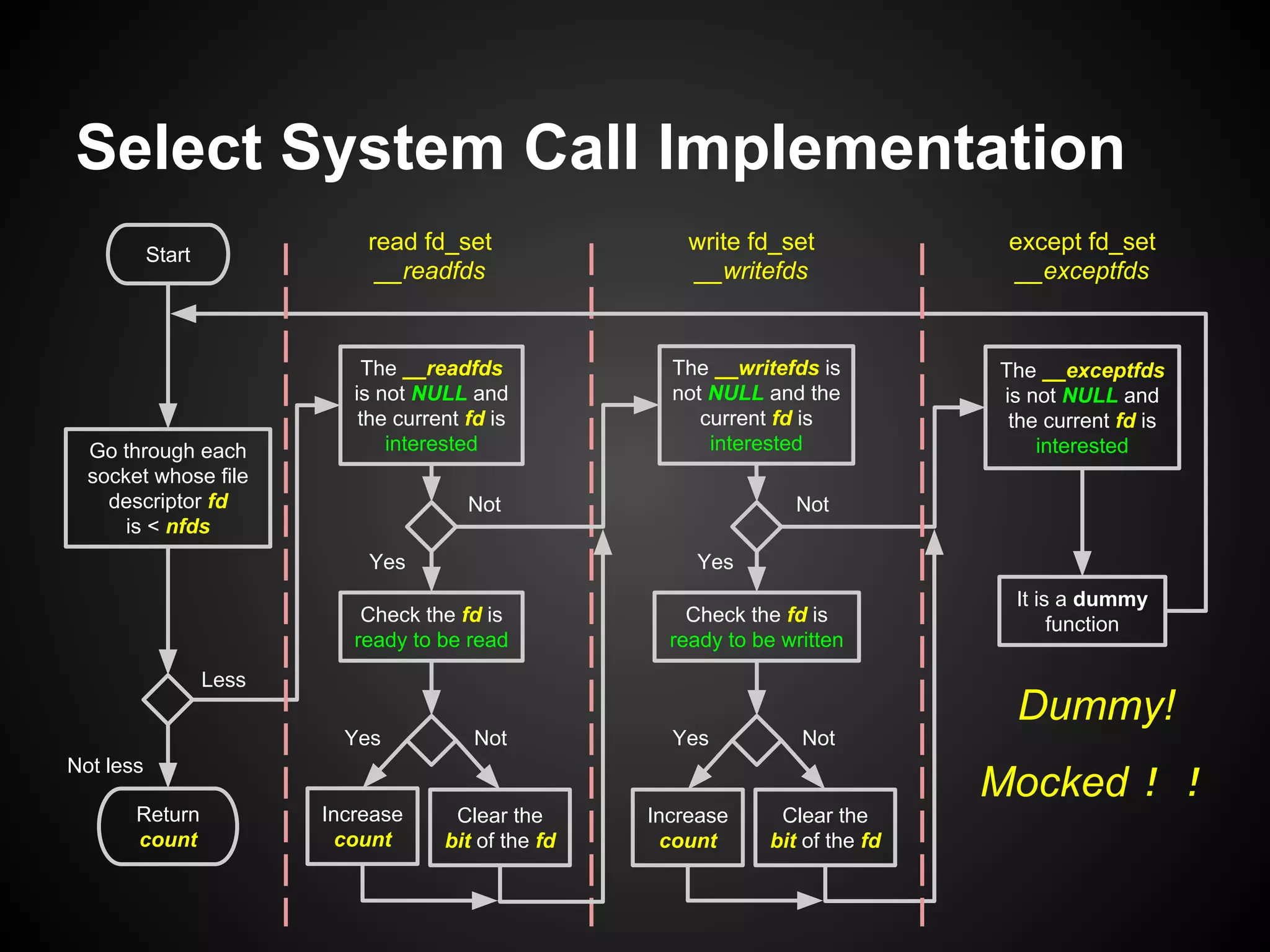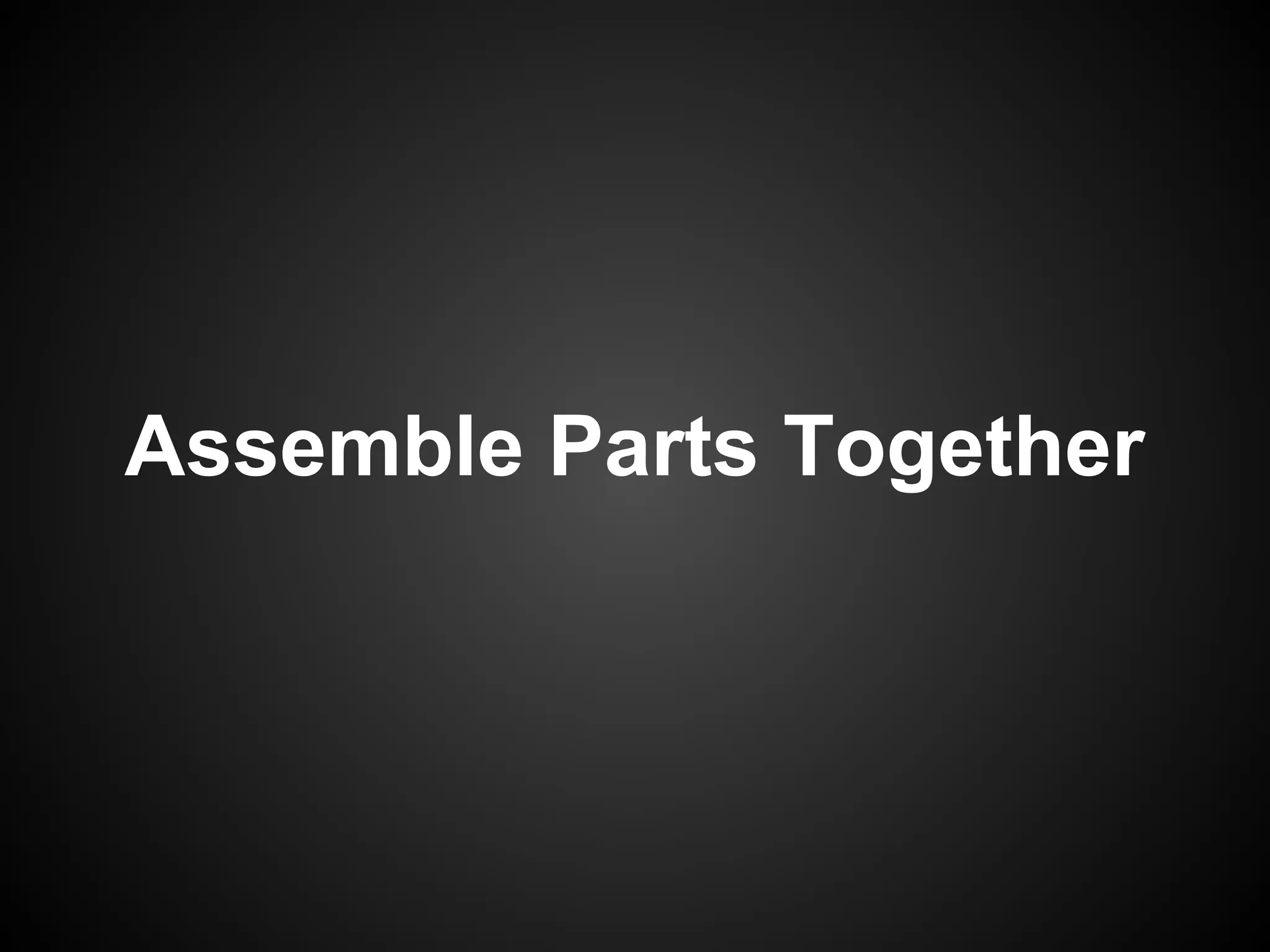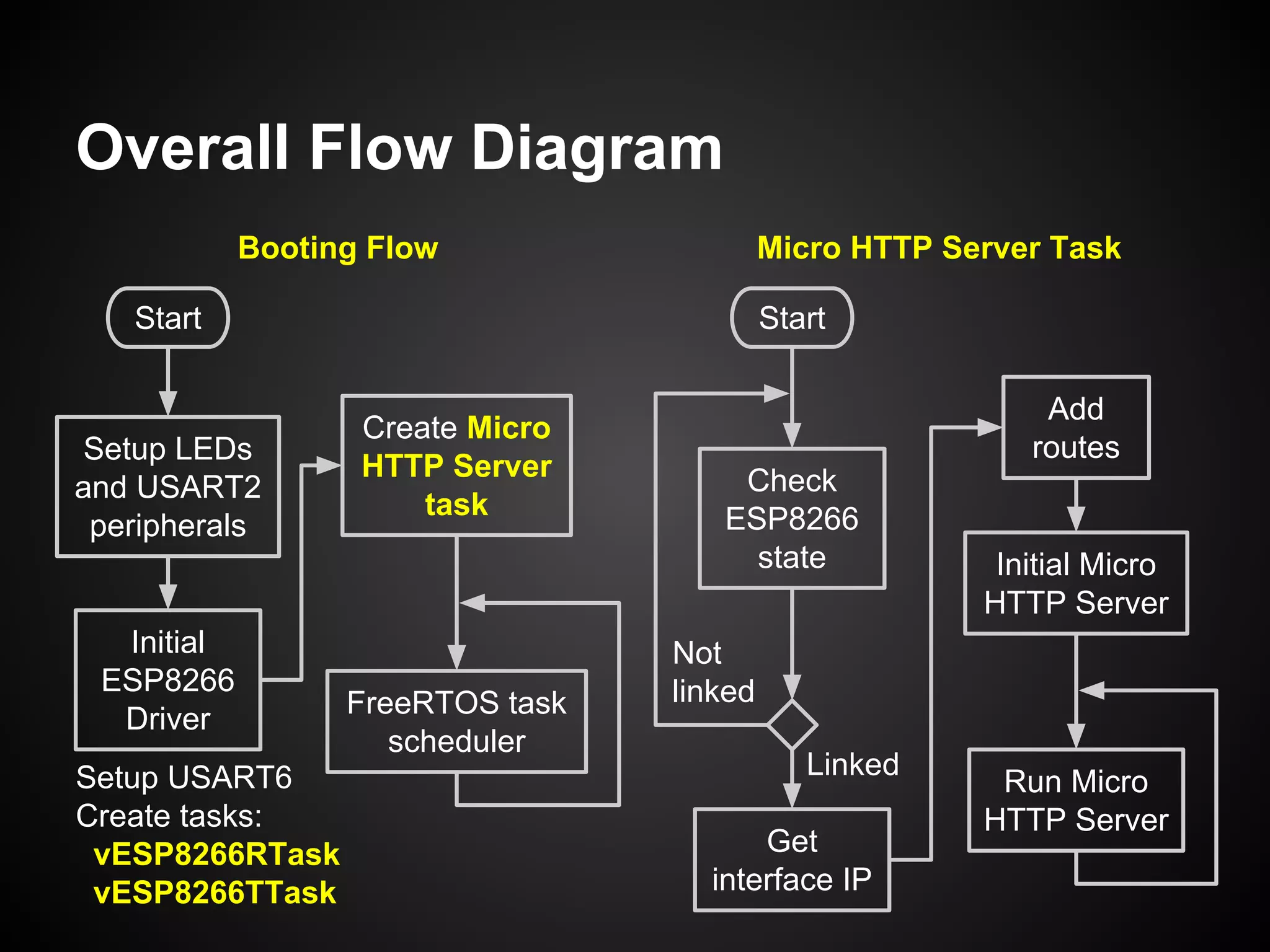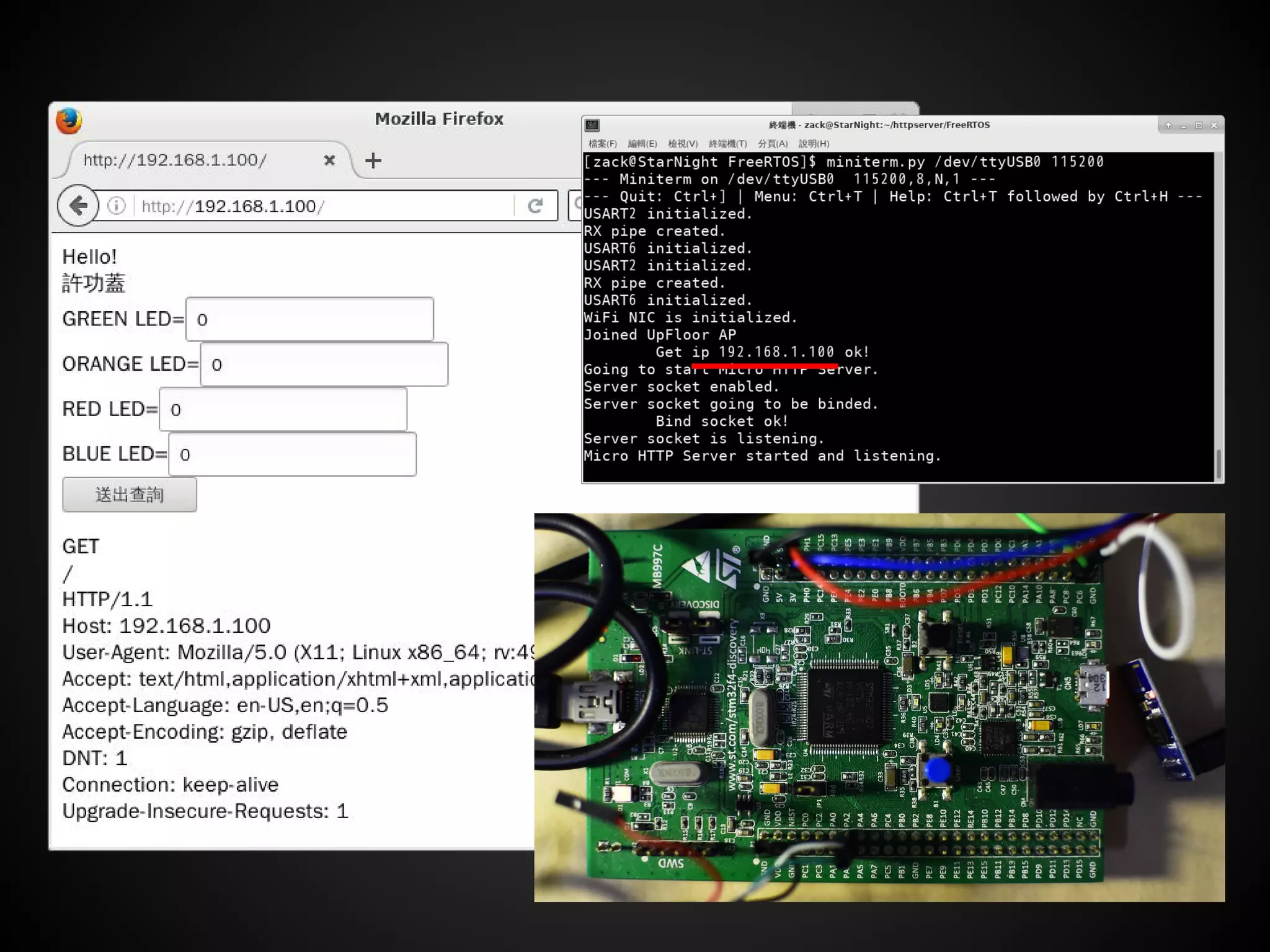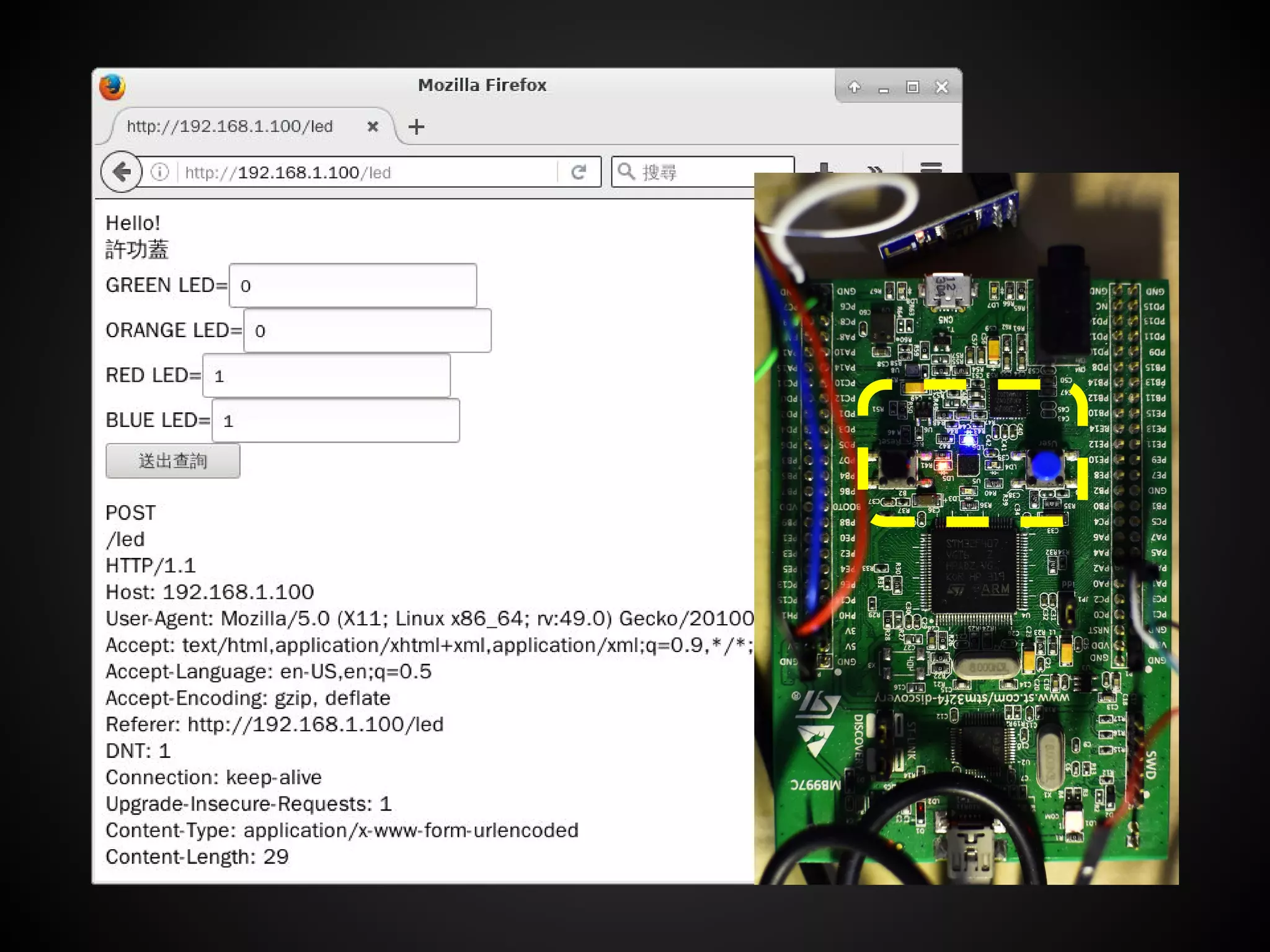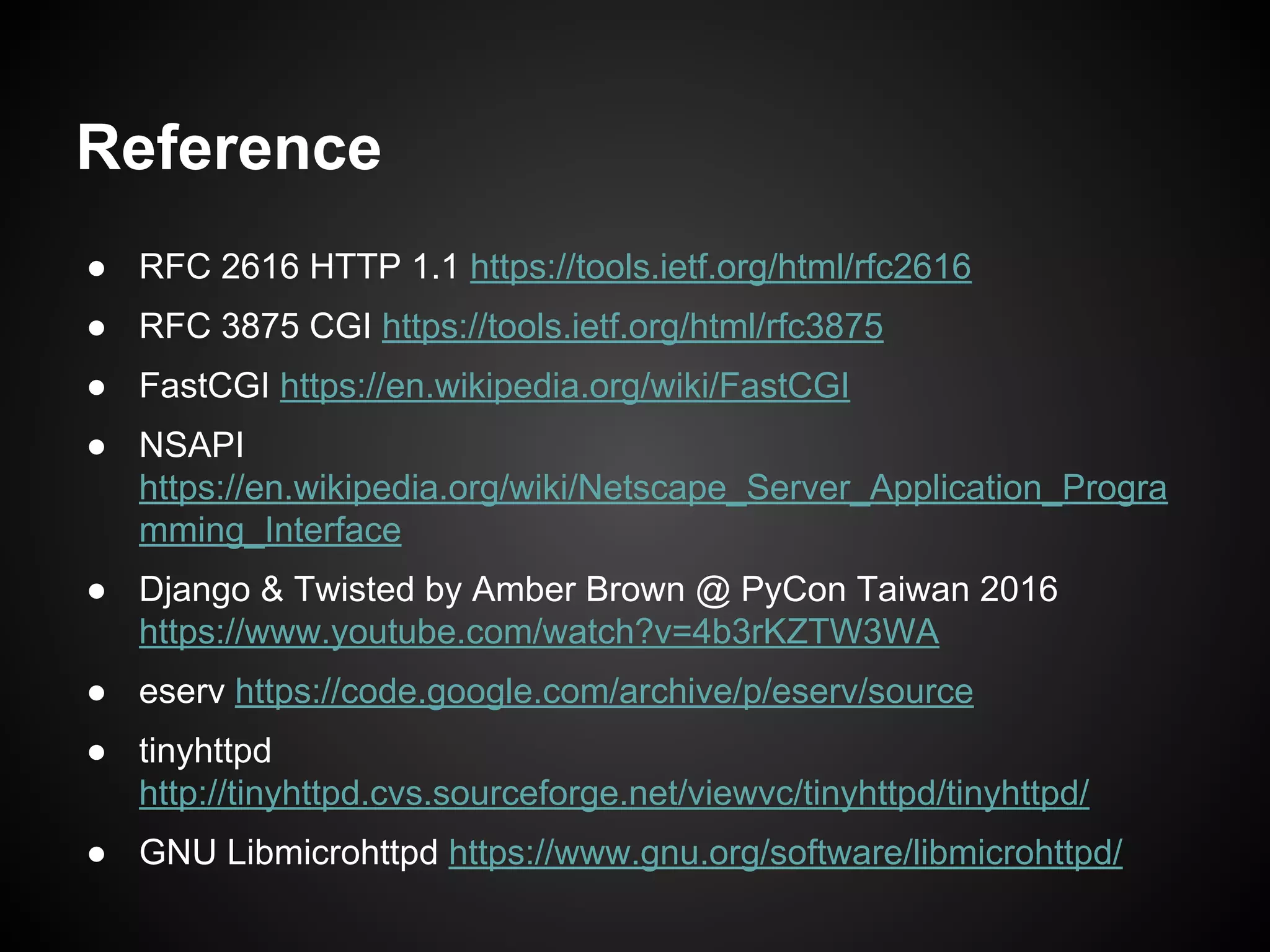The document discusses the development of a micro HTTP server for embedded systems, detailing its architecture and the HTTP protocol. It covers communication methods, limitations of embedded devices, concurrency handling, and different server application interfaces such as CGI and FastCGI. Additionally, it emphasizes the importance of using lightweight approaches to manage limited resources while ensuring efficient client interactions through a concise server model.
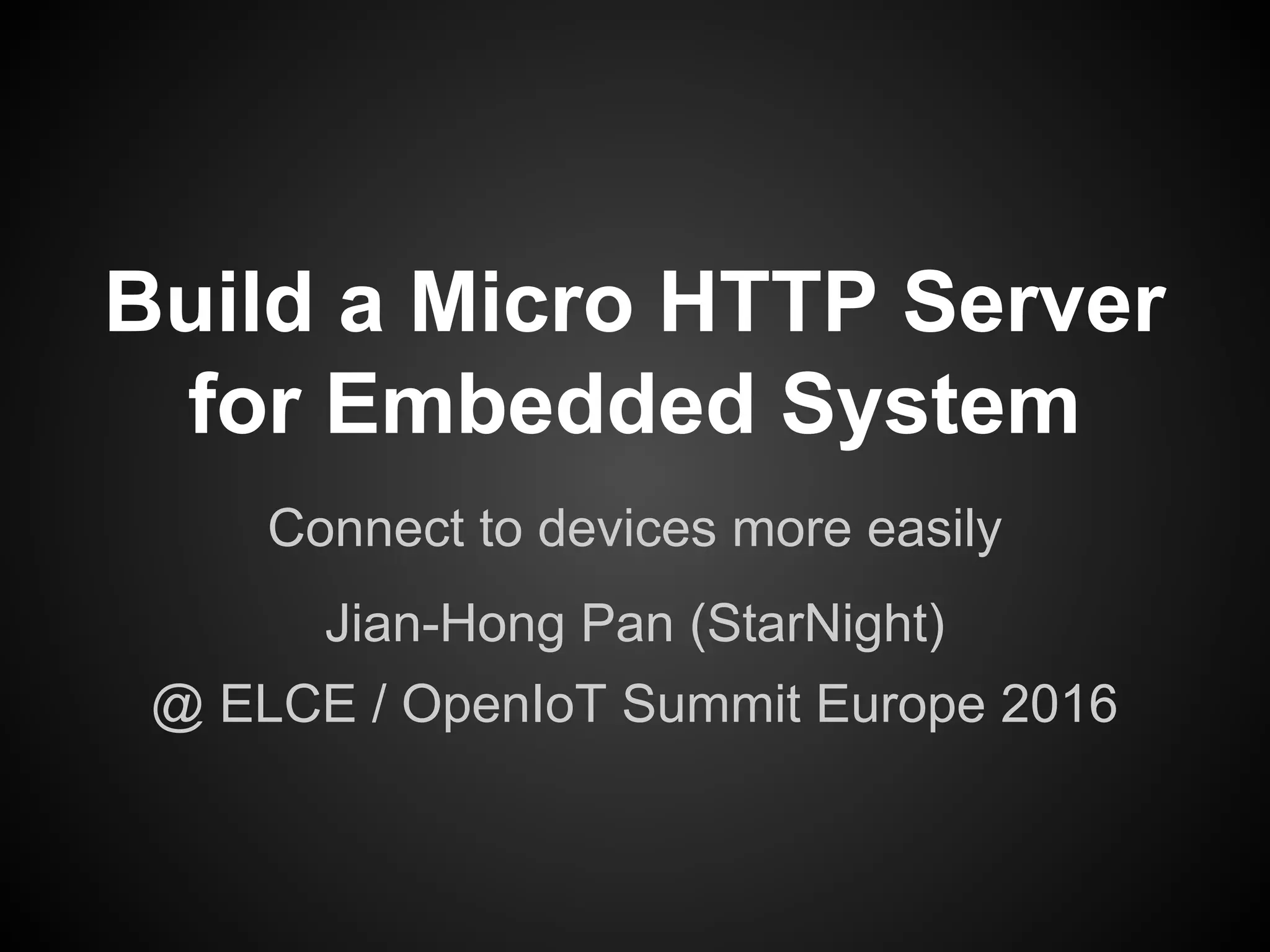
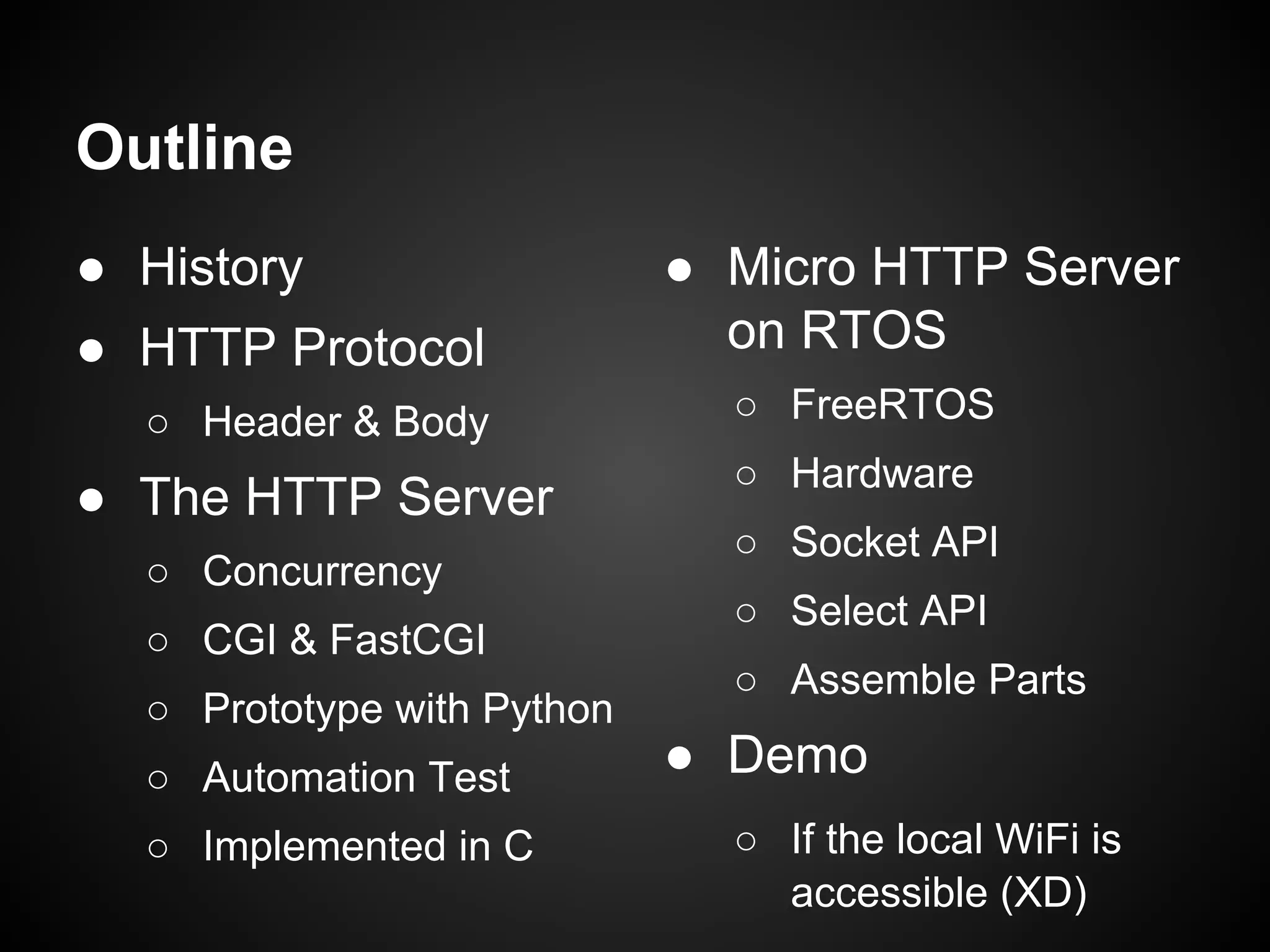
![Who am I
潘建宏 / Jian-Hong Pan (StarNight)
I come from Taiwan !
You can find me at ~
http://www.slideshare.net/chienhungpan/
GitHub : starnight
Facebook : Jian-Hong Pan
Email : starnight [AT] g.ncu.edu.tw](https://image.slidesharecdn.com/buildamicrohttpserverforembeddedsystem-161012205755/75/Build-a-Micro-HTTP-Server-for-Embedded-System-3-2048.jpg)


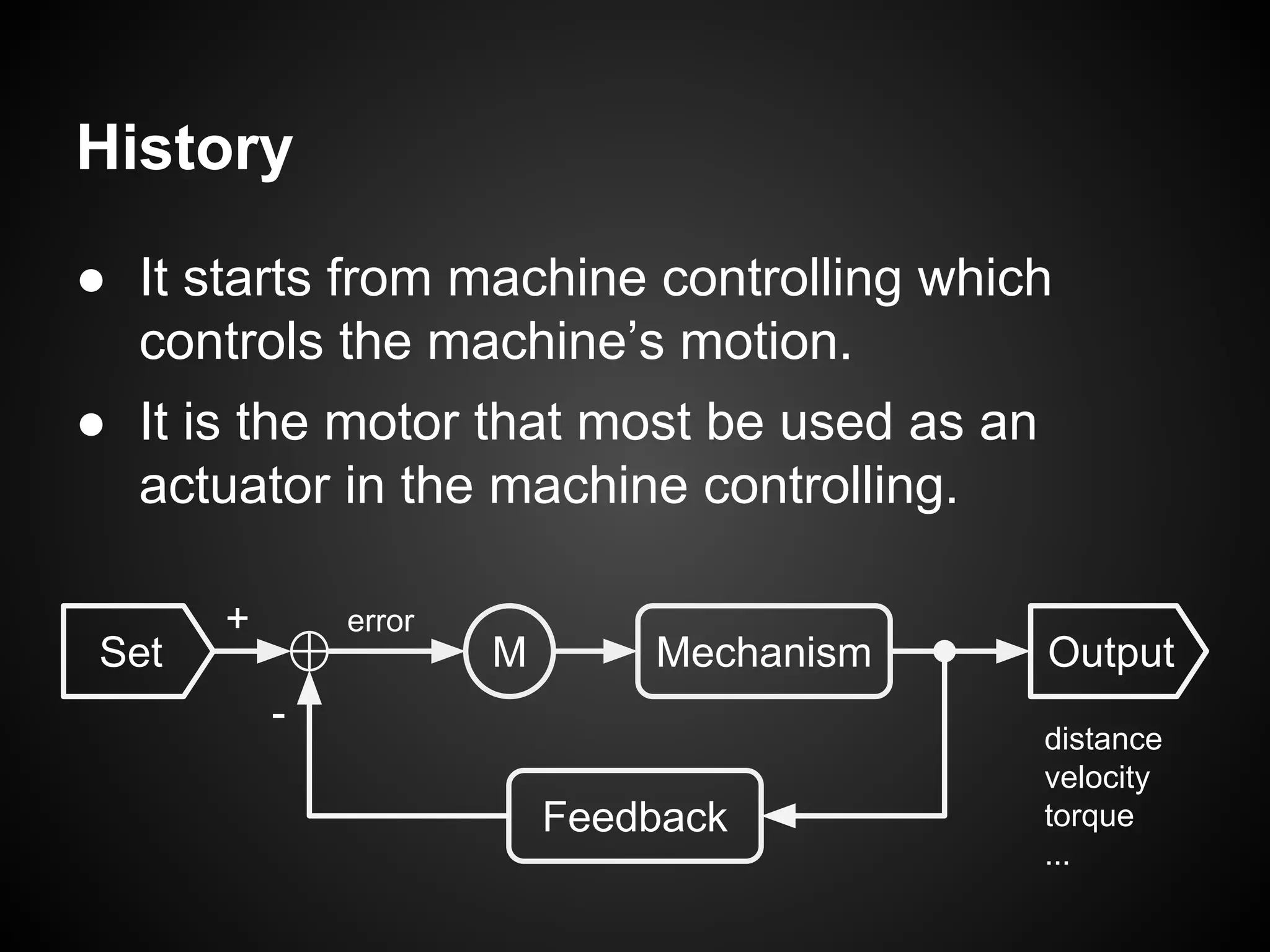
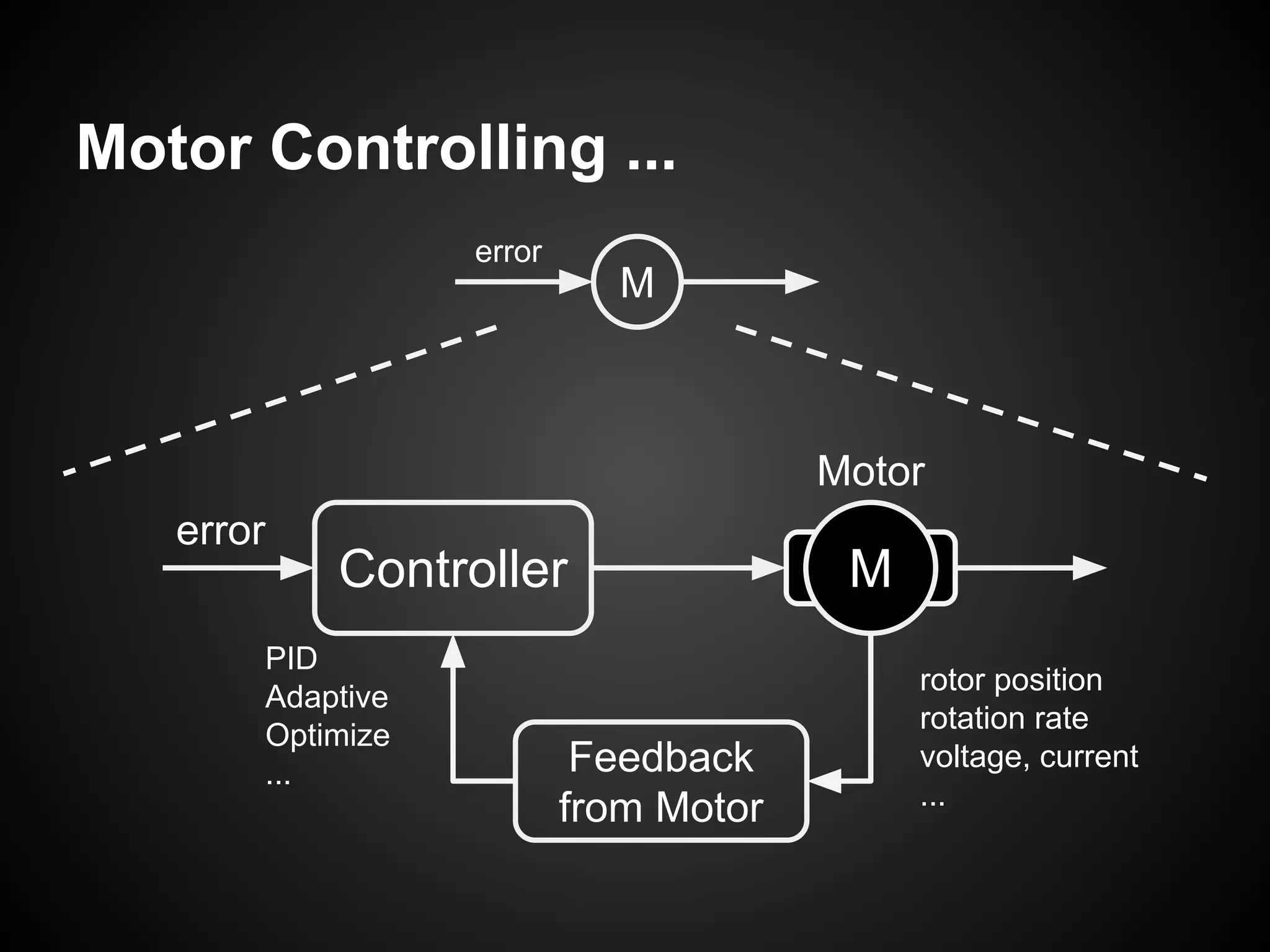
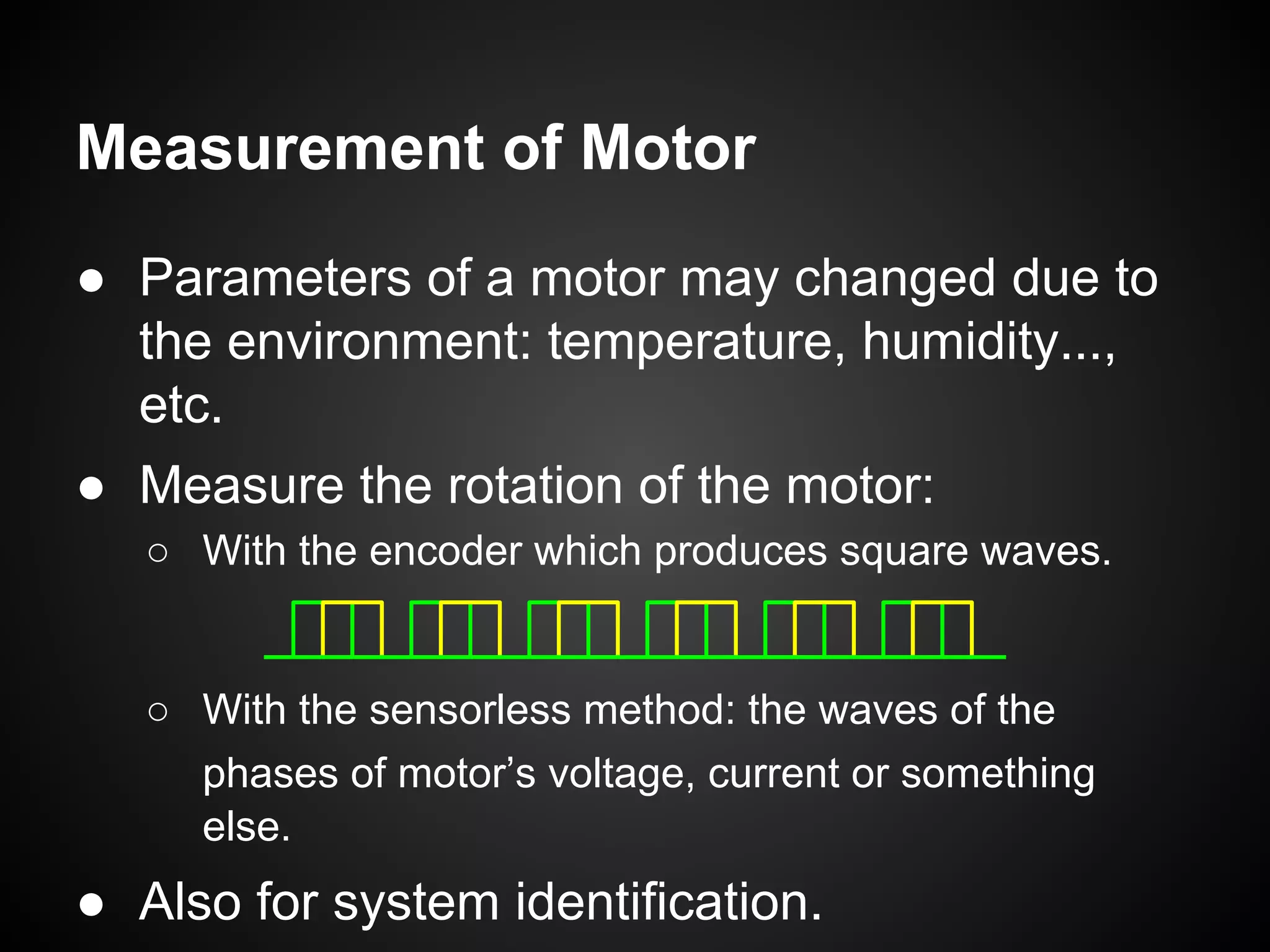
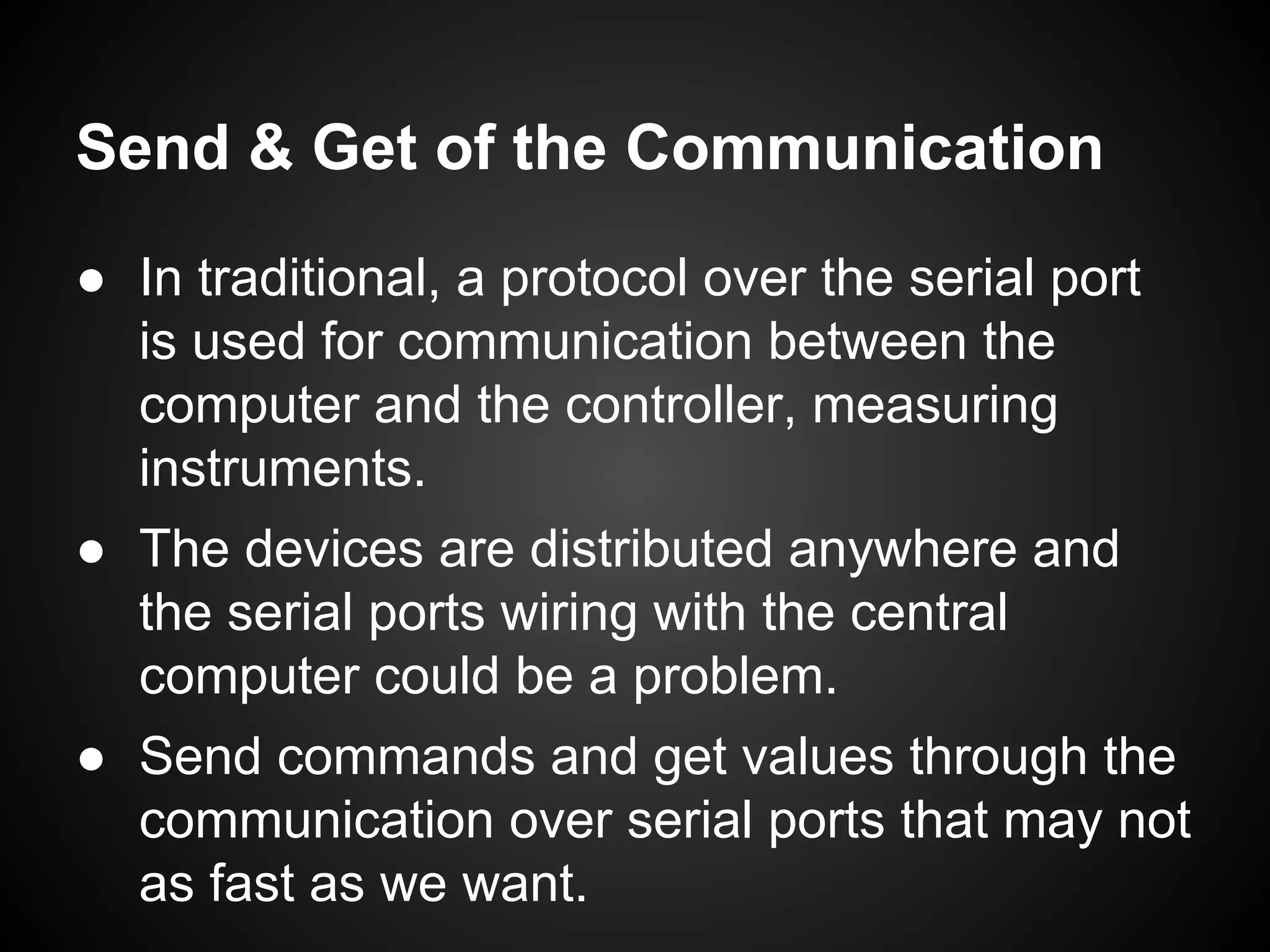
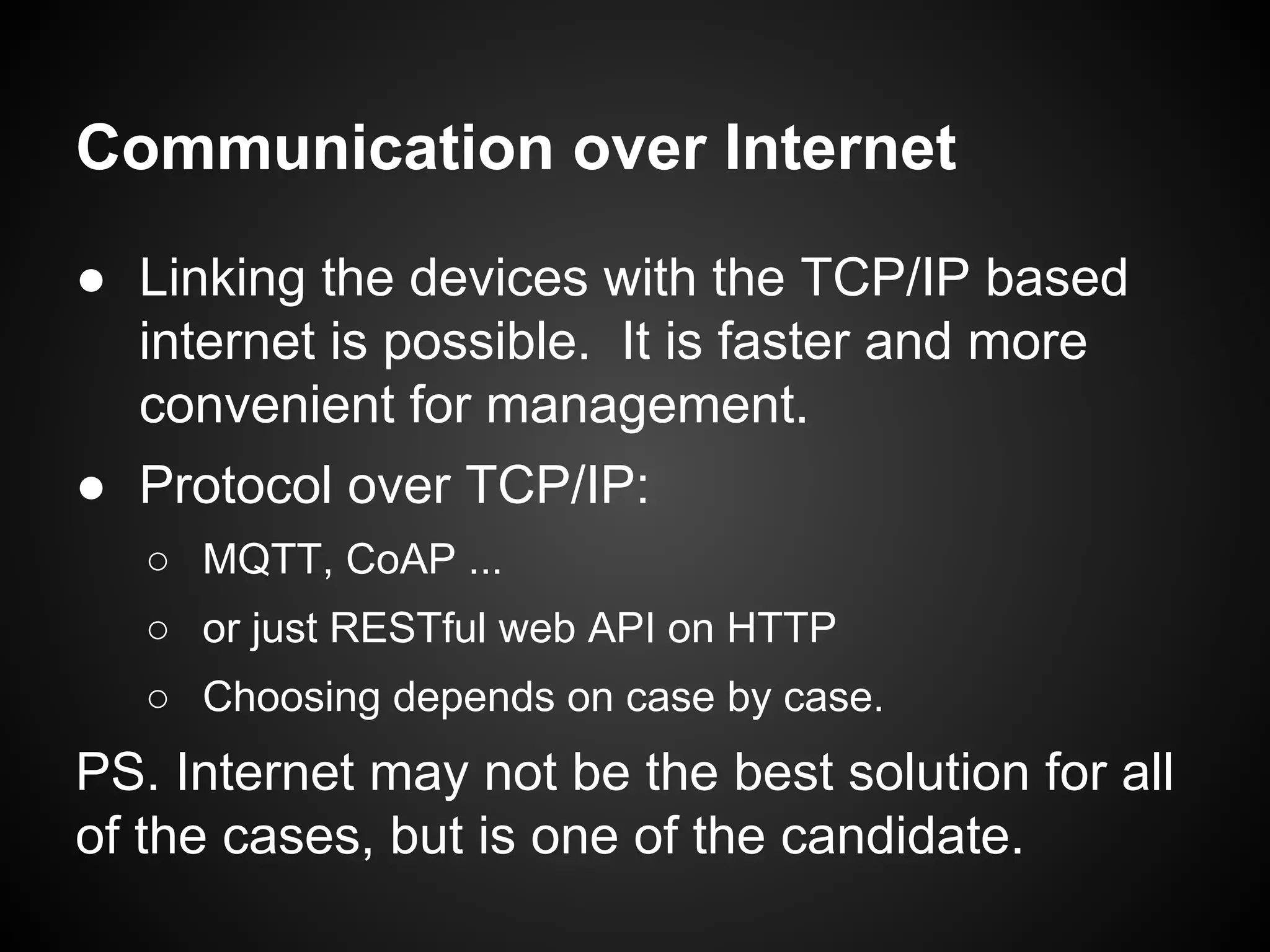
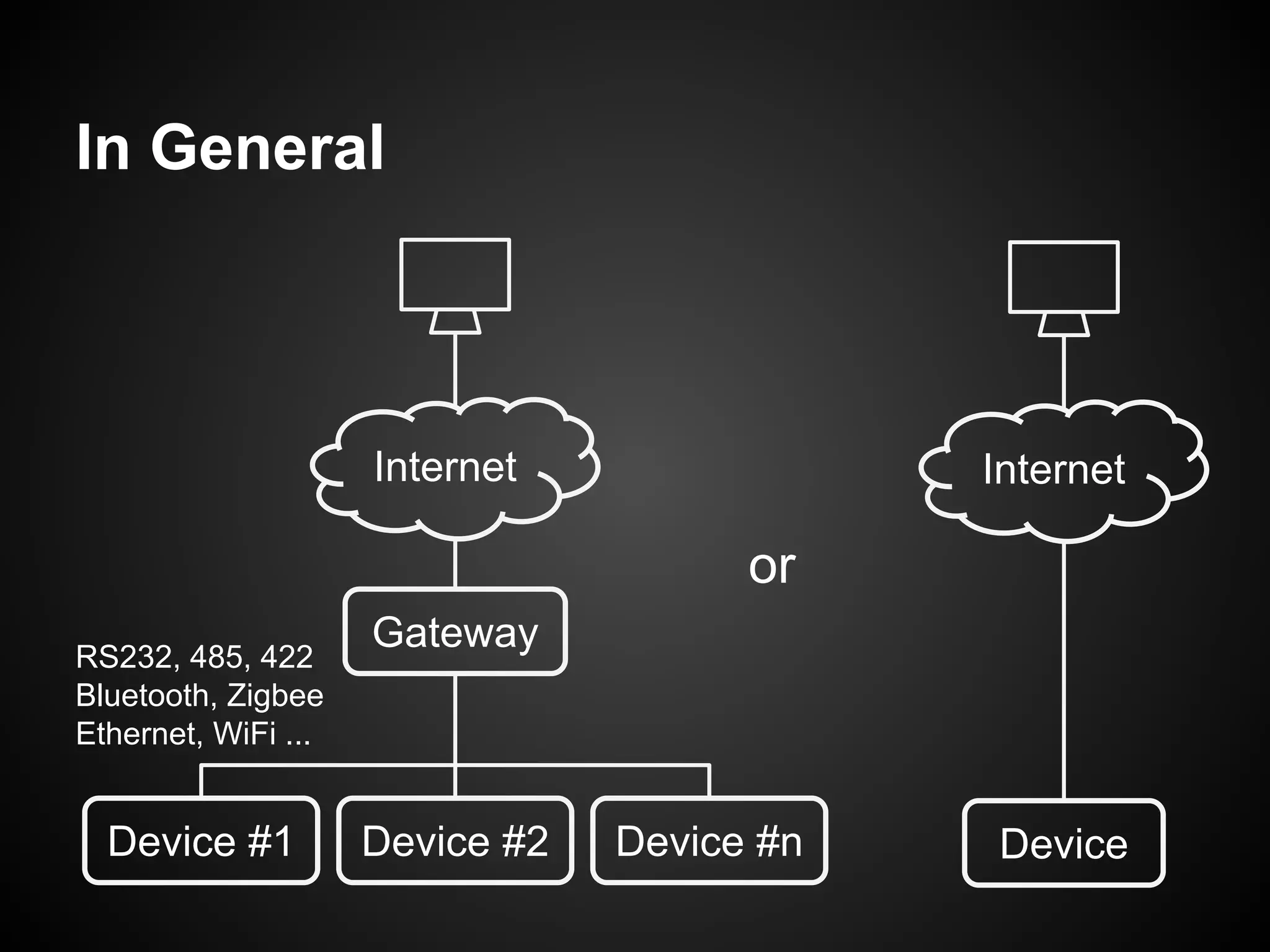
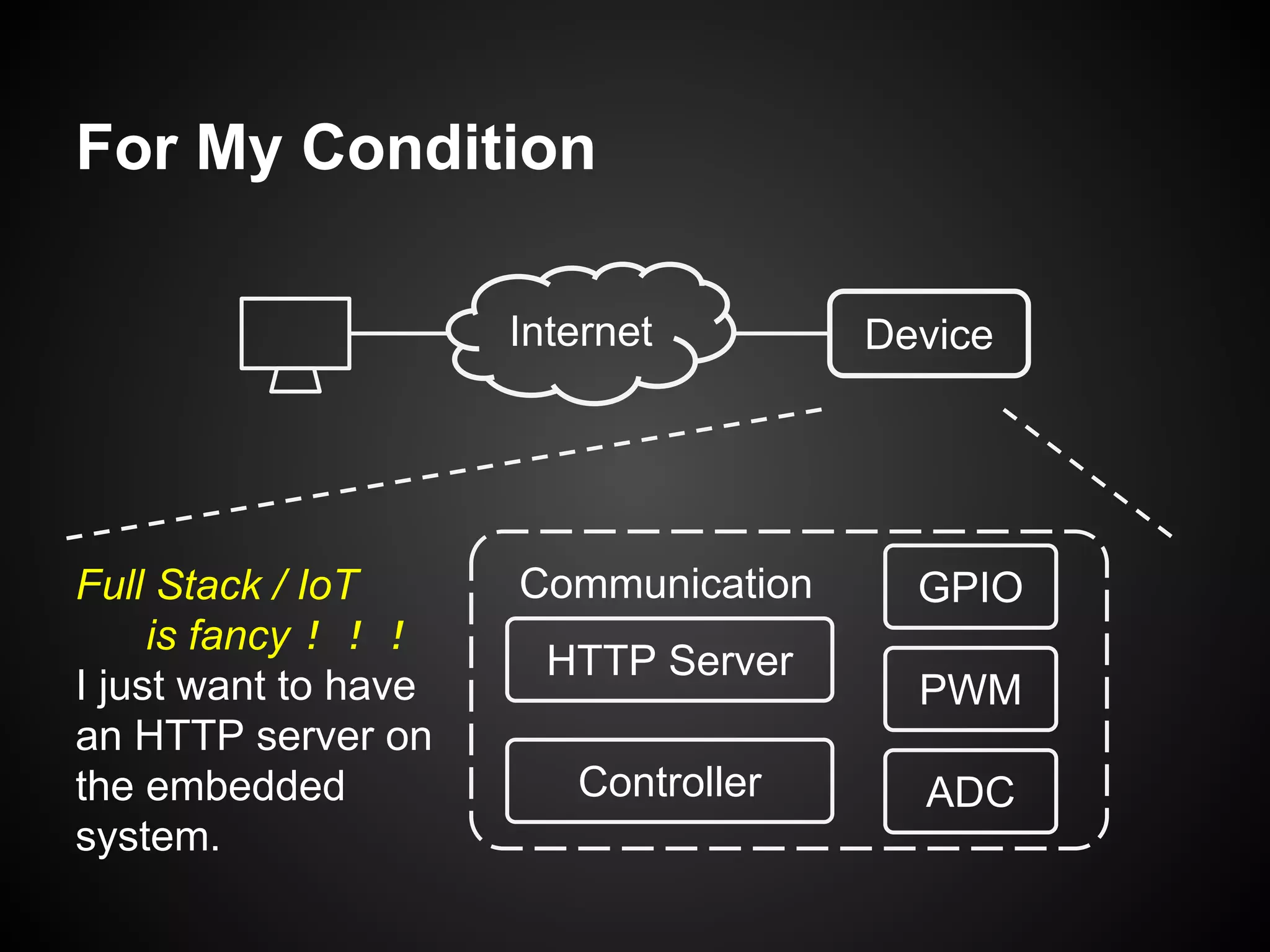

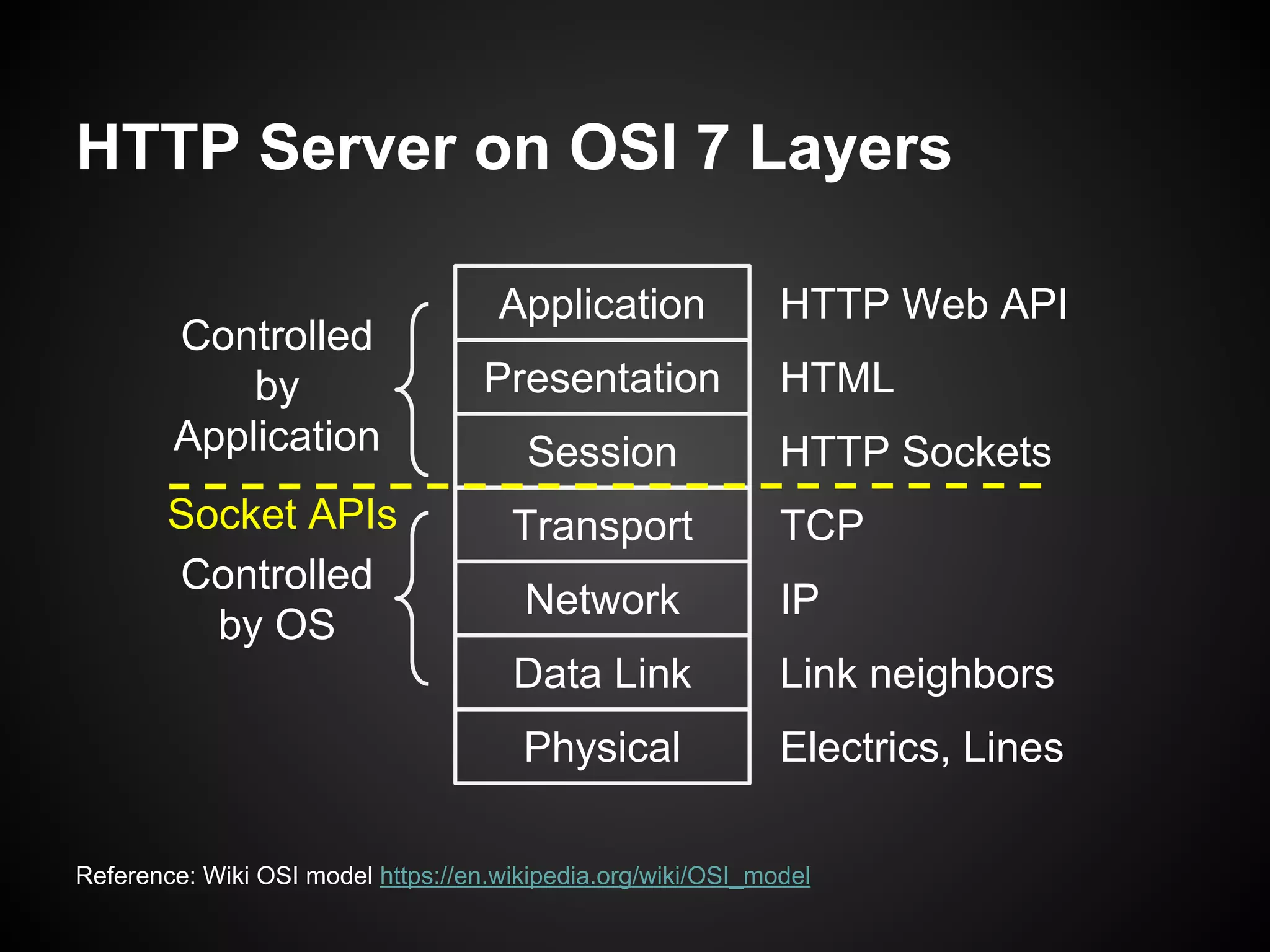
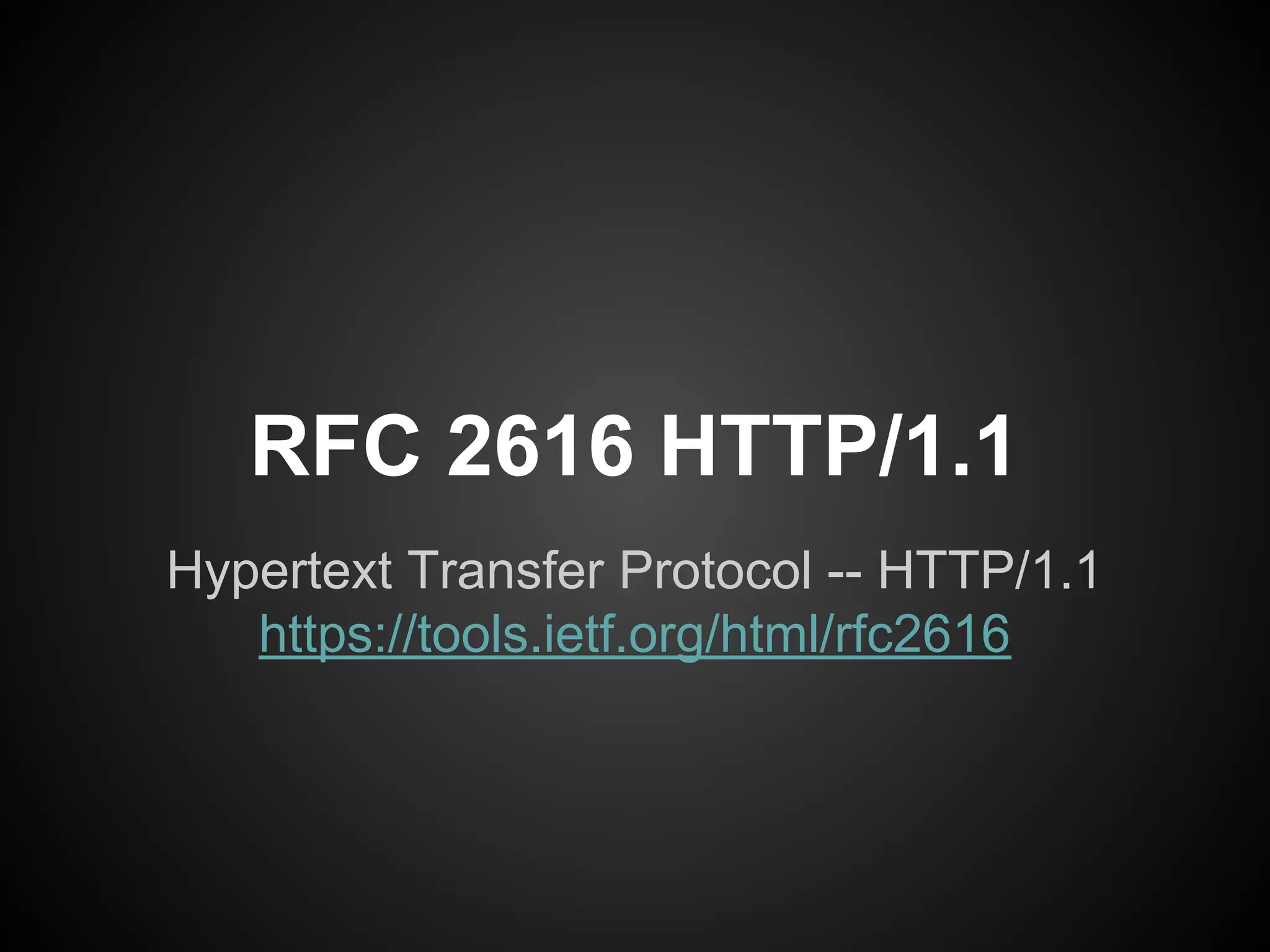
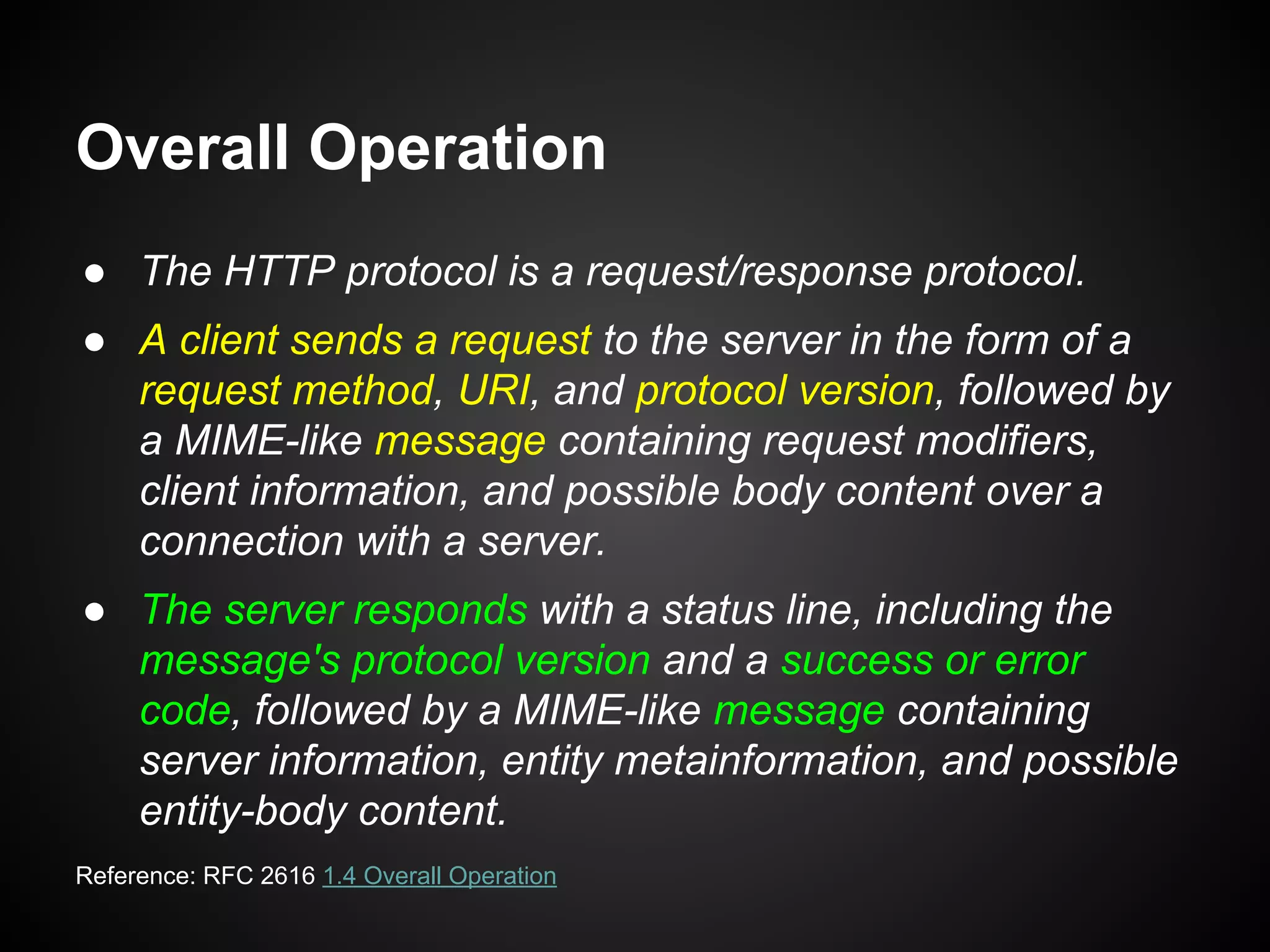
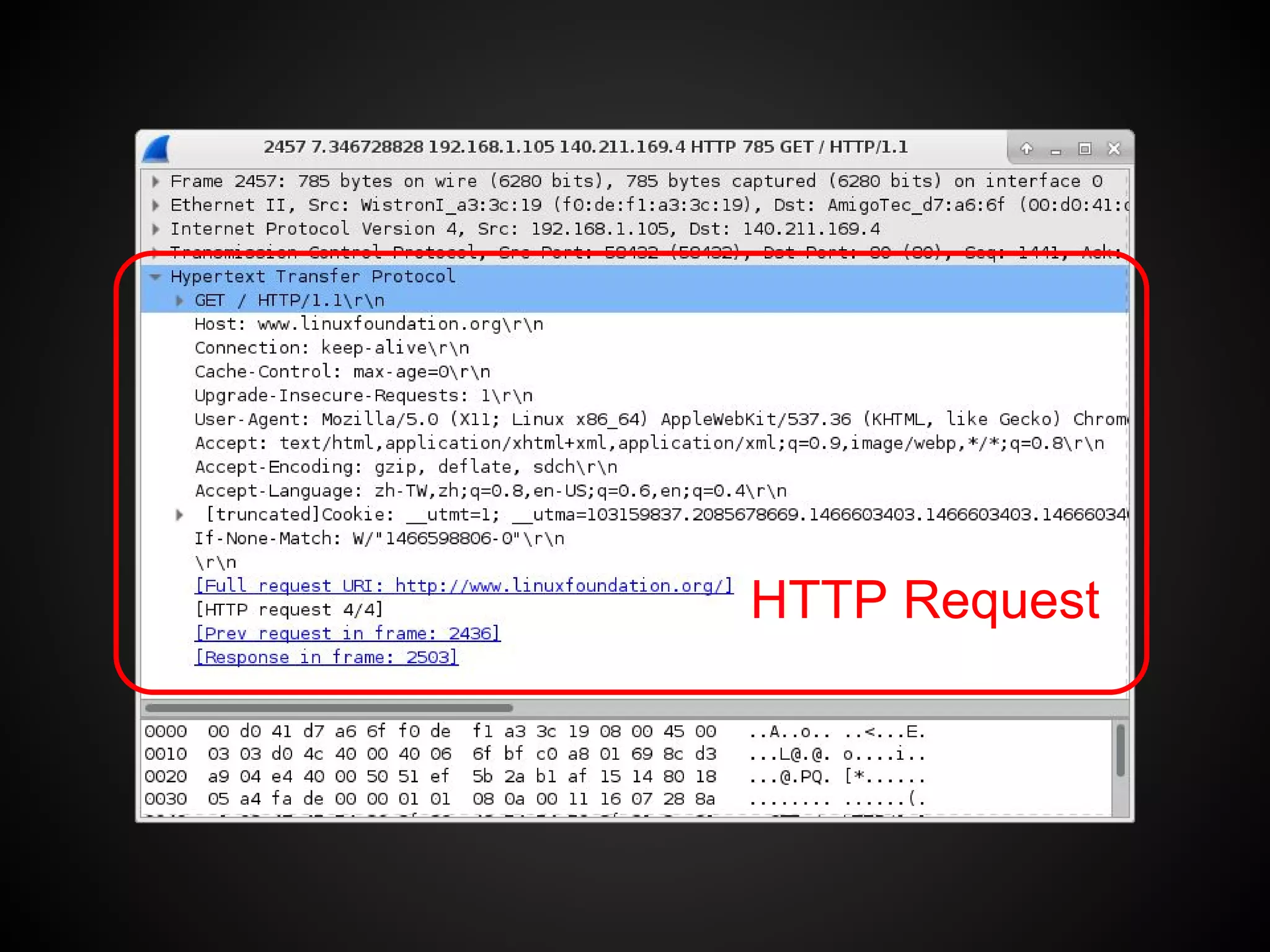
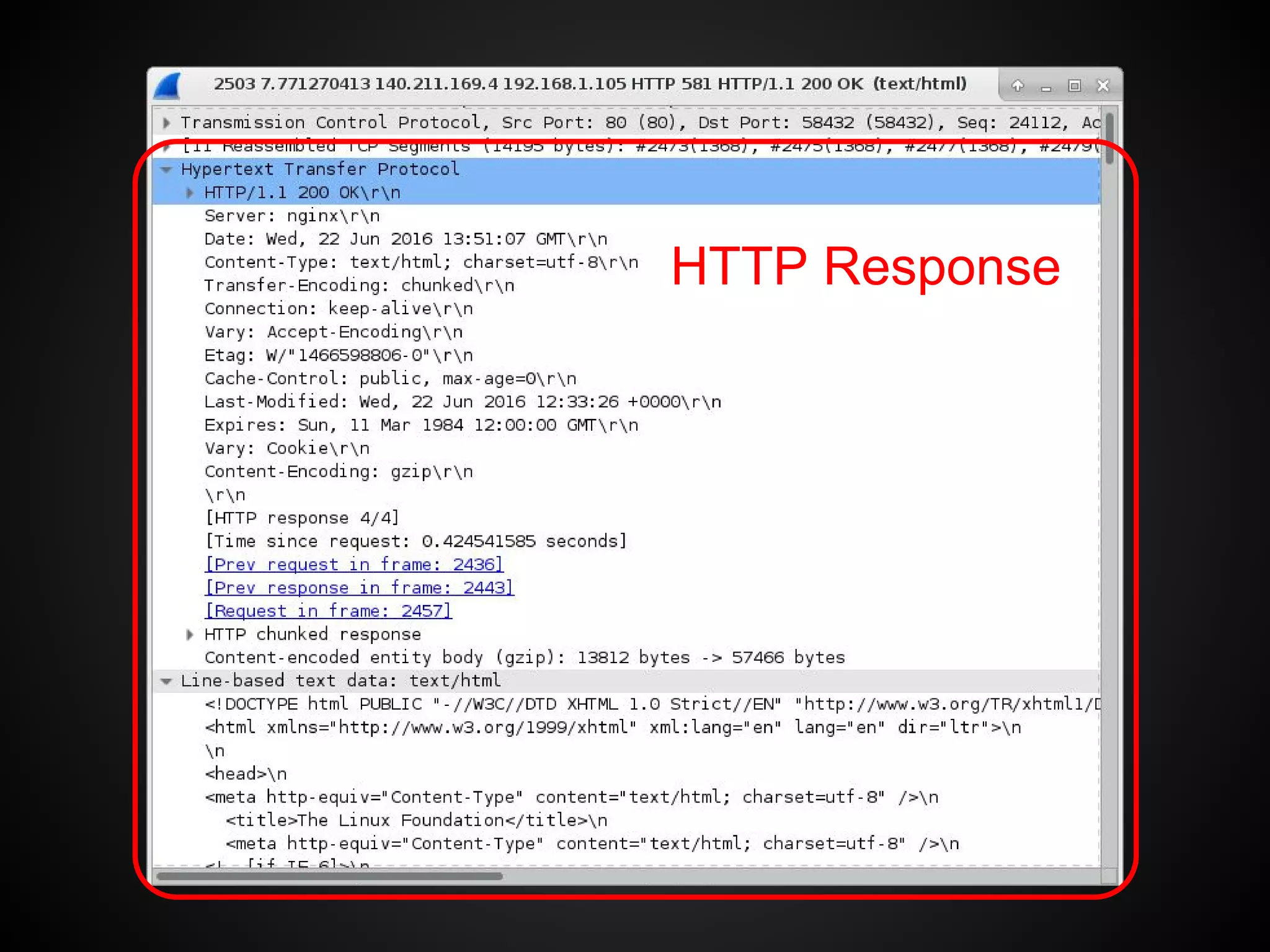
![HTTP Message - Message Types
● HTTP messages consist of requests from client to server and responses
from server to client.
● Request (section 5) and Response (section 6) messages use the generic
message format of RFC 822 [9] for transferring entities (the payload of the
message).
● Both types of message consist of a start-line, zero or more header fields
(also known as "headers"), an empty line (i.e., a line with nothing
preceding the CRLF) indicating the end of the header fields, and possibly a
message-body.
generic-message = start-line
*(message-header CRLF)
CRLF
[ message-body ]
start-line = Request-Line | Status-Line
Reference: RFC 2616 4.1 Message Types](https://image.slidesharecdn.com/buildamicrohttpserverforembeddedsystem-161012205755/75/Build-a-Micro-HTTP-Server-for-Embedded-System-19-2048.jpg)
![HTTP Message - Message Headers
● HTTP header fields, which include general-header (section 4.5),
request-header (section 5.3), response-header (section 6.2), and
entity-header (section 7.1) fields.
● Each header field consists of a name followed by a colon (":") and the field
value. Field names are case-insensitive. The field value MAY be preceded
by any amount of LWS, though a single SP is preferred.
Reference: RFC 2616 4.2 Message Headers
message-header = field-name ":" [ field-value ]
field-name = token
field-value = *( field-content | LWS )
field-content = <the OCTETs making up the field-value and
consisting of either *TEXT or combinations of
token, separators, and quoted-string>](https://image.slidesharecdn.com/buildamicrohttpserverforembeddedsystem-161012205755/75/Build-a-Micro-HTTP-Server-for-Embedded-System-20-2048.jpg)
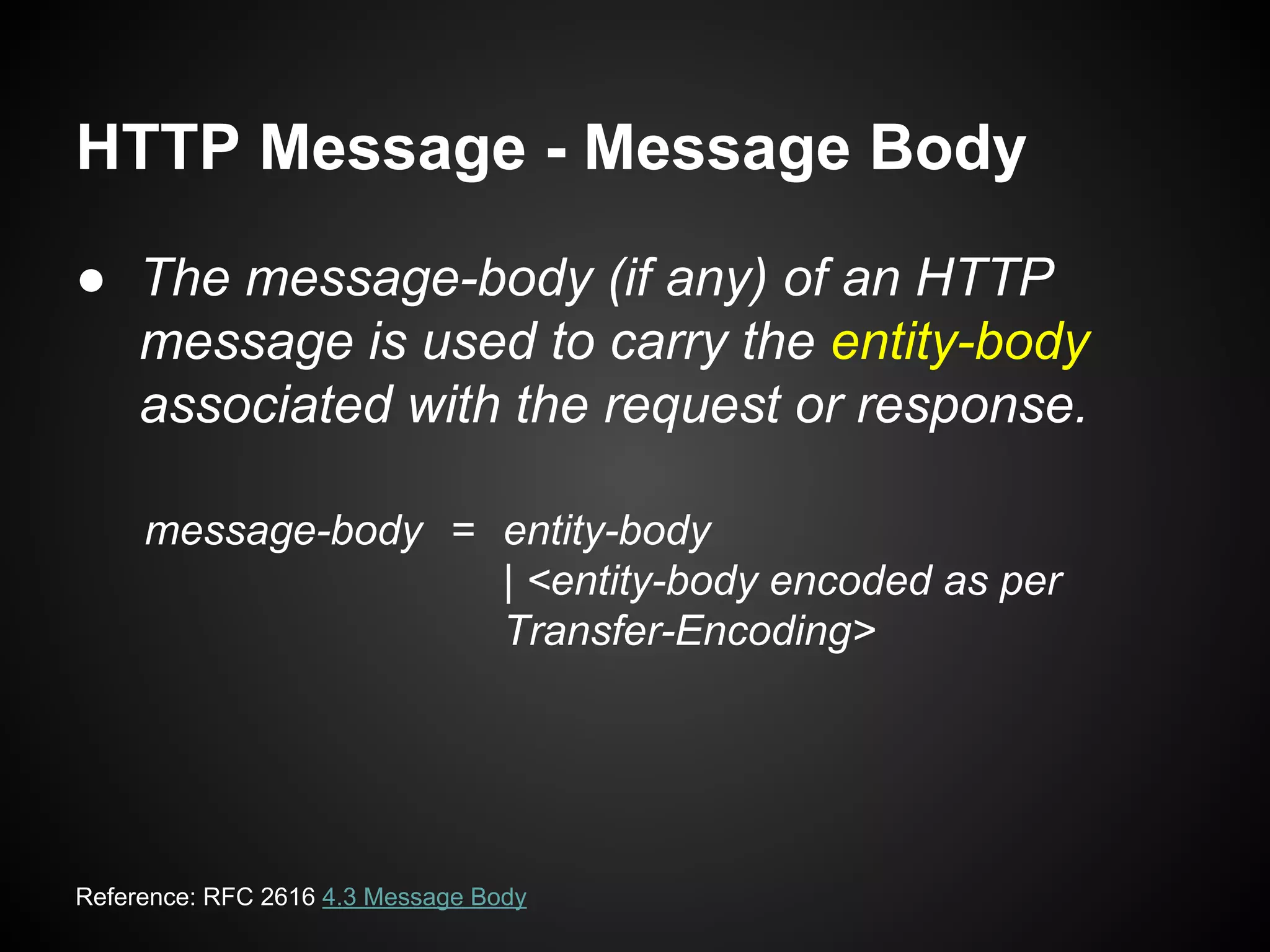

![Request
● A request message from a client to a server includes,
within the first line of that message, the method to be
applied to the resource, the identifier of the resource,
and the protocol version in use.
Request = Request-Line
*(( general-header
| request-header
| entity-header ) CRLF)
CRLF
[ message-body ]
Reference: RFC 2616 5 Request](https://image.slidesharecdn.com/buildamicrohttpserverforembeddedsystem-161012205755/75/Build-a-Micro-HTTP-Server-for-Embedded-System-23-2048.jpg)
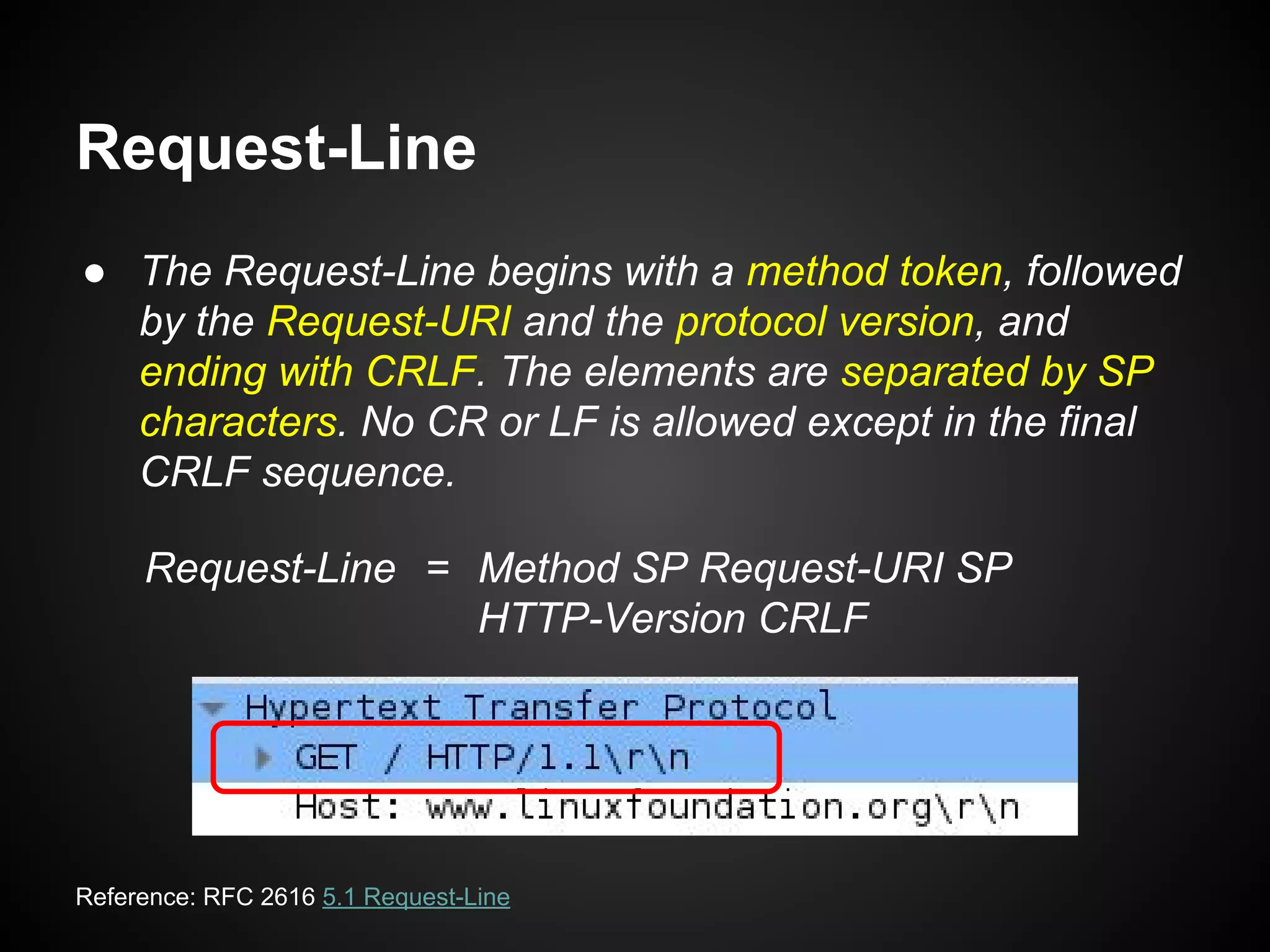

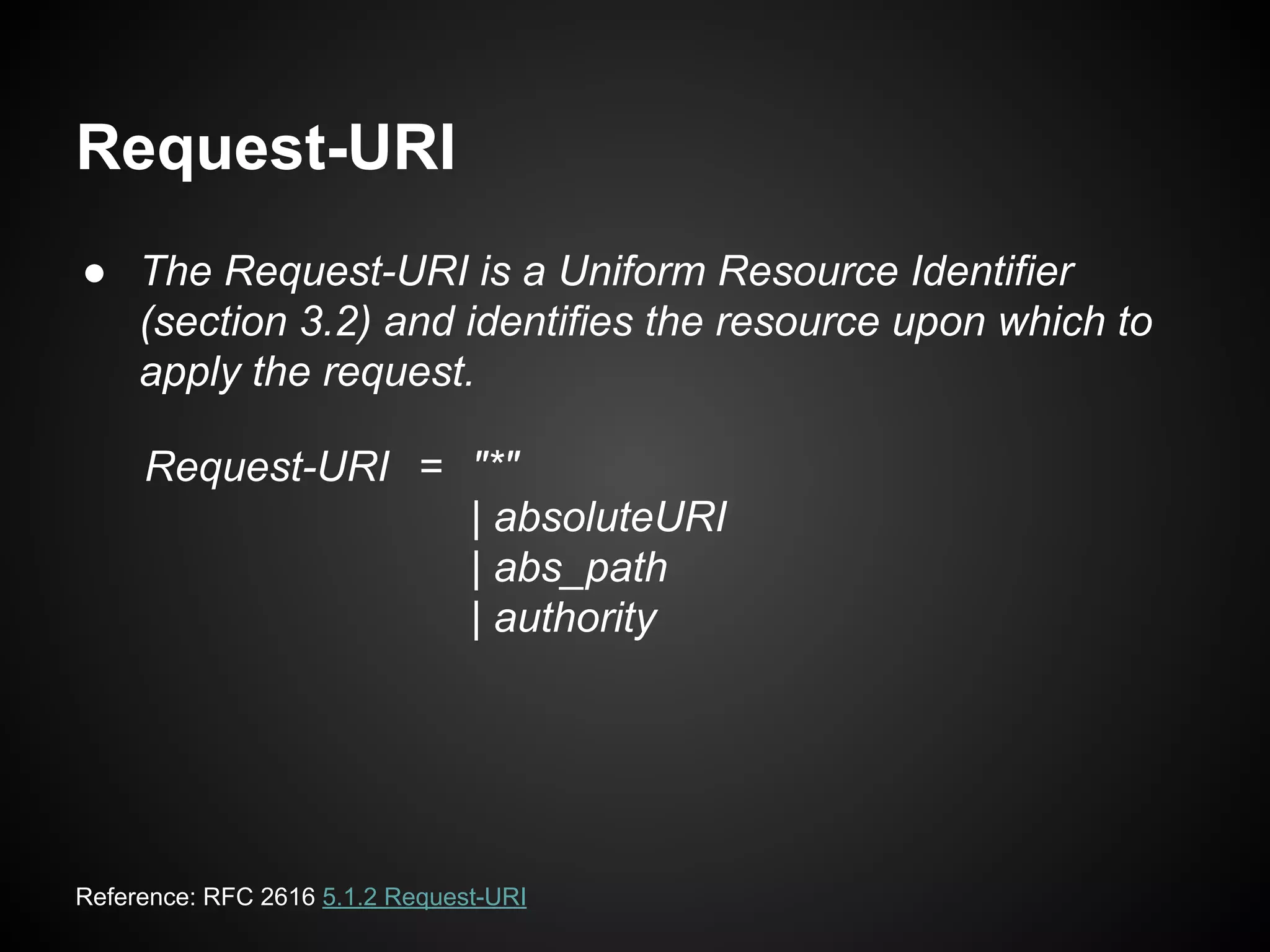
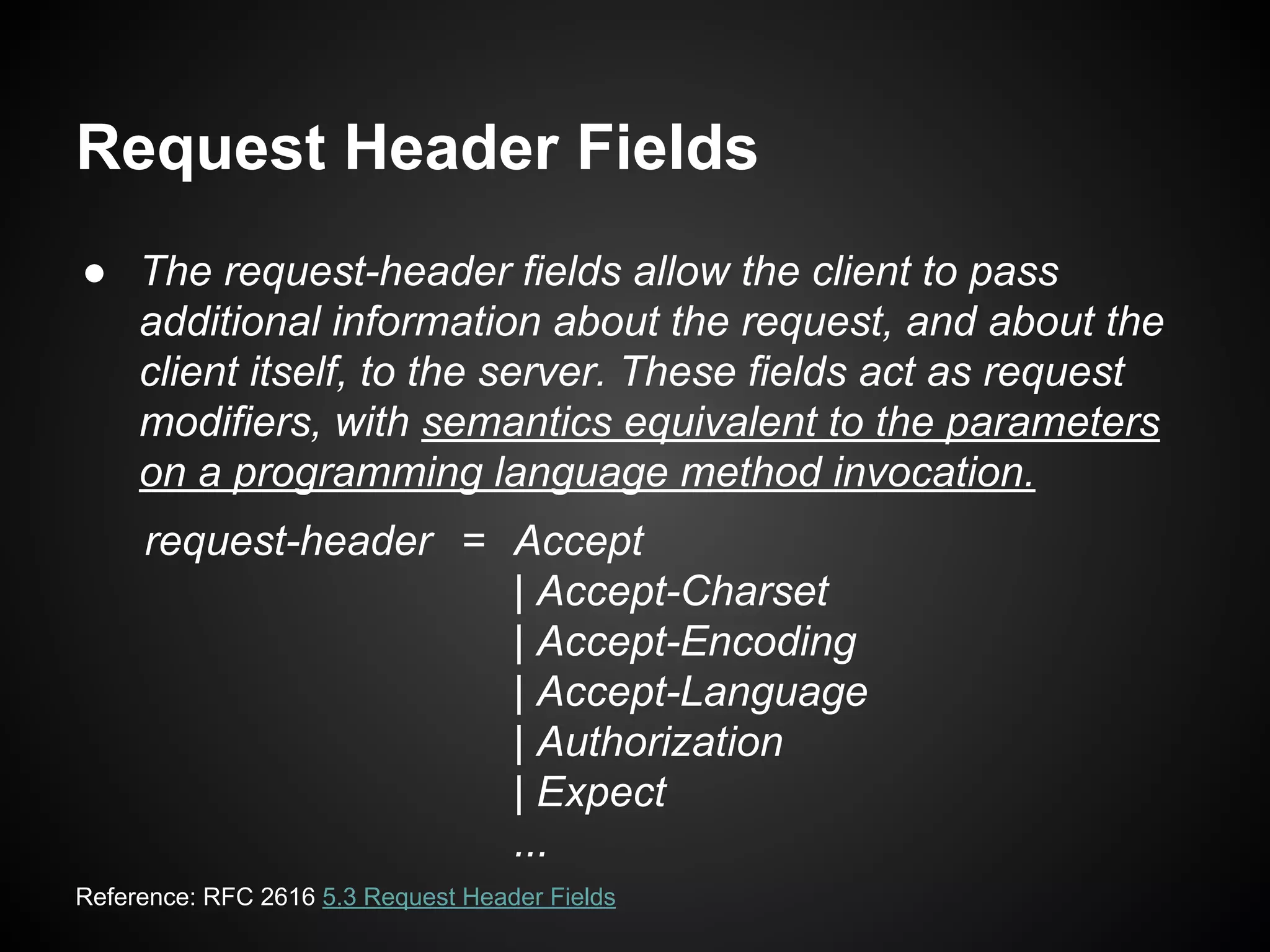
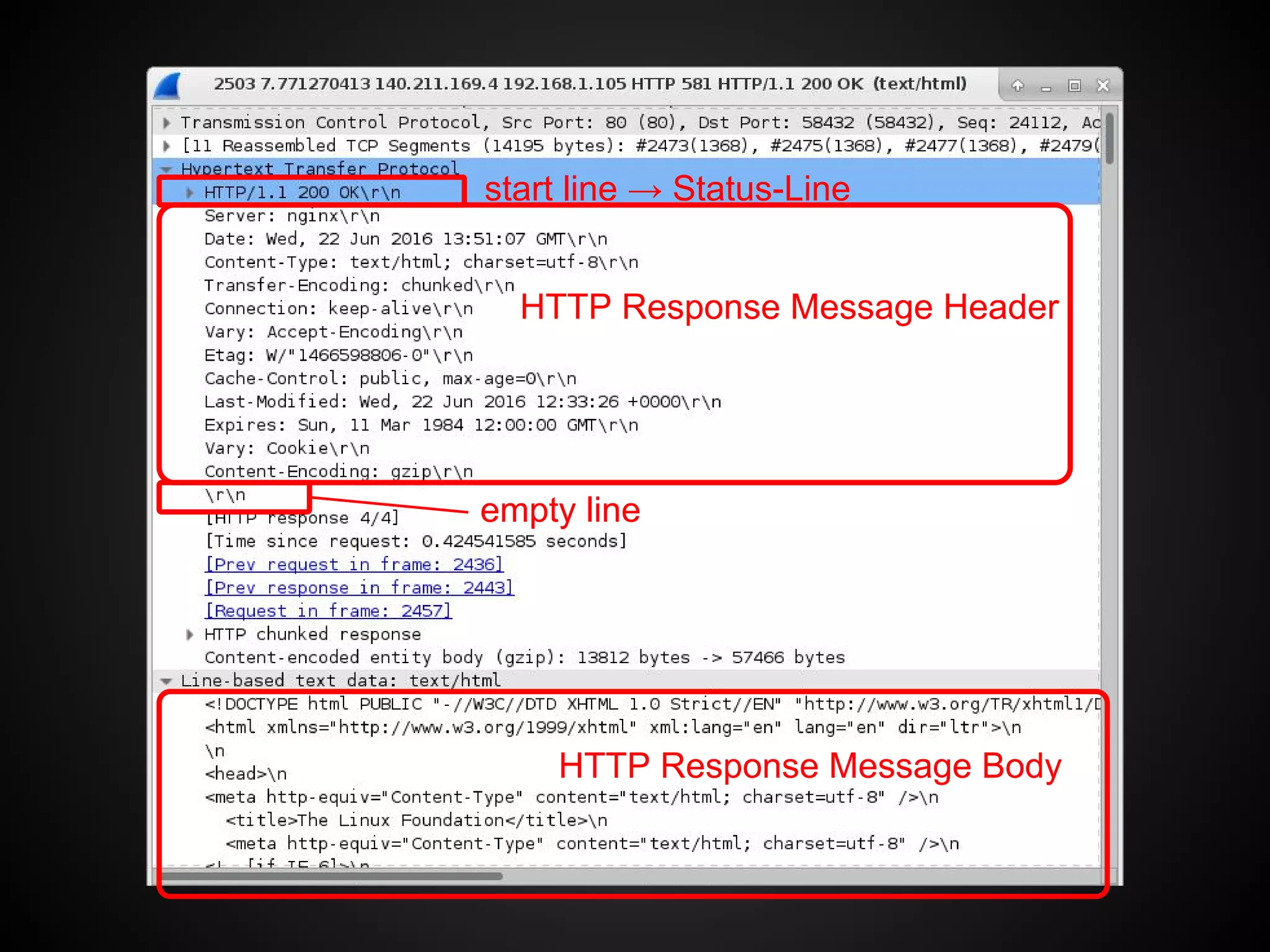
![Response
● After receiving and interpreting a request message, a
server responds with an HTTP response message.
Response = Status-Line
*(( general-header
| response-header
| entity-header ) CRLF)
CRLF
[ message-body ]
Reference: RFC 2616 6 Response](https://image.slidesharecdn.com/buildamicrohttpserverforembeddedsystem-161012205755/75/Build-a-Micro-HTTP-Server-for-Embedded-System-29-2048.jpg)
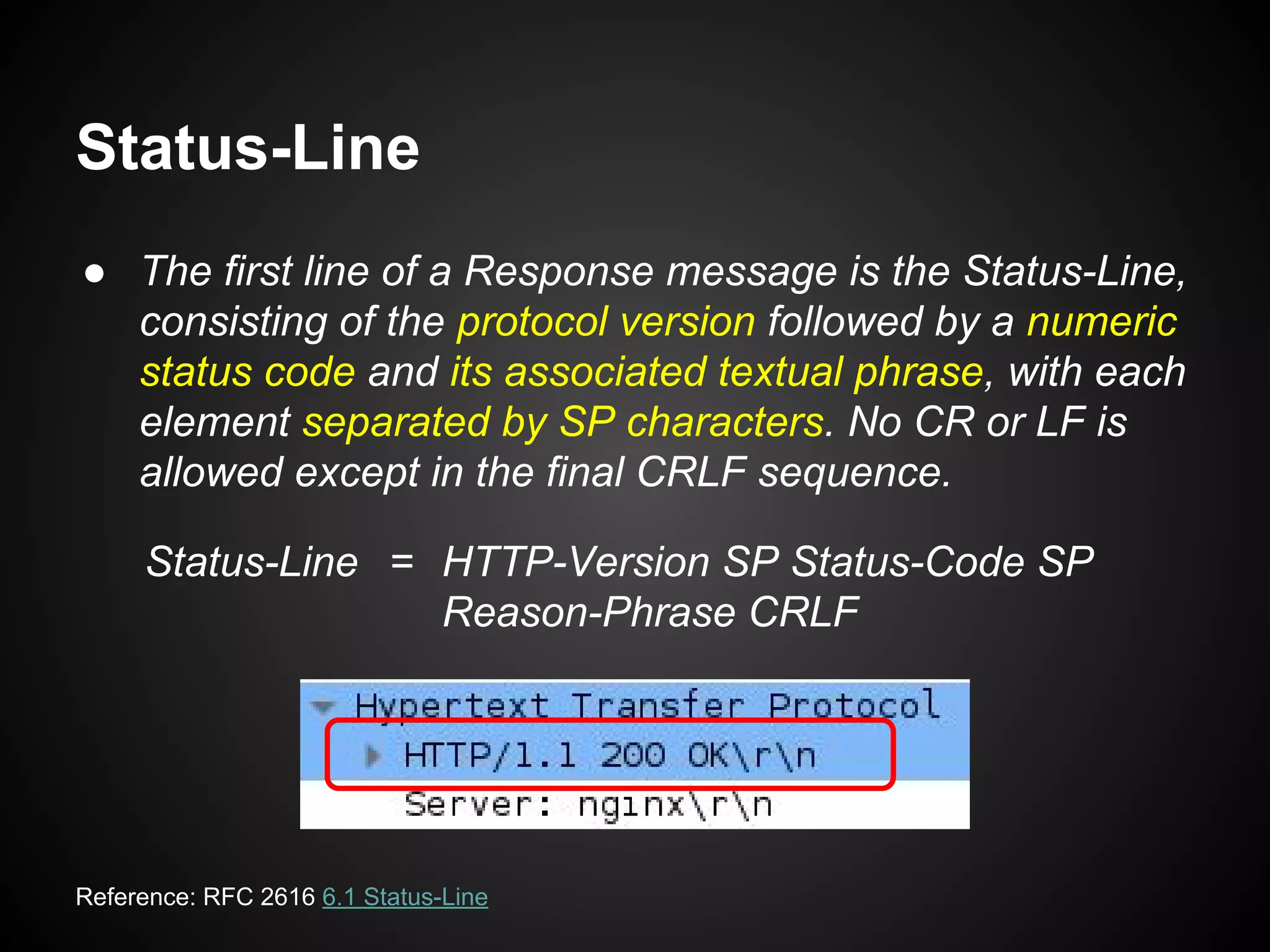


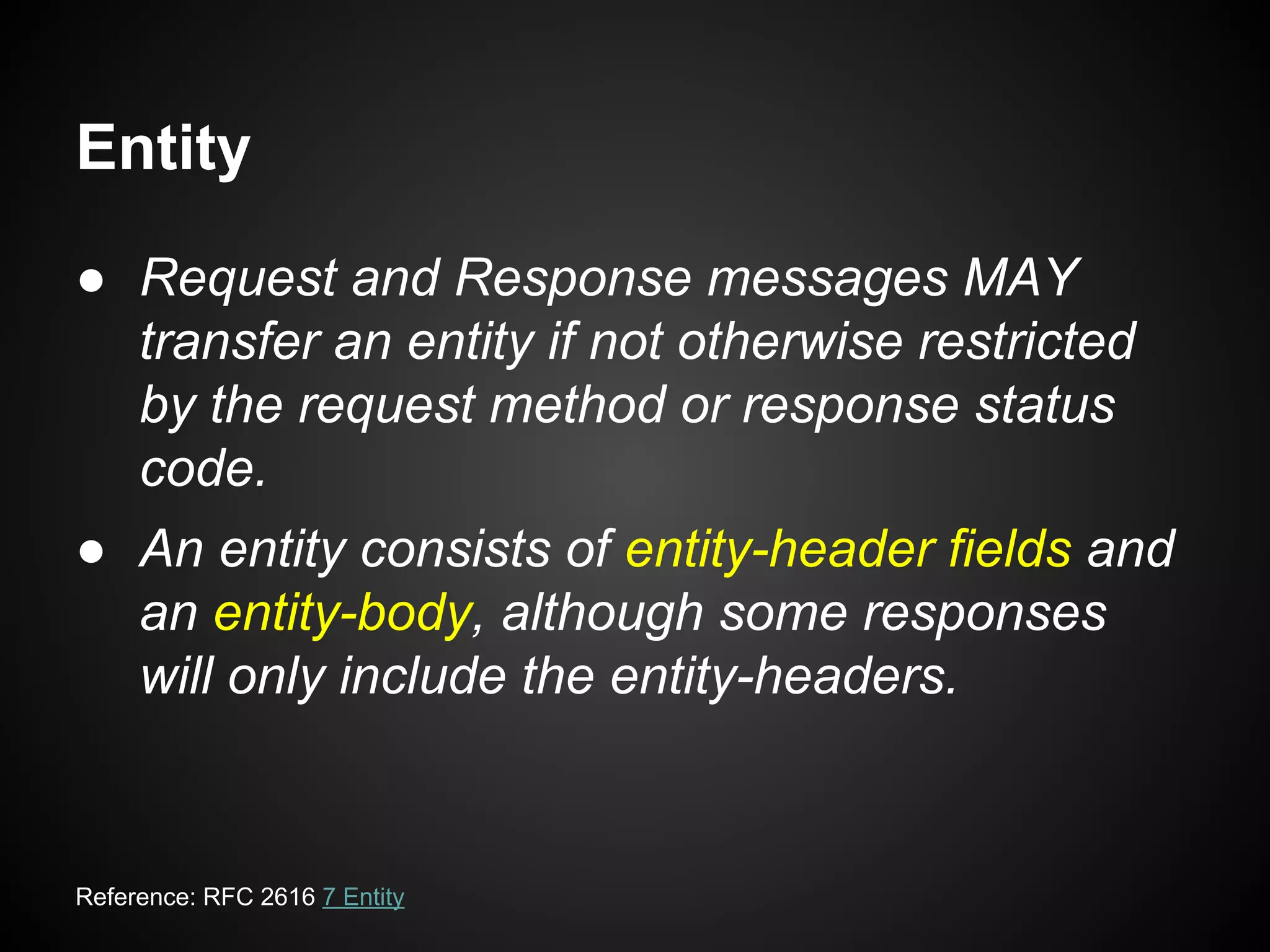
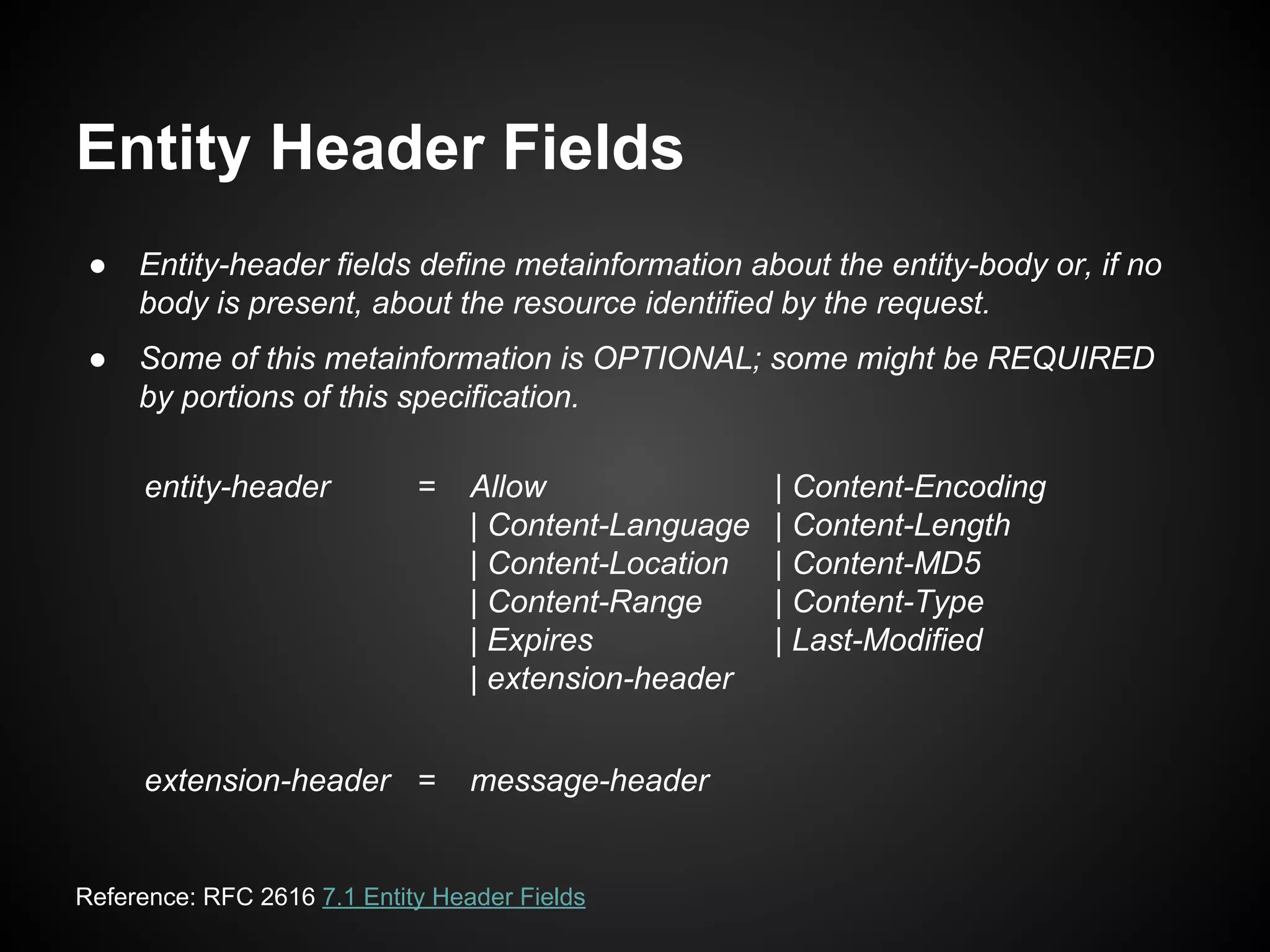
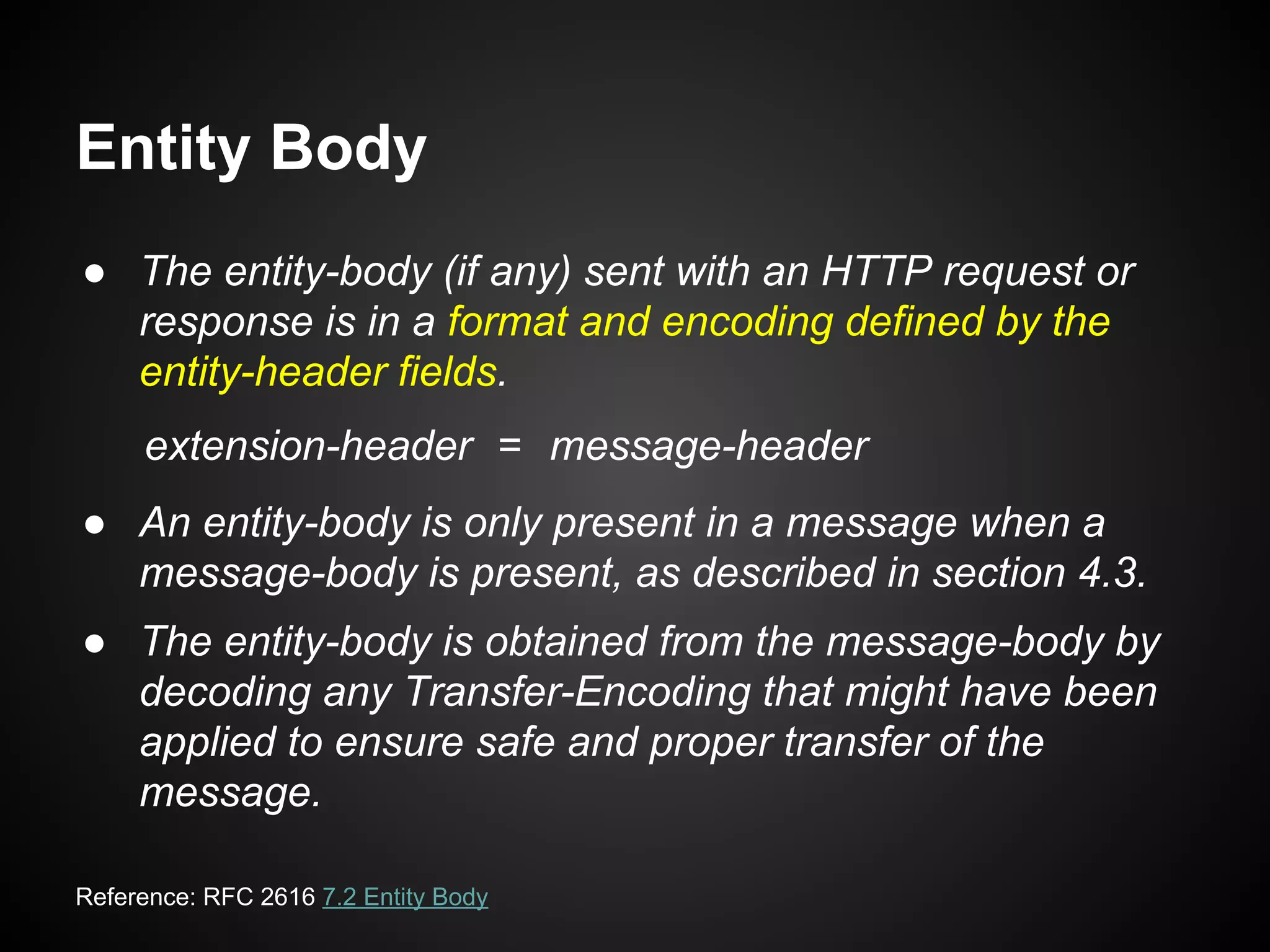
![After Sockets connected
Client HTTP ServerRequest Message:
Request-Line
*(( general-header
| request-header
| entity-header ) CRLF)
CRLF
[ message-body ]
Response Message:
Status-Line
*(( general-header
| response-header
| entity-header ) CRLF)
CRLF
[ message-body ]](https://image.slidesharecdn.com/buildamicrohttpserverforembeddedsystem-161012205755/75/Build-a-Micro-HTTP-Server-for-Embedded-System-36-2048.jpg)
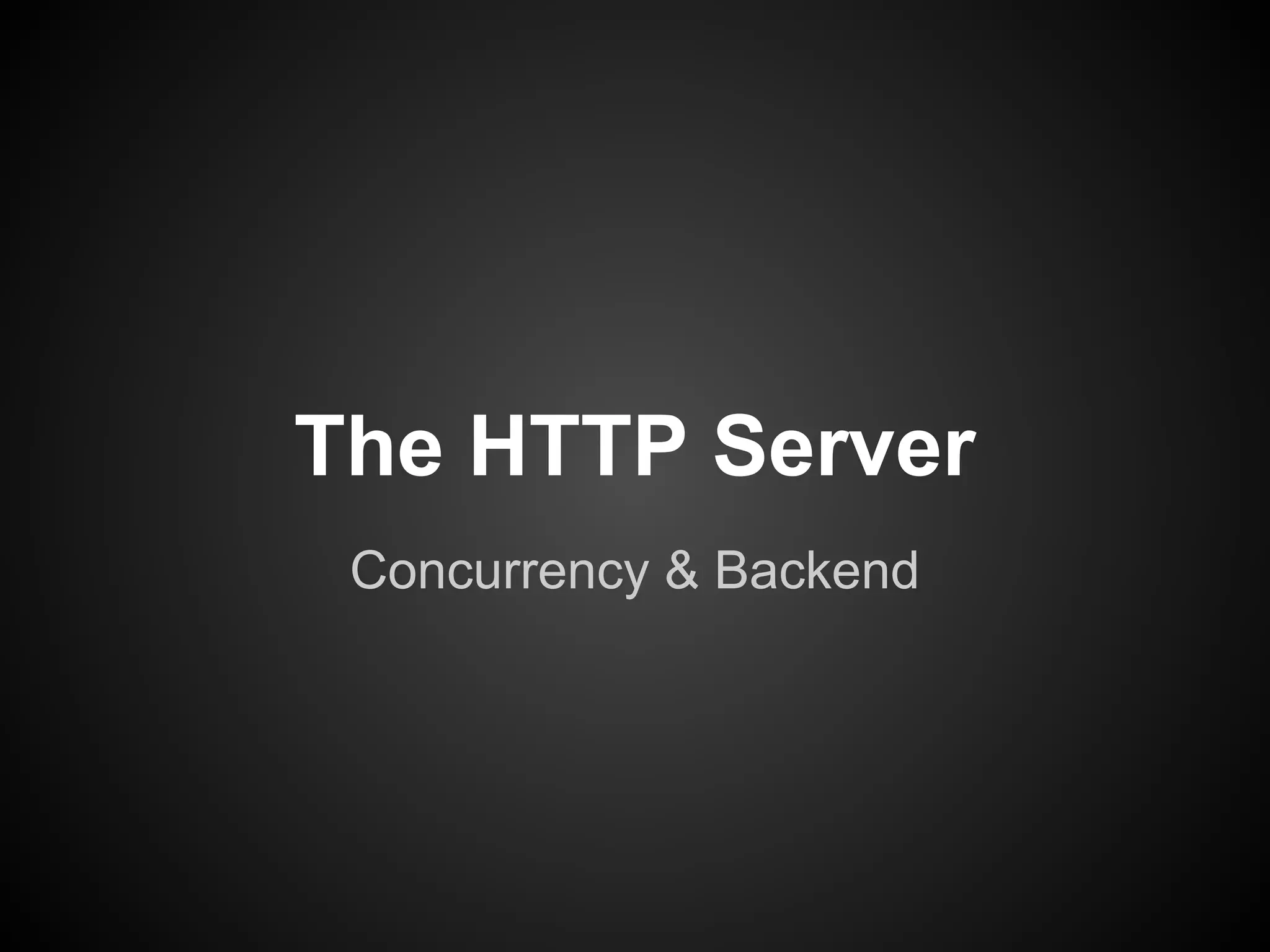

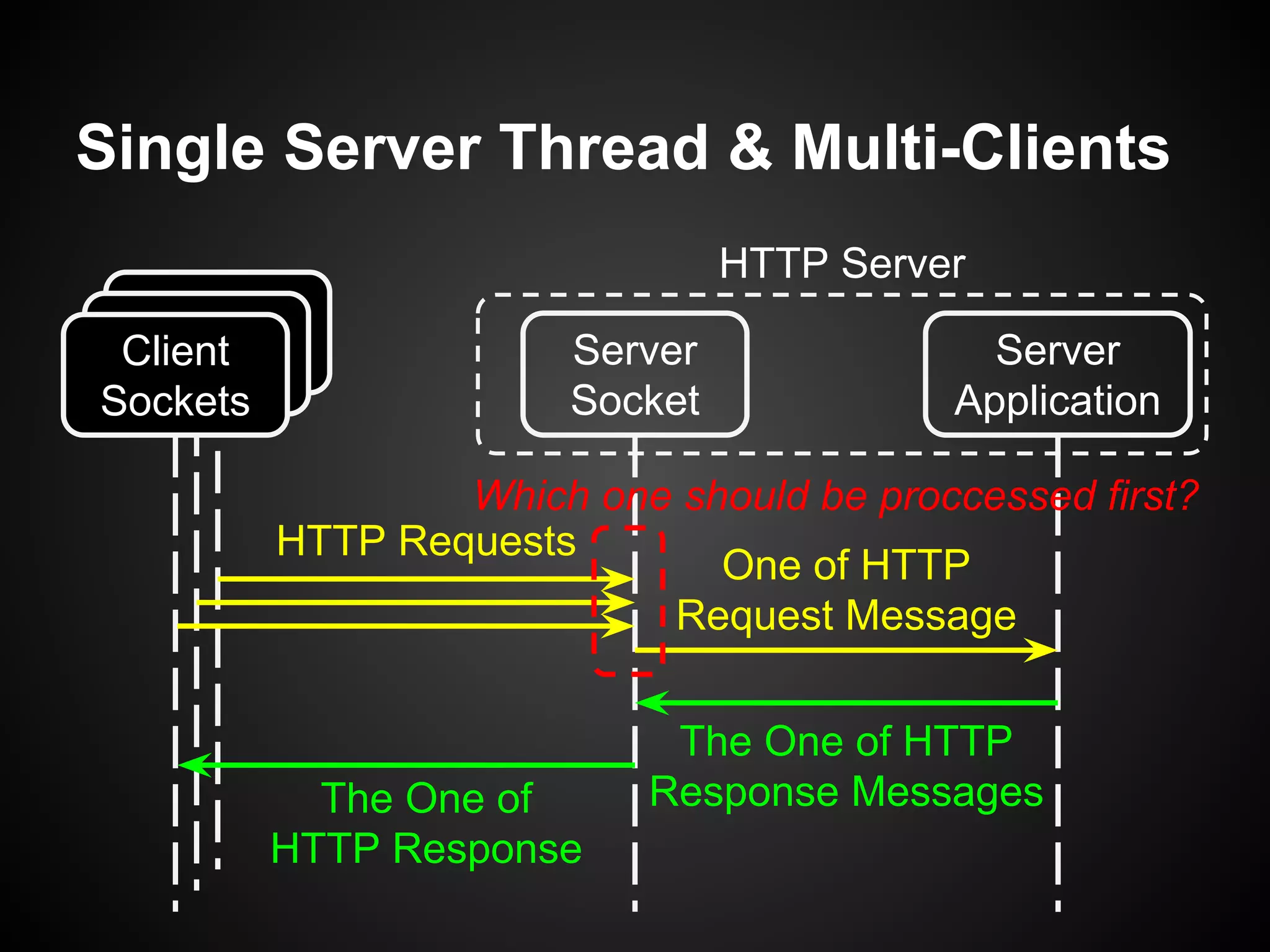
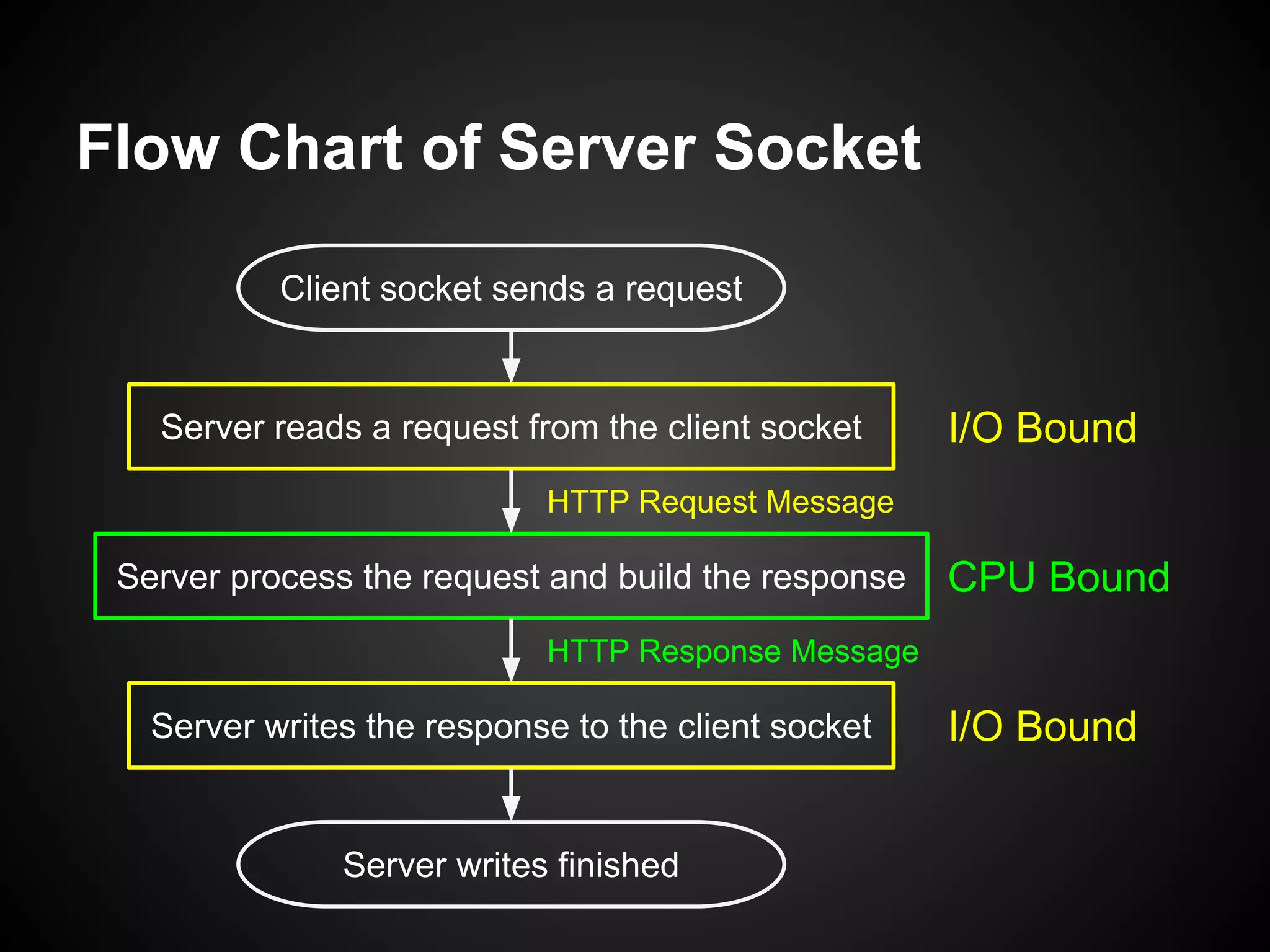
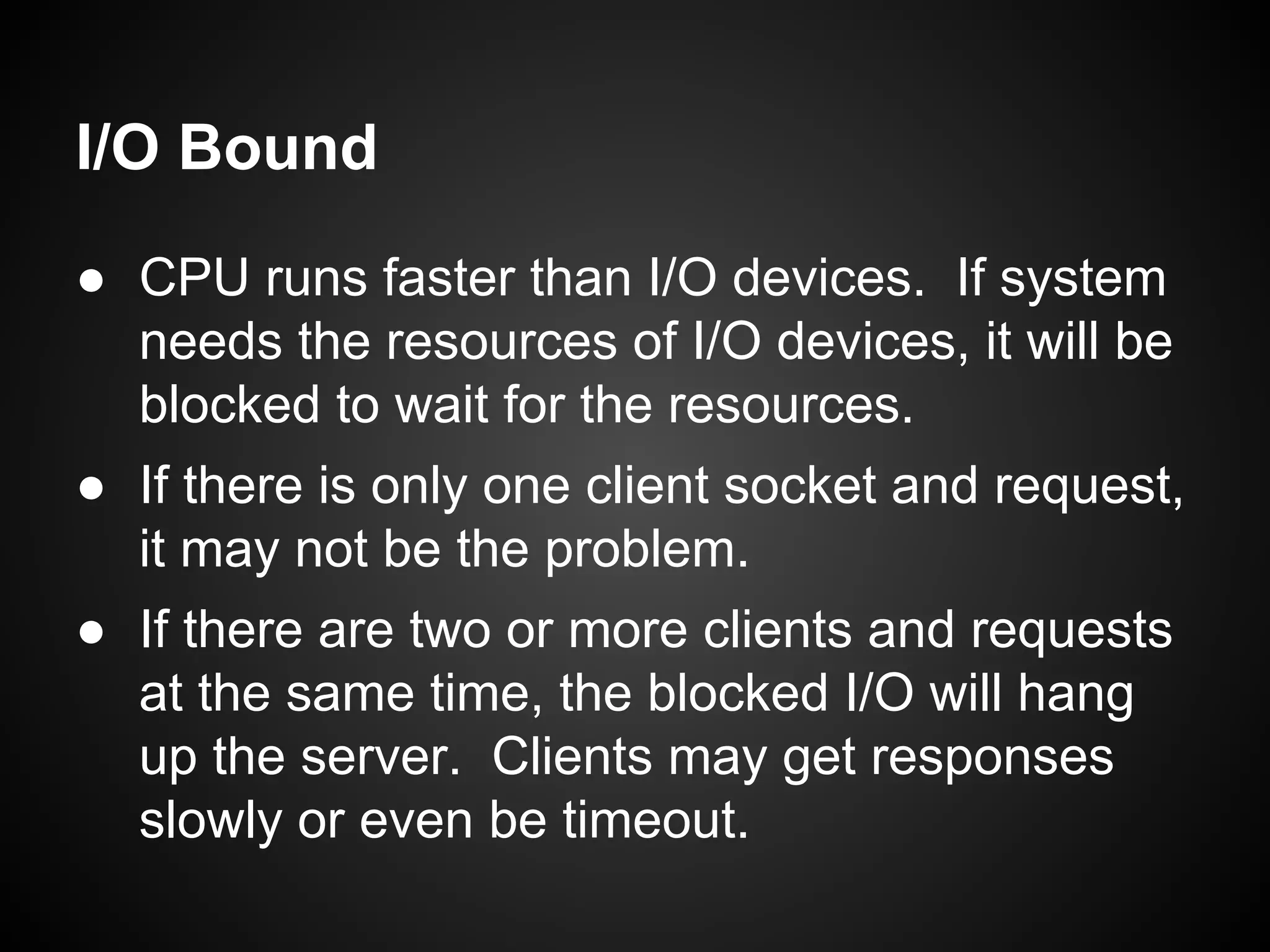
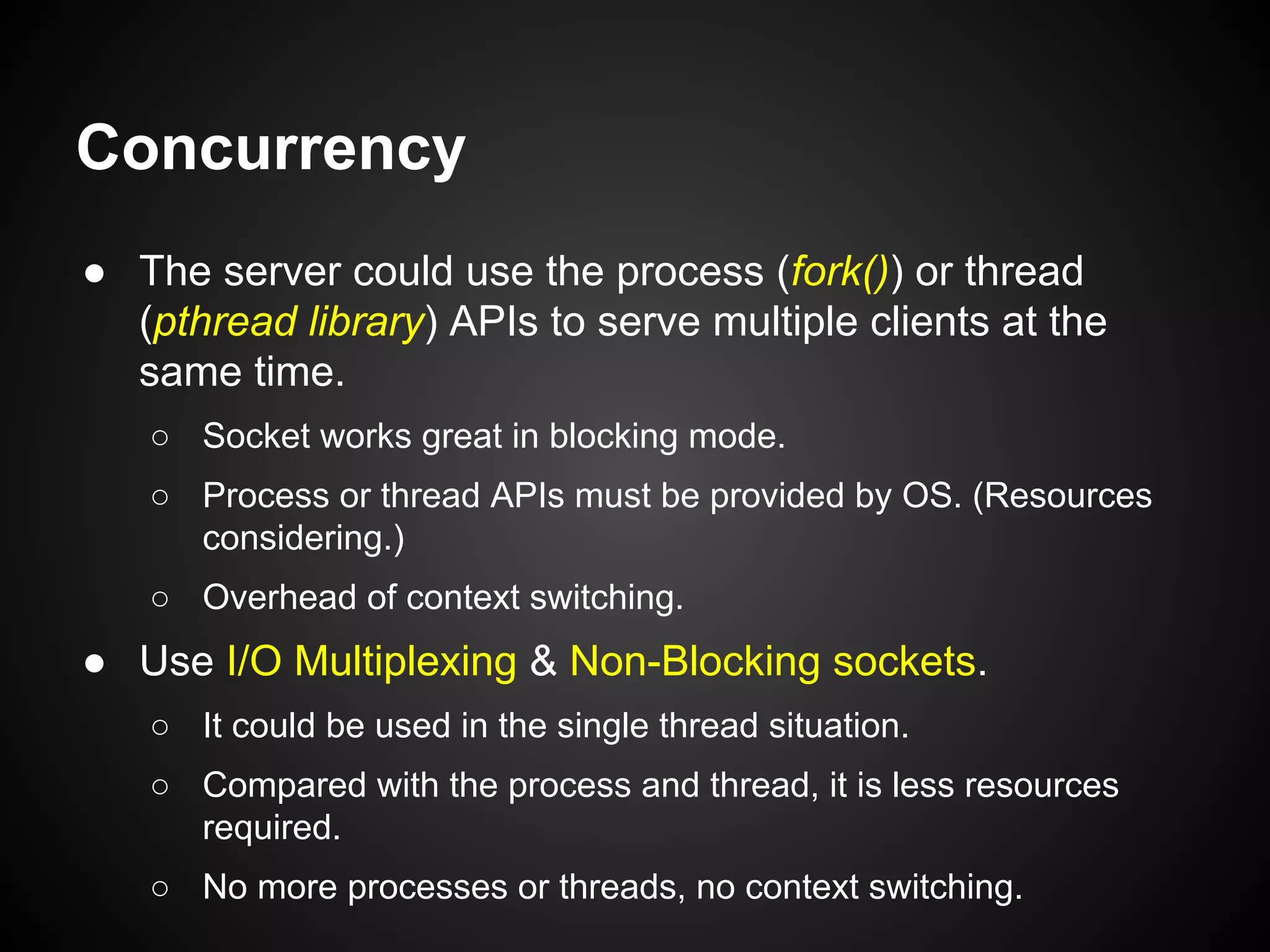
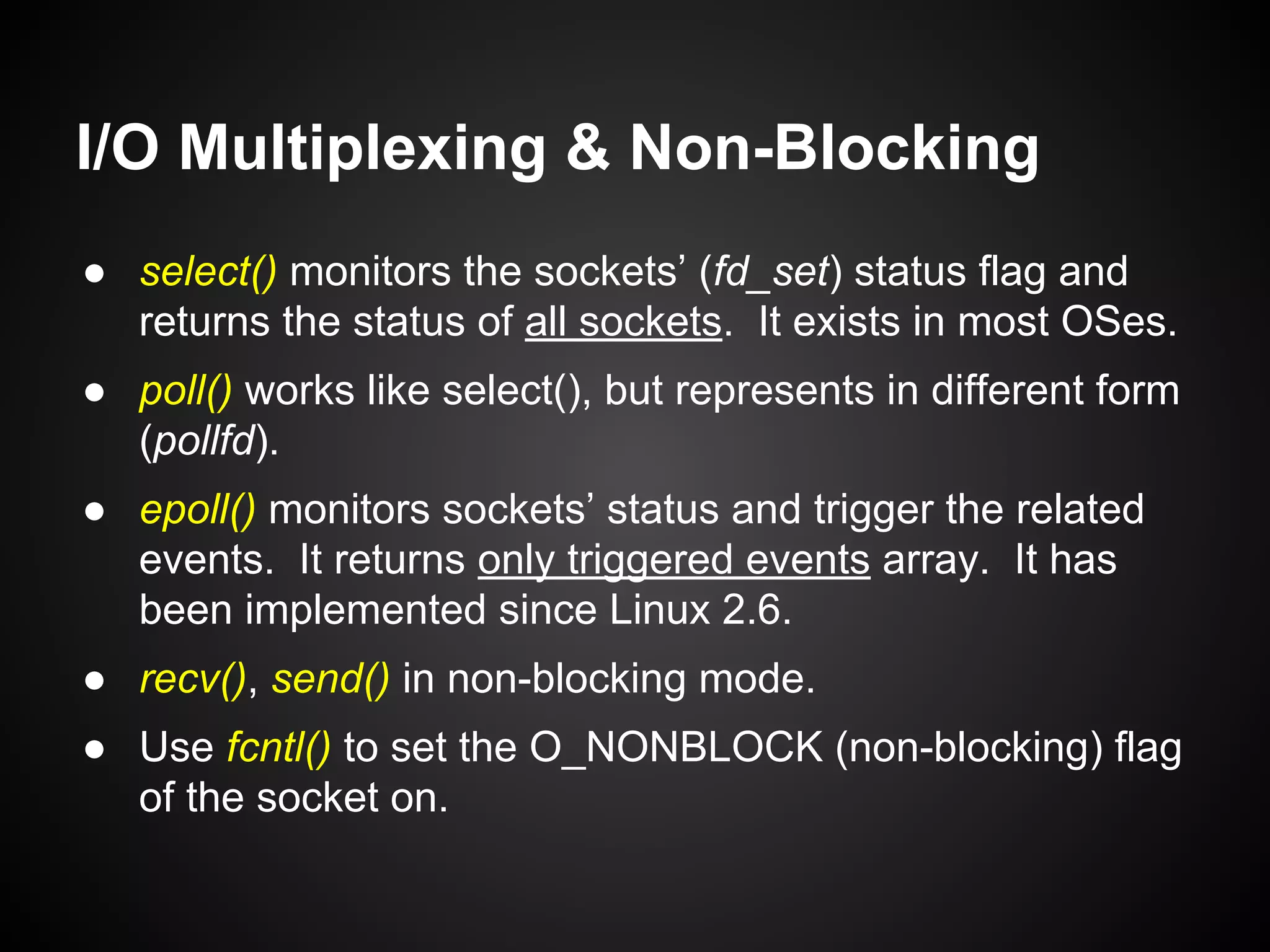
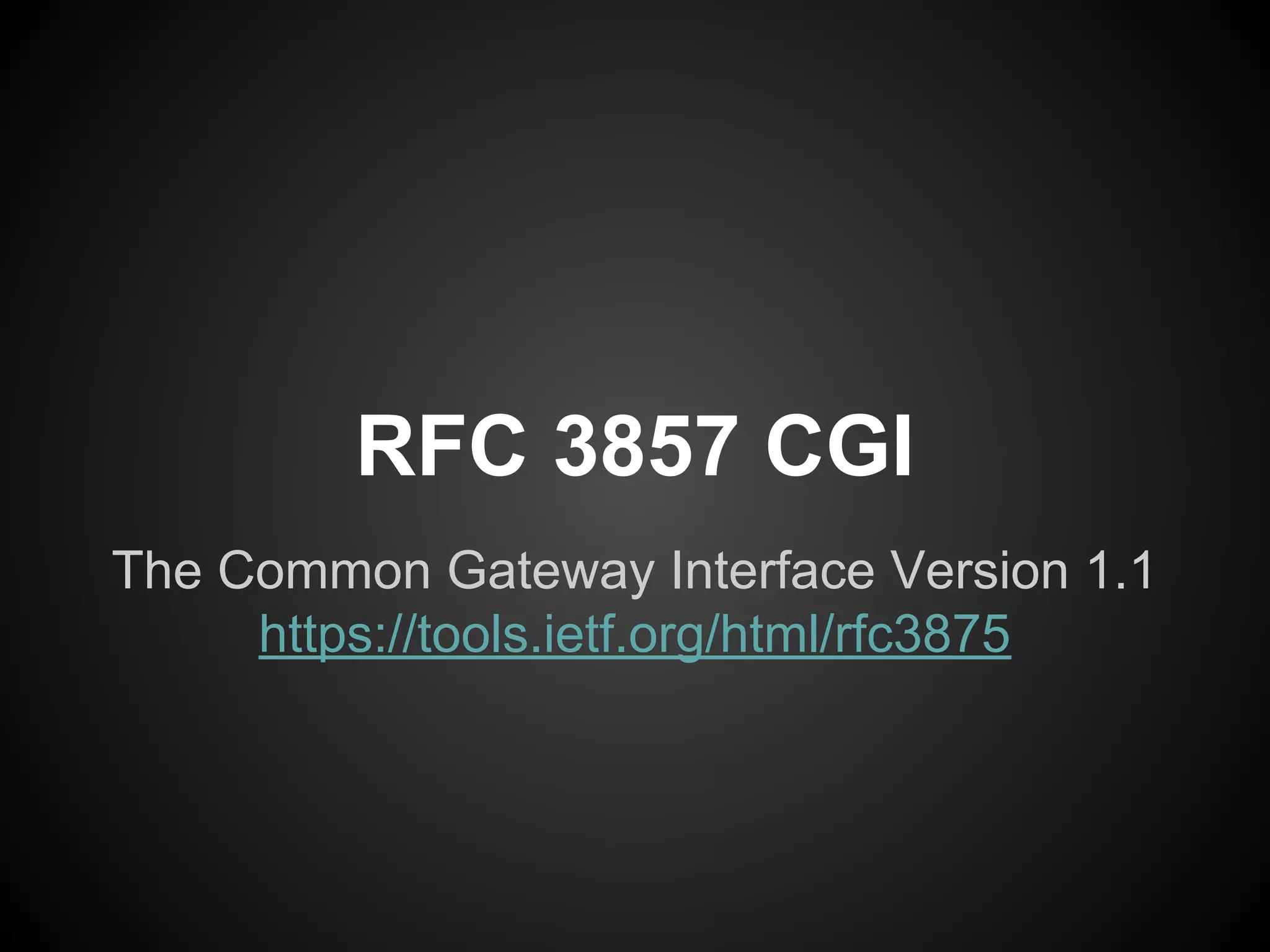
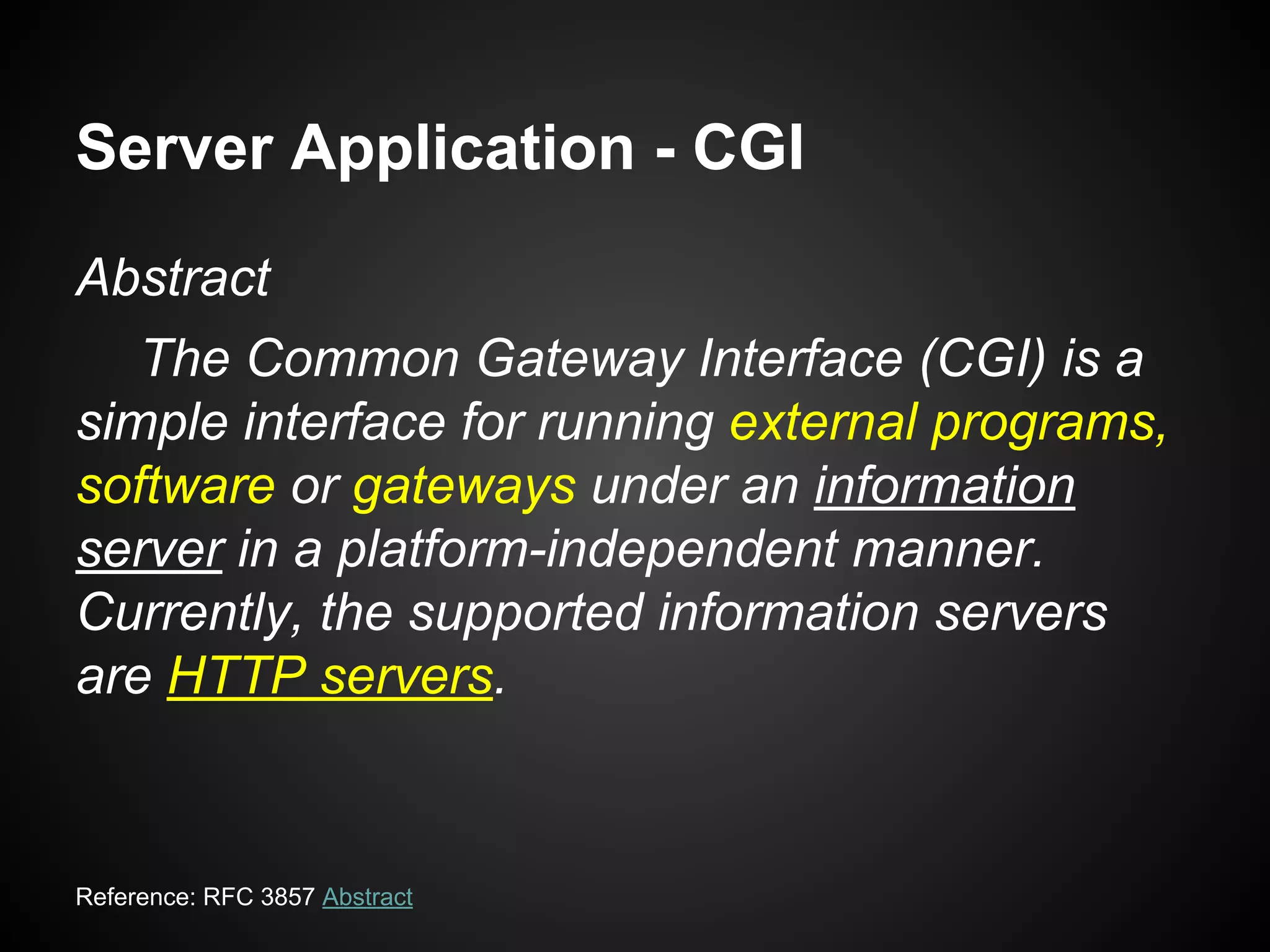
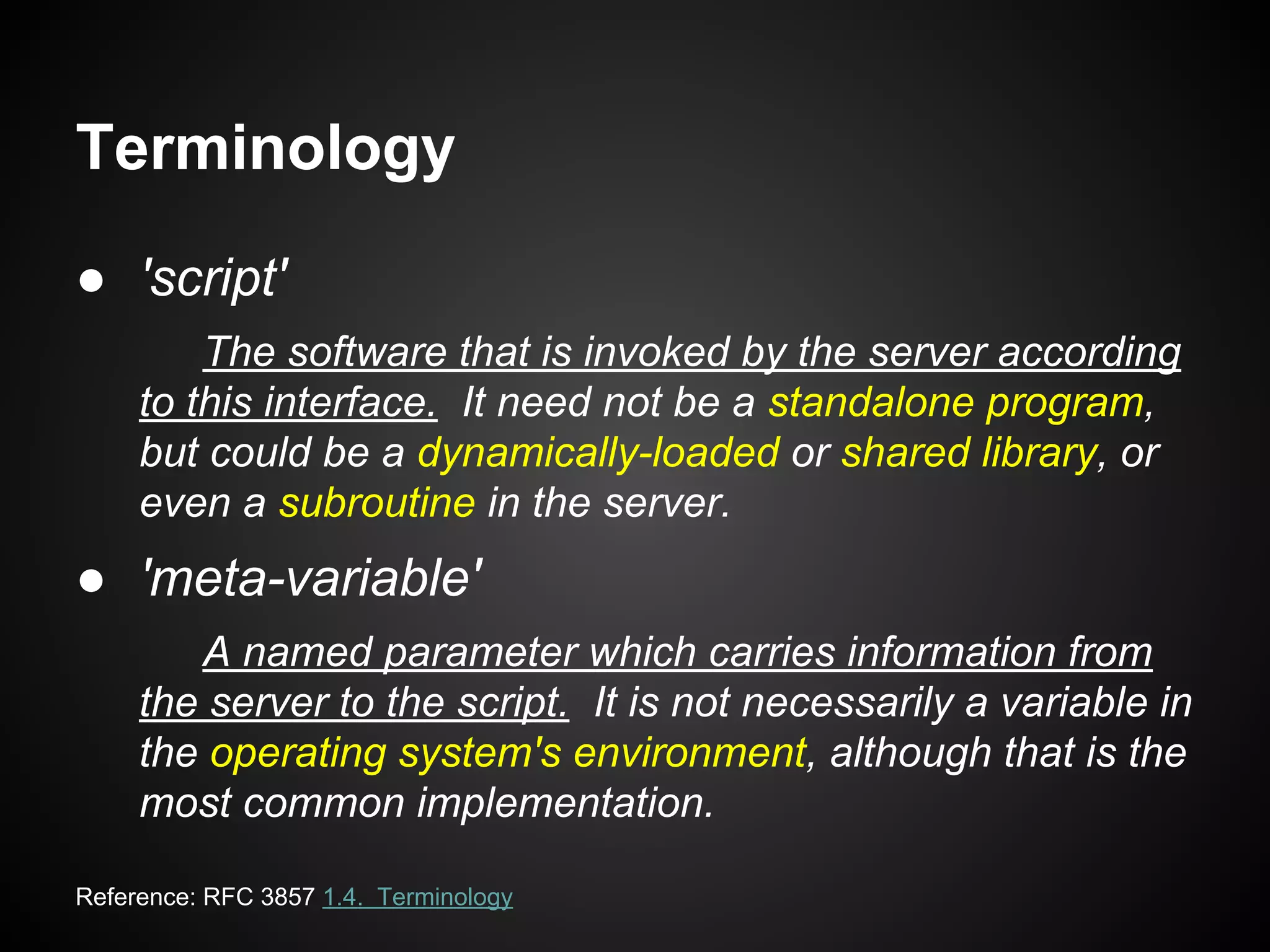
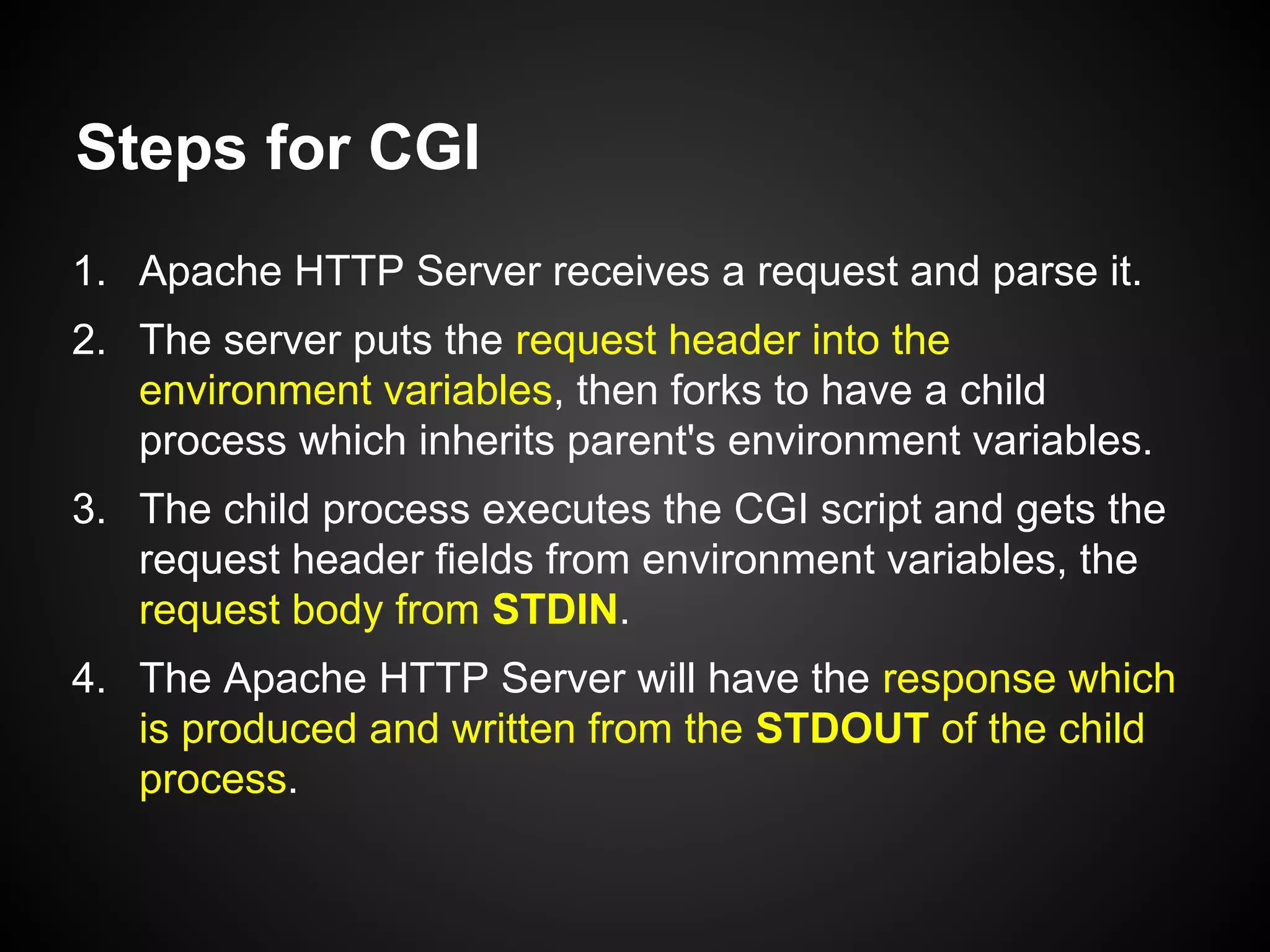
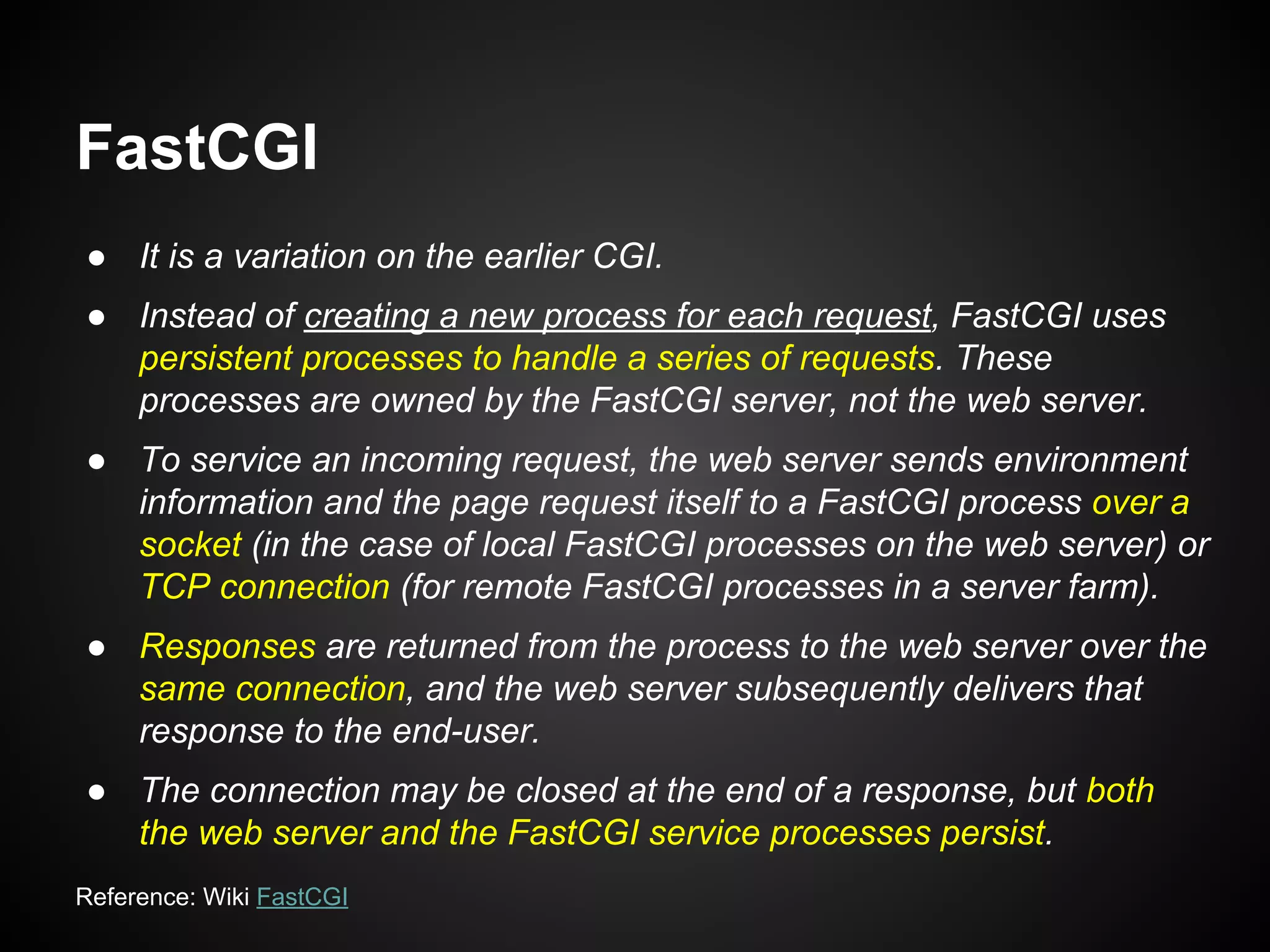
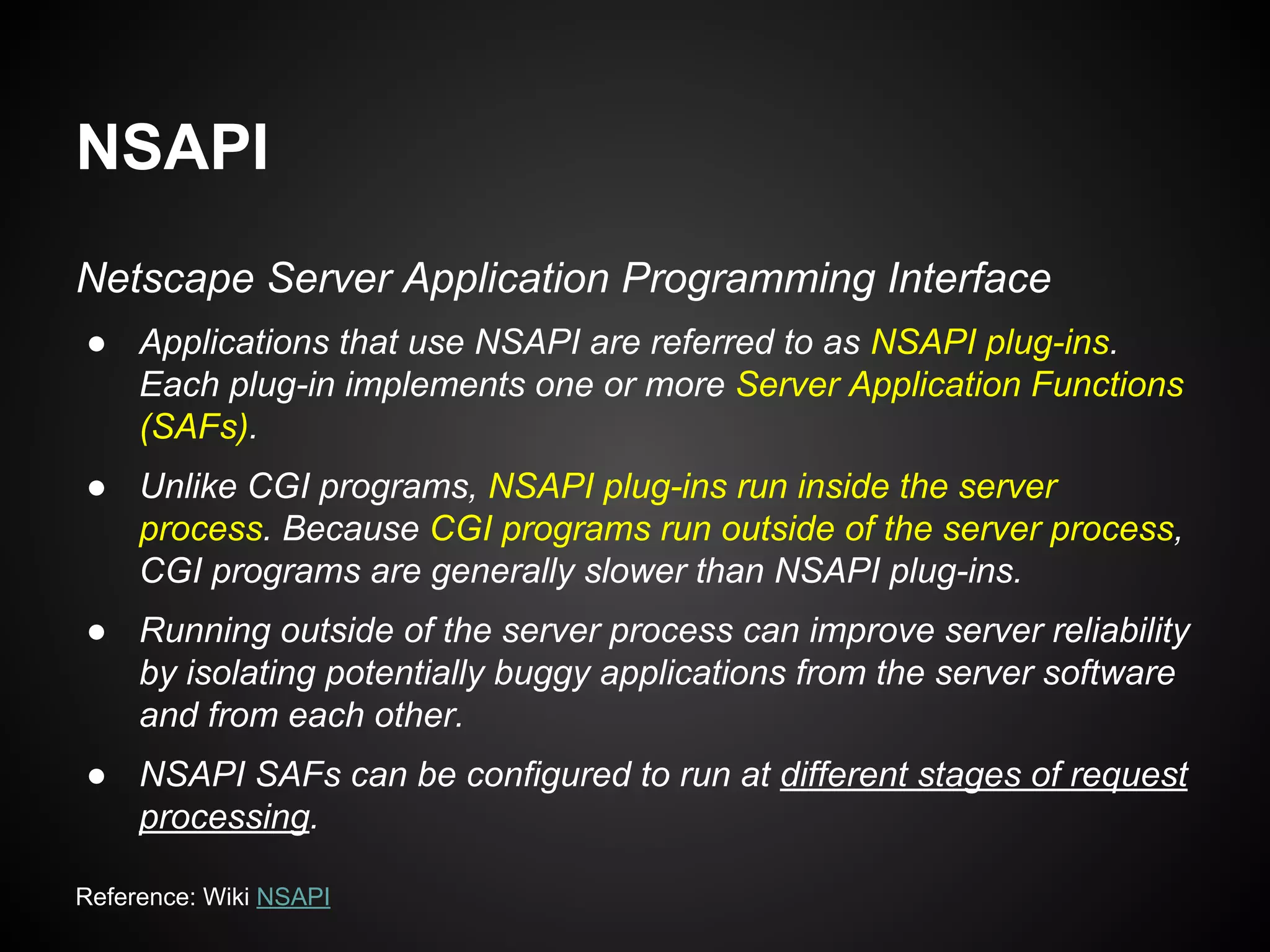
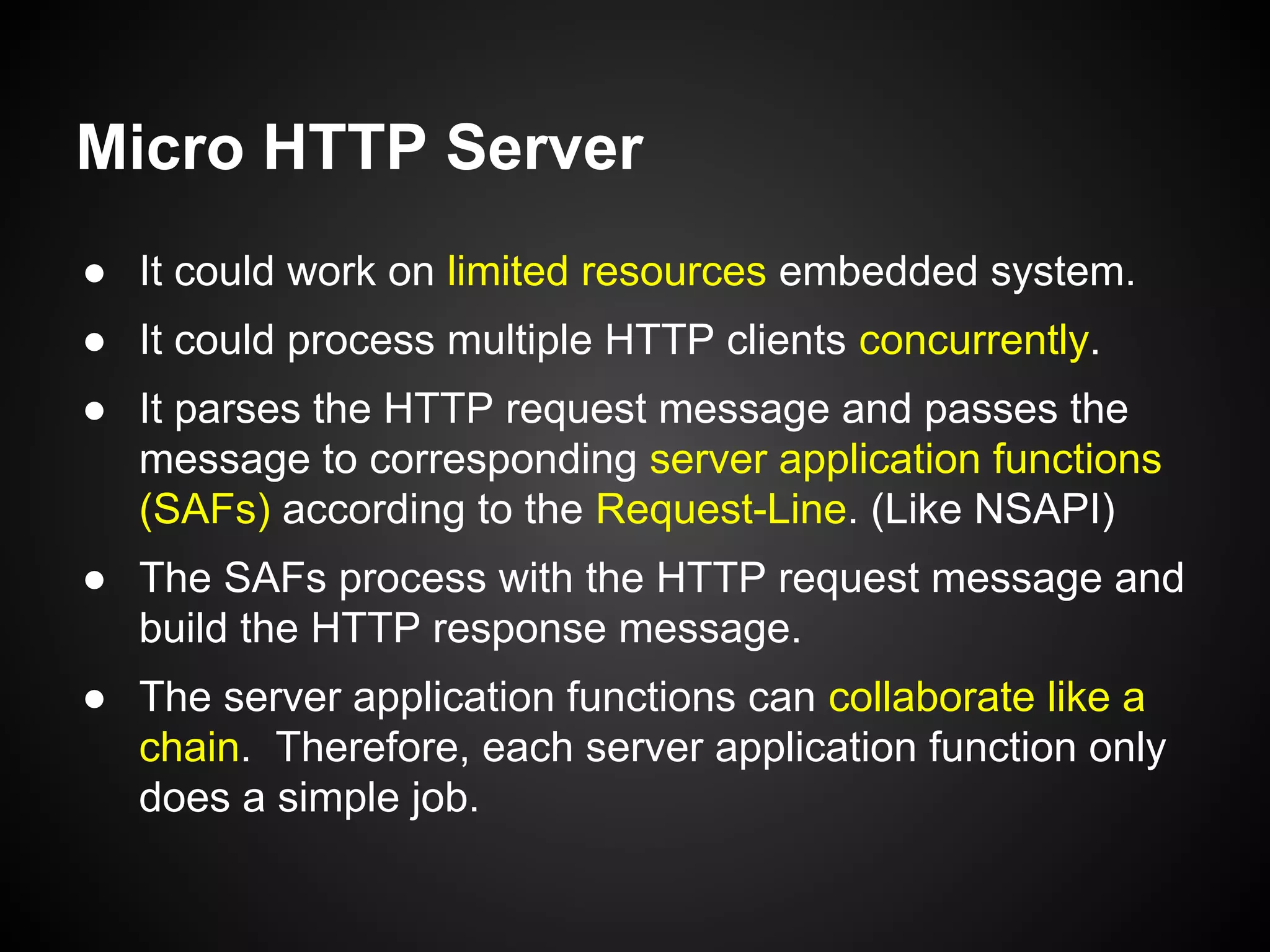
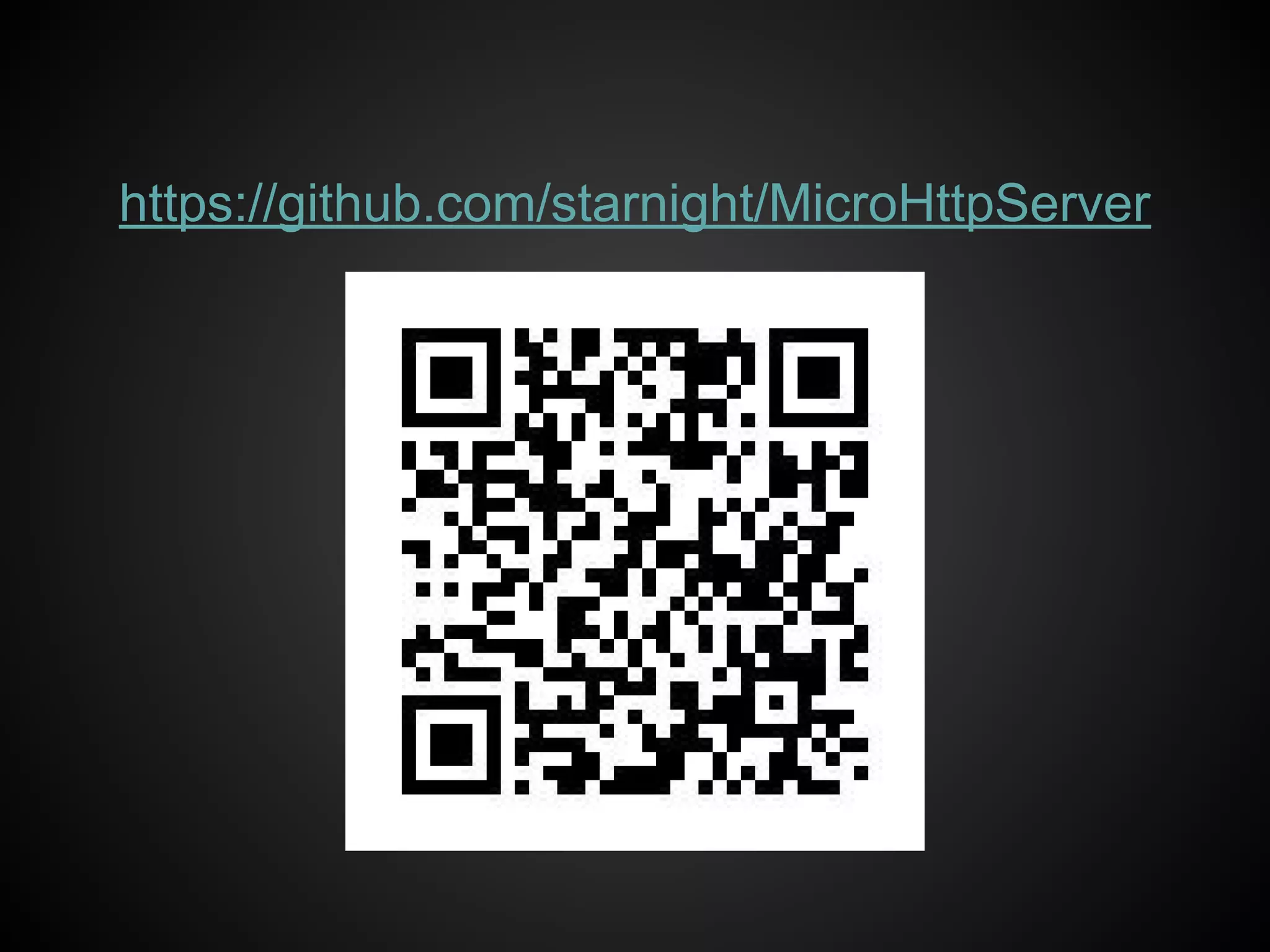
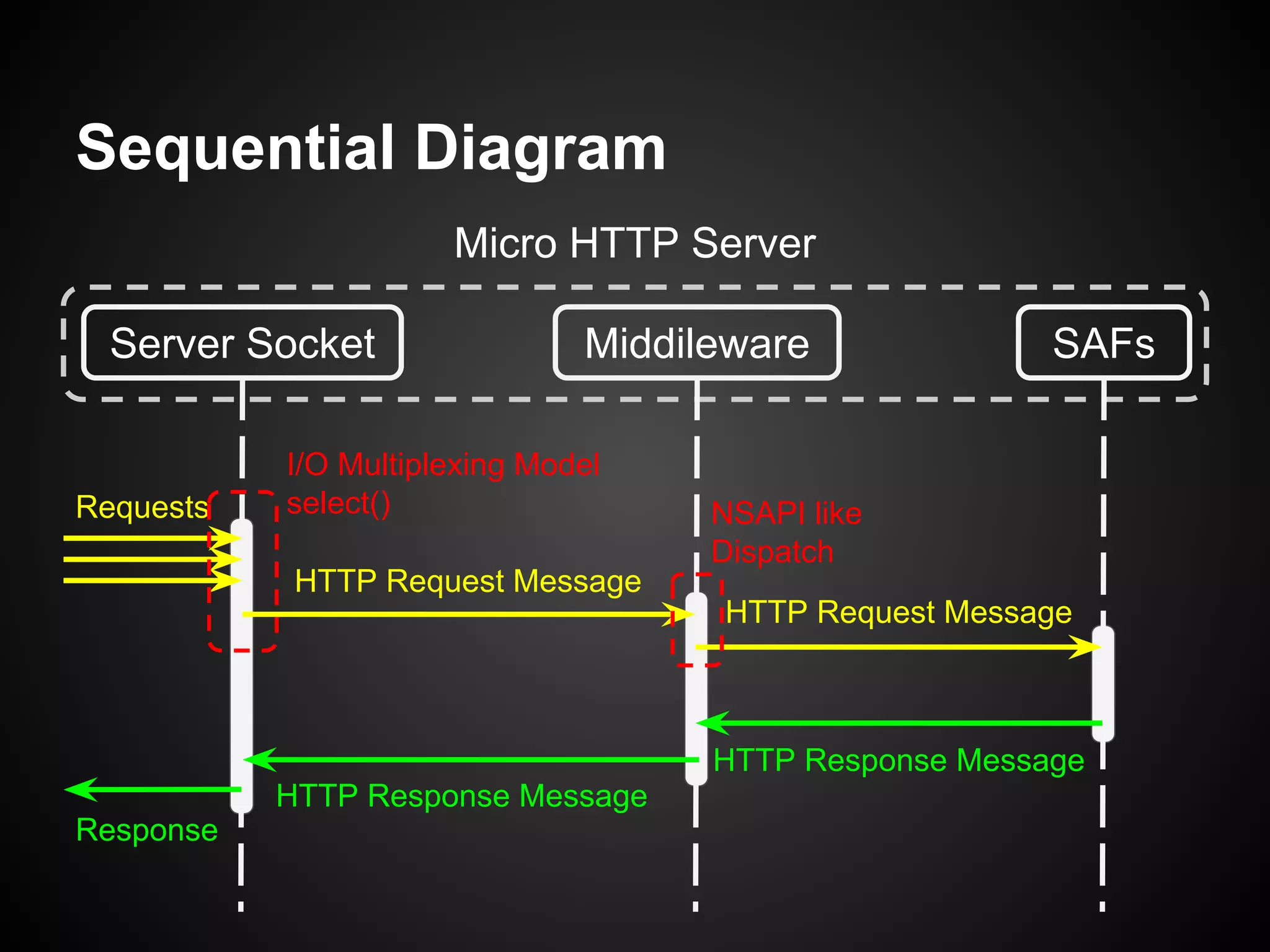
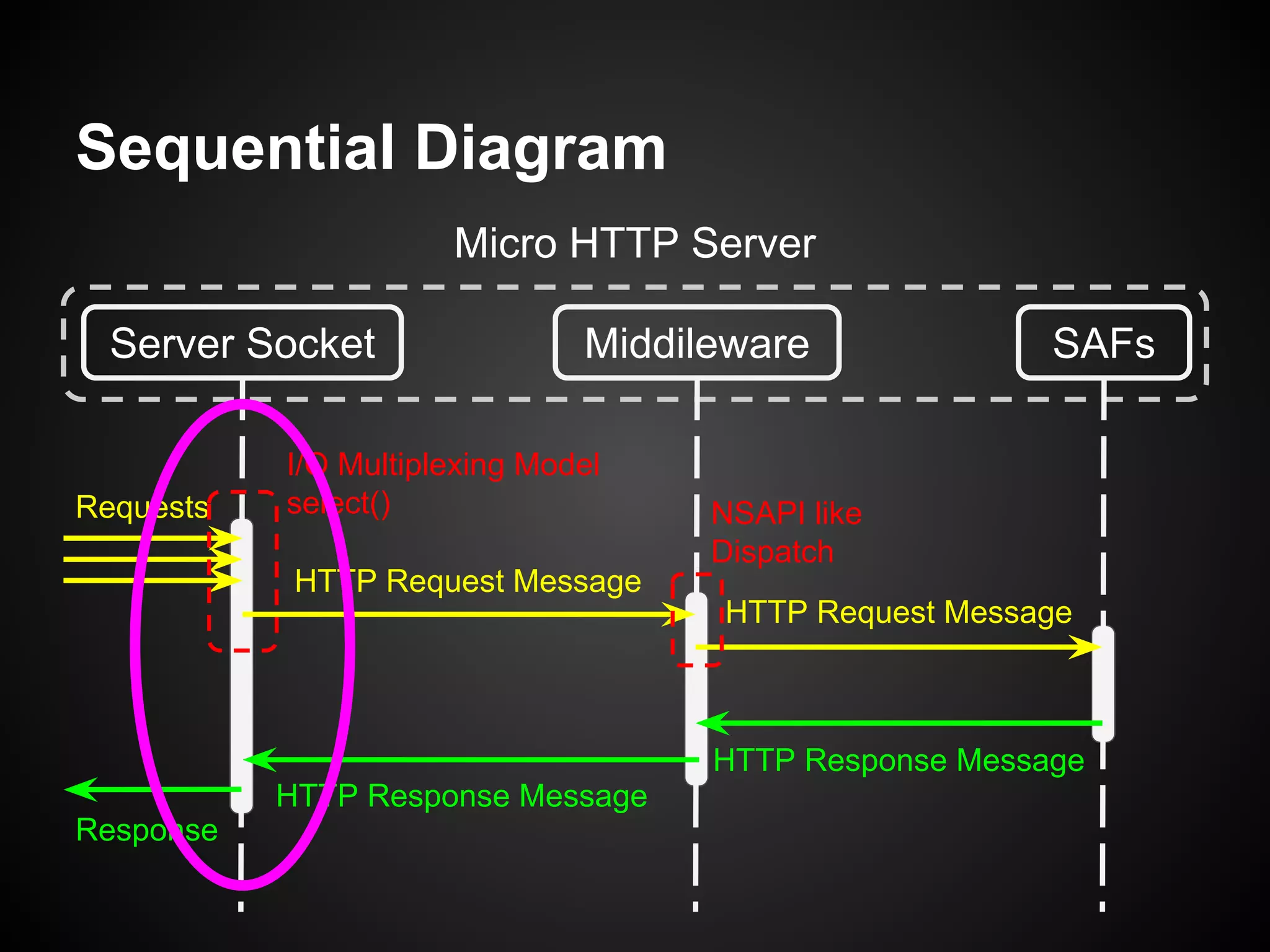
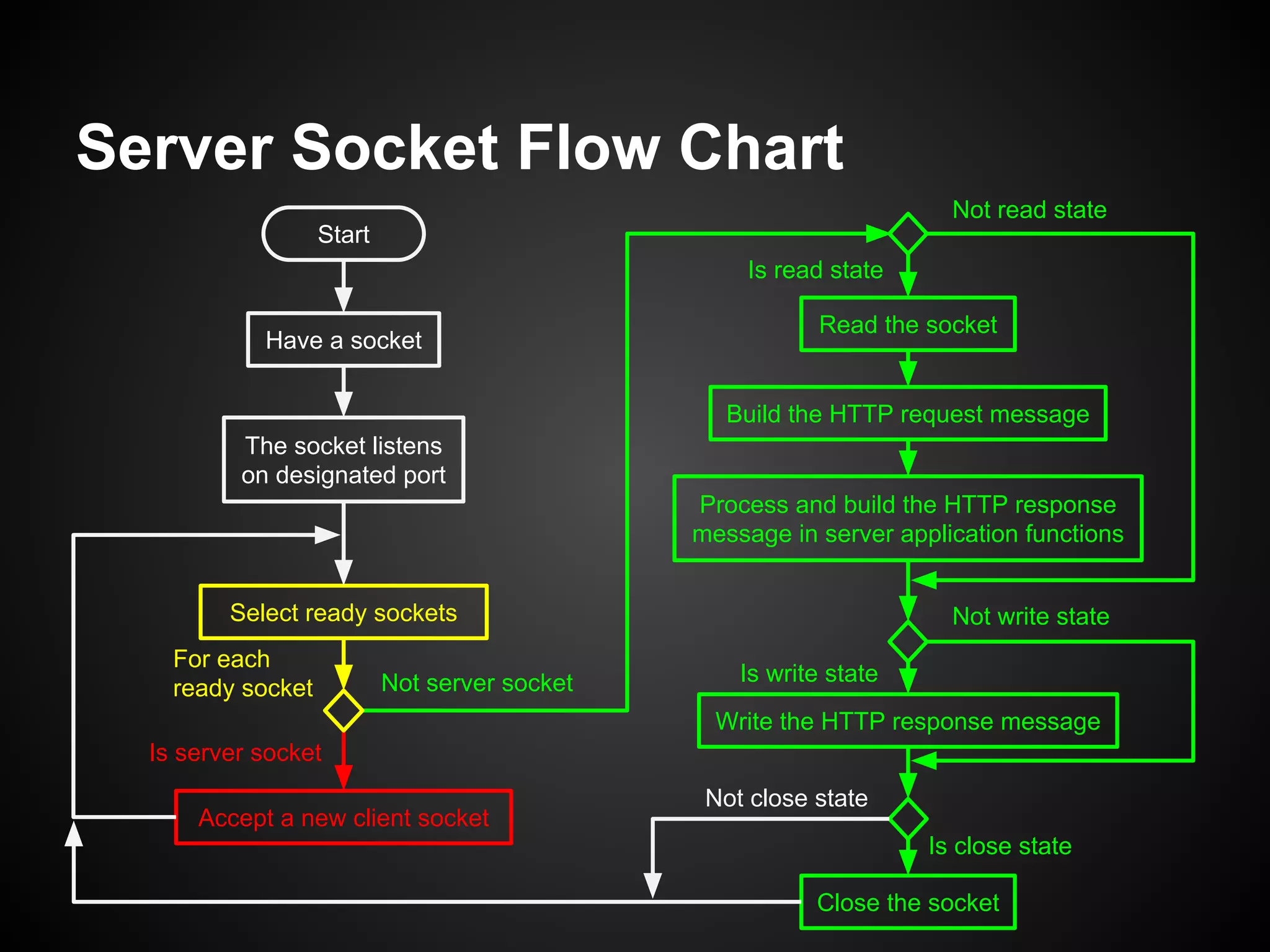
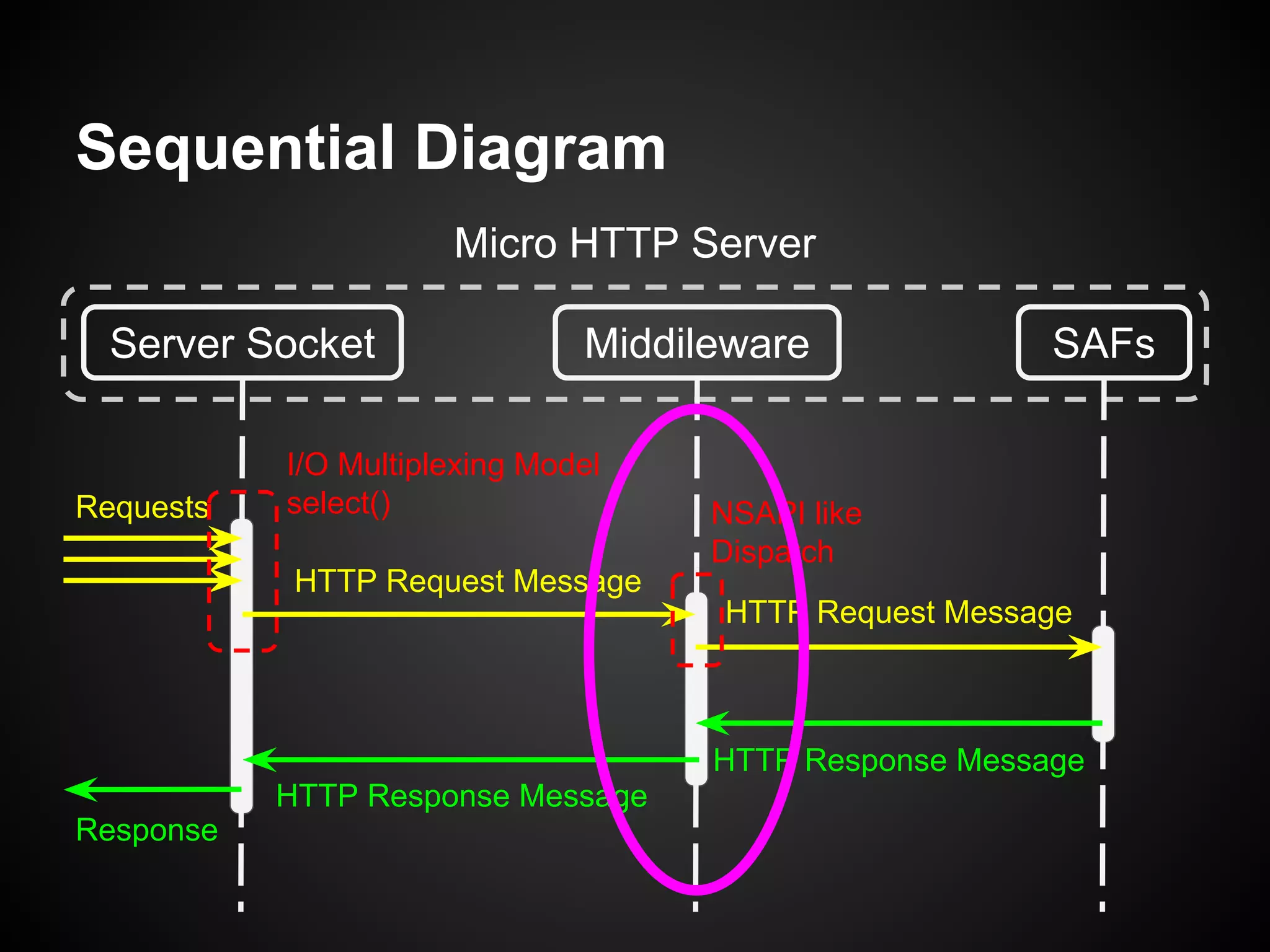
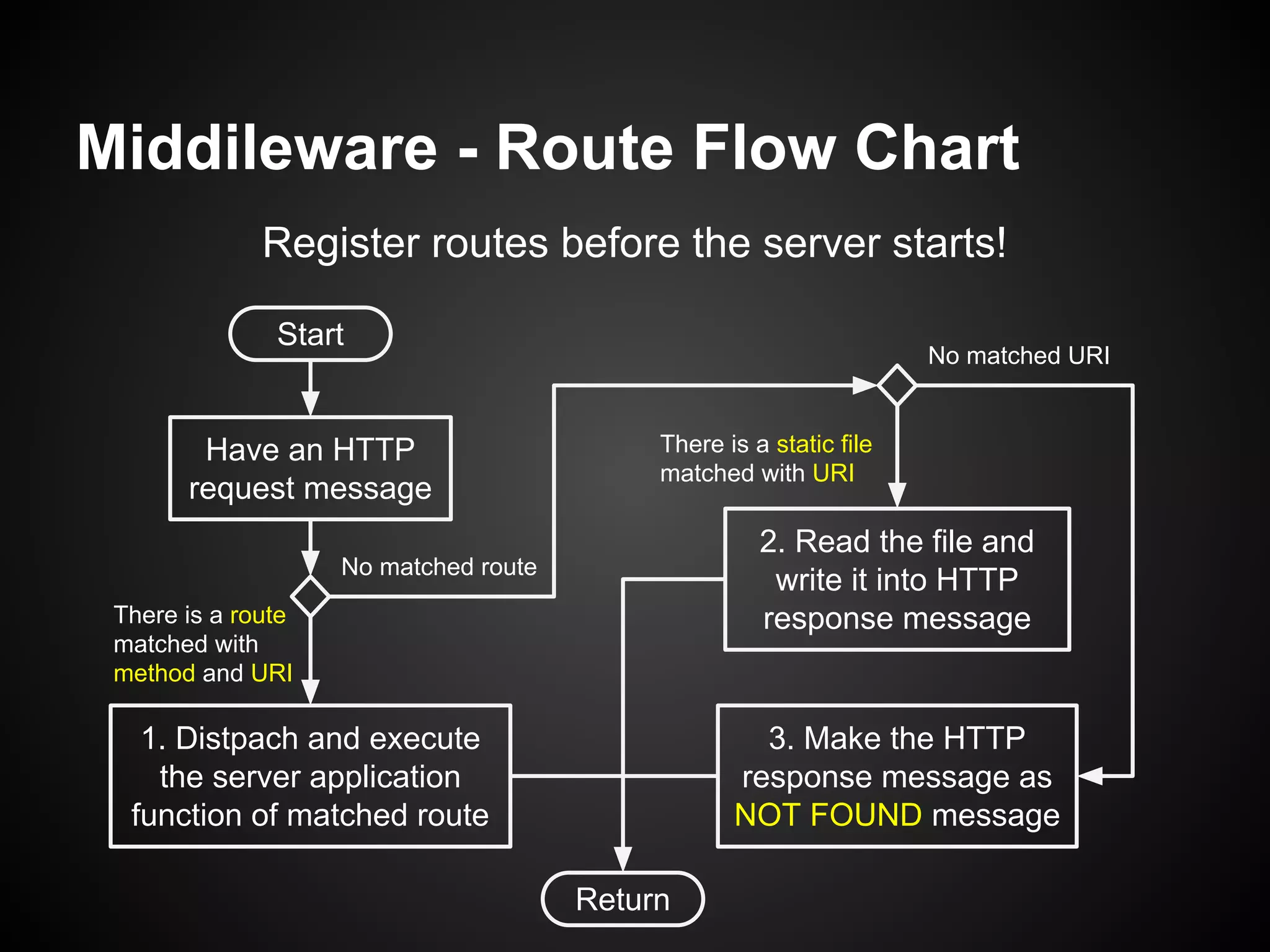
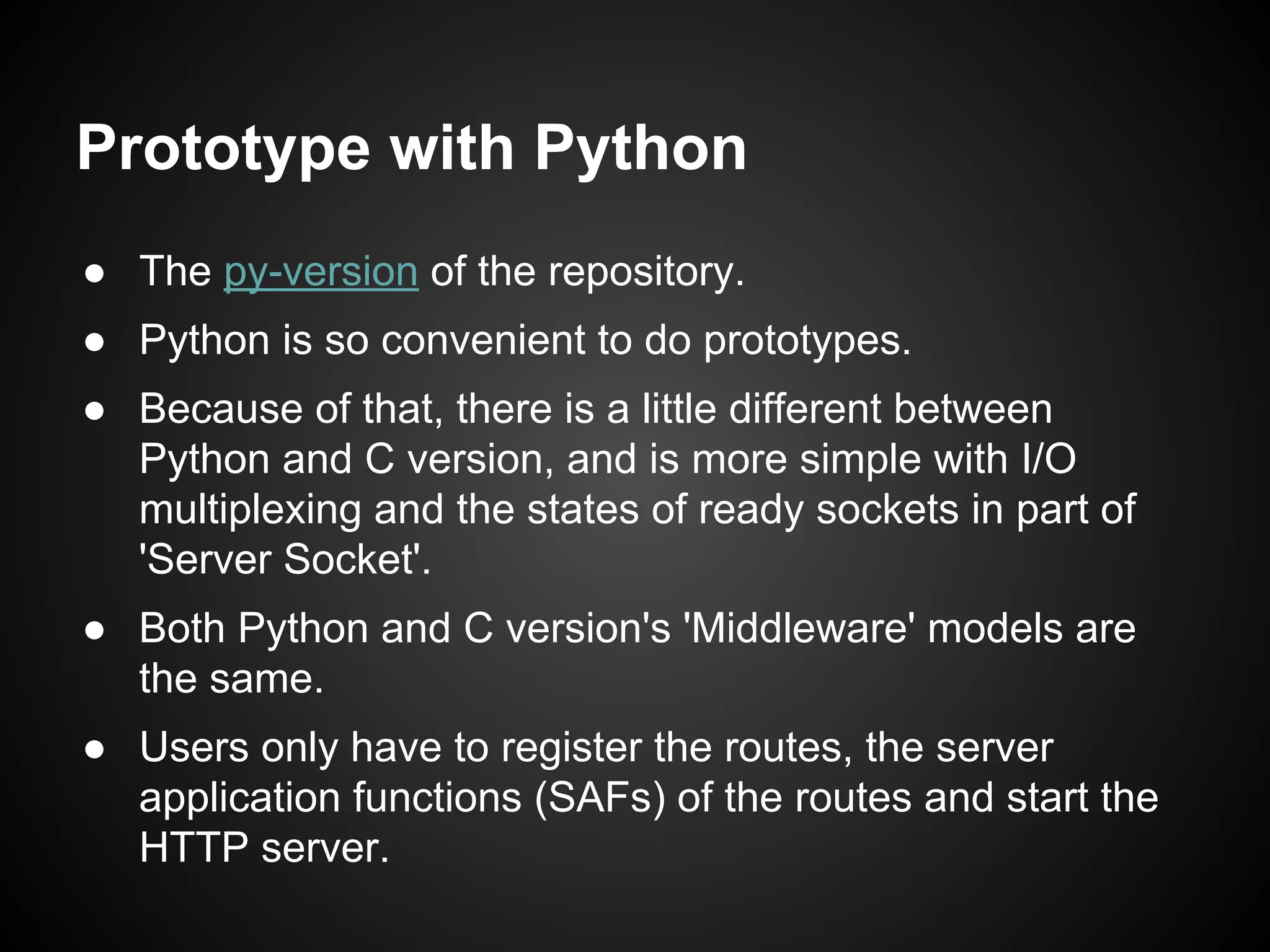


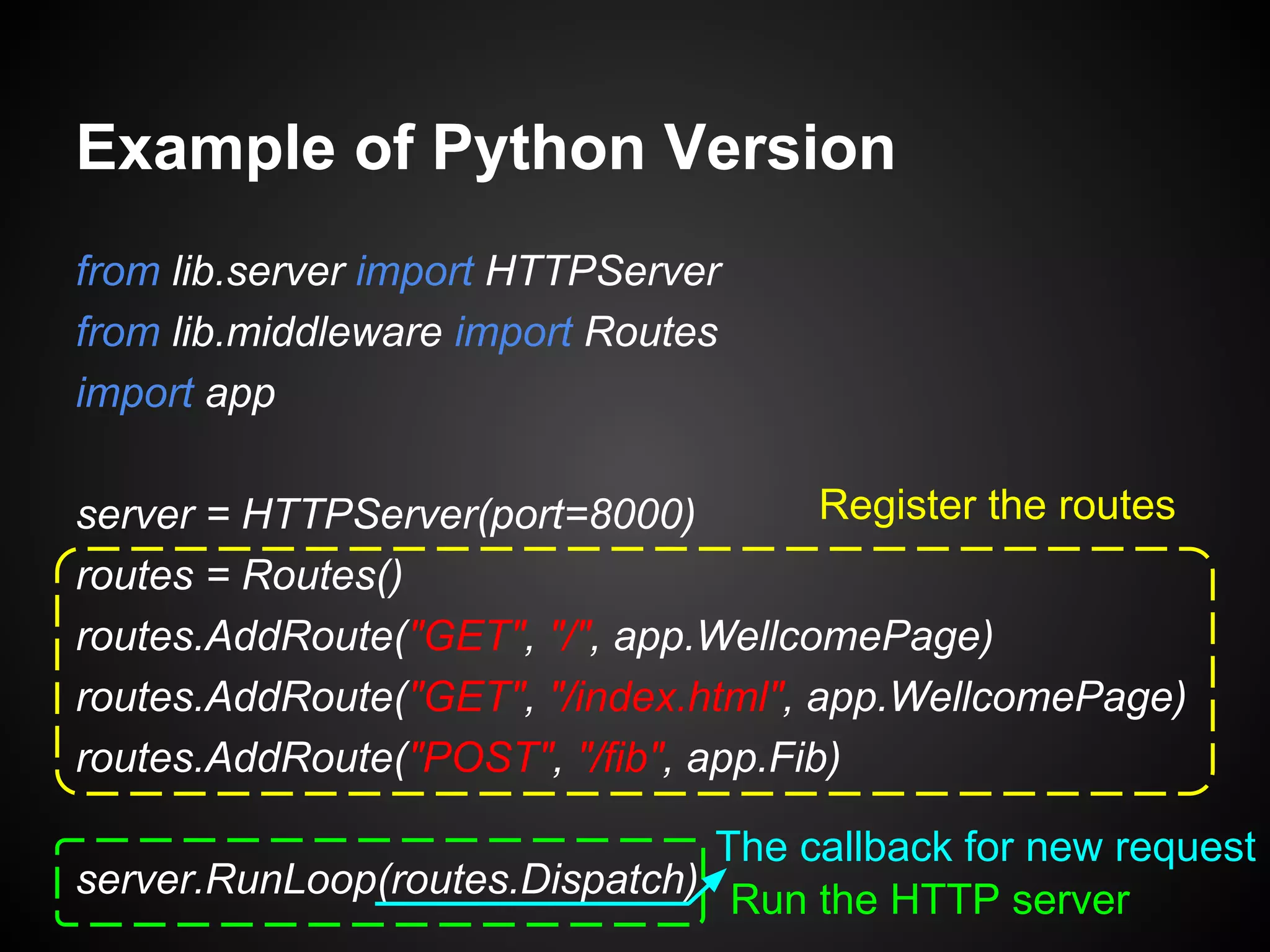
![def WellcomePage(req, res):
'''Default wellcome page which makes
response message.'''
# Build HTTP message body
res.Body = "<html><body>Hello!<br>"
res.Body += "It's {} for now.".format(
datetime.now().strftime("%Y-%m-%d %H:%M:%S"))
res.Body += "</body></html>"
# Build HTTP message header
res.Header.append(["Status", "200 OK"])
res.Header.append(
["Content-Type", "text/html; charset=UTF-8;"])](https://image.slidesharecdn.com/buildamicrohttpserverforembeddedsystem-161012205755/75/Build-a-Micro-HTTP-Server-for-Embedded-System-61-2048.jpg)
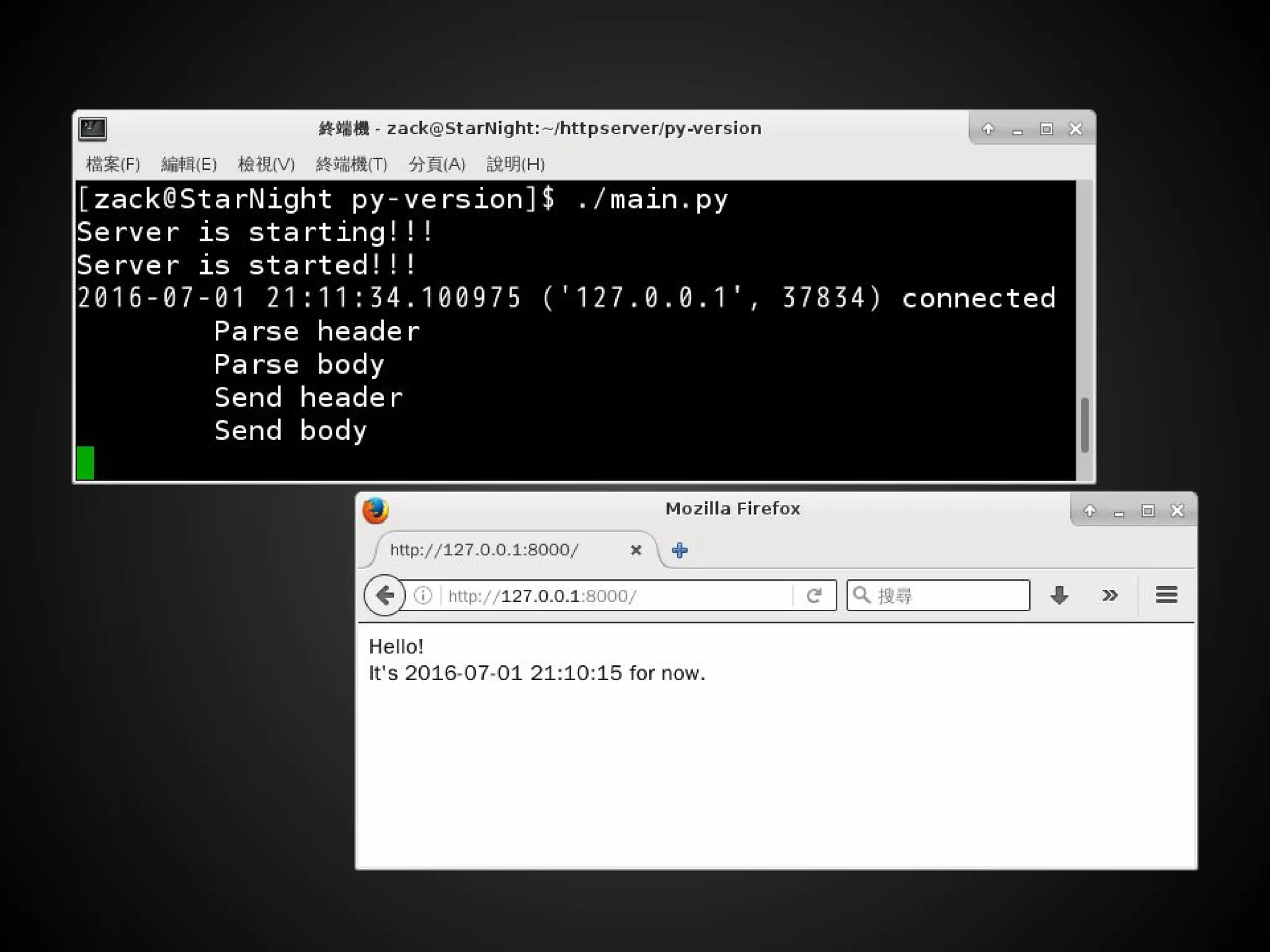
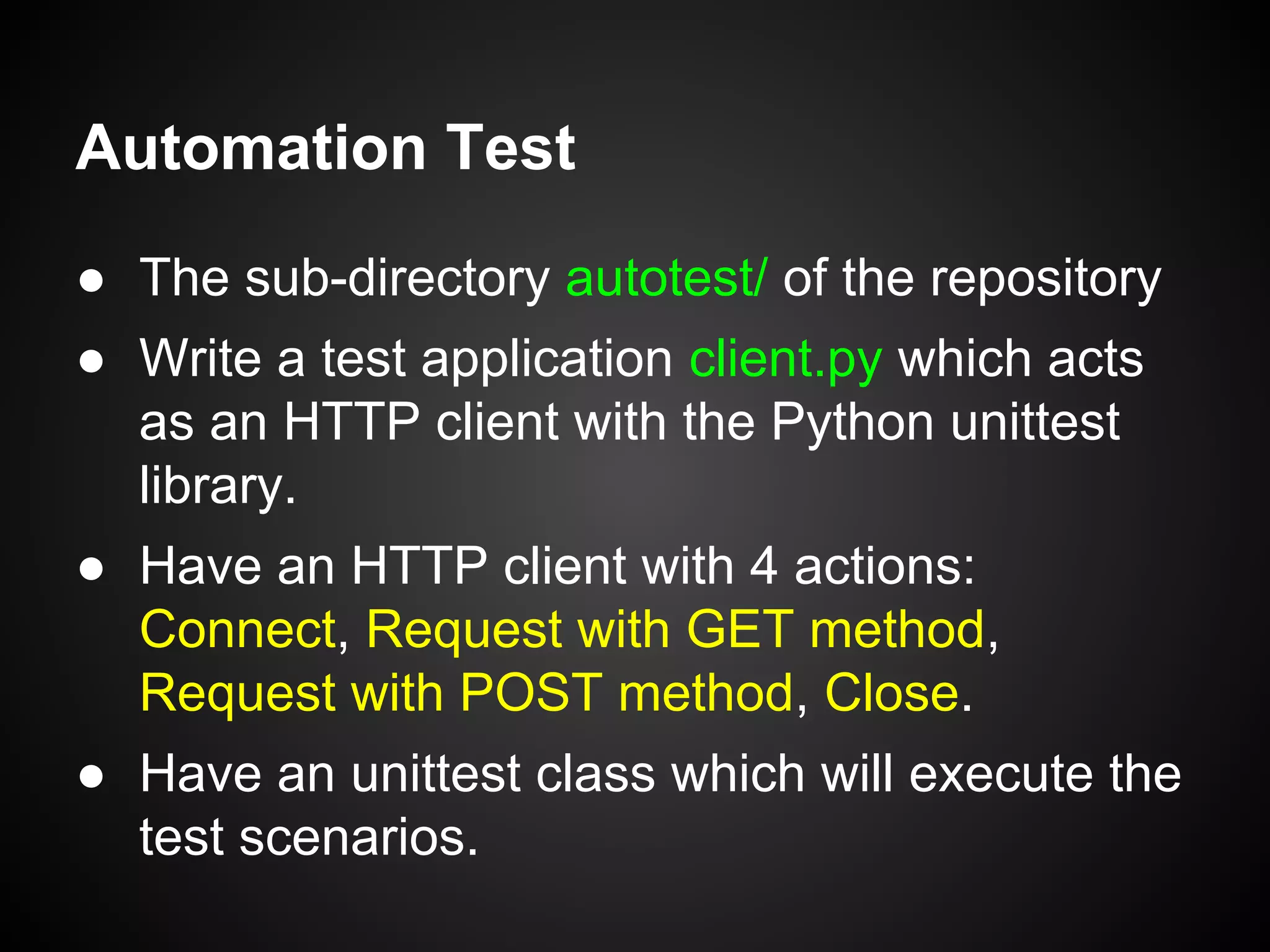

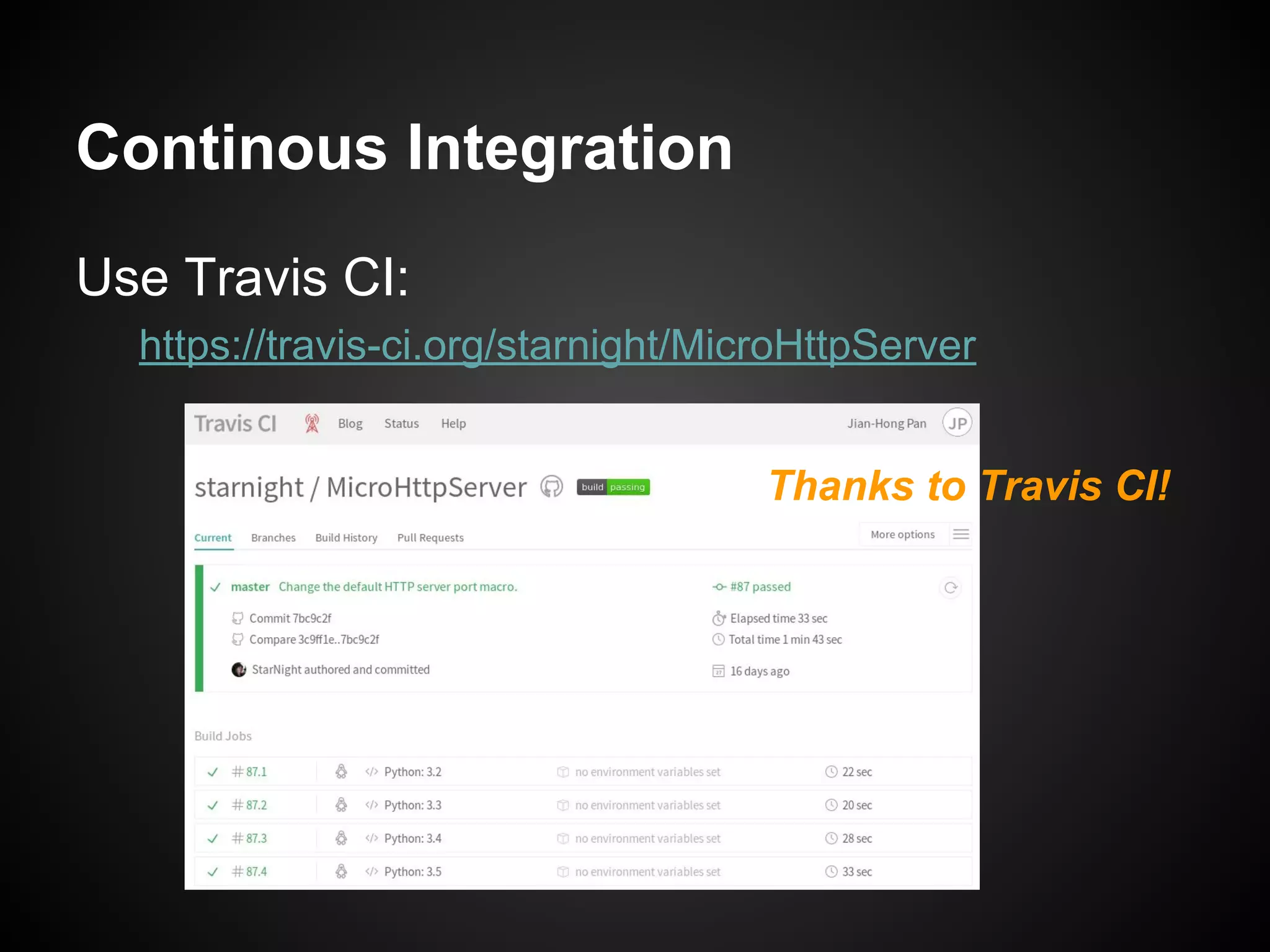
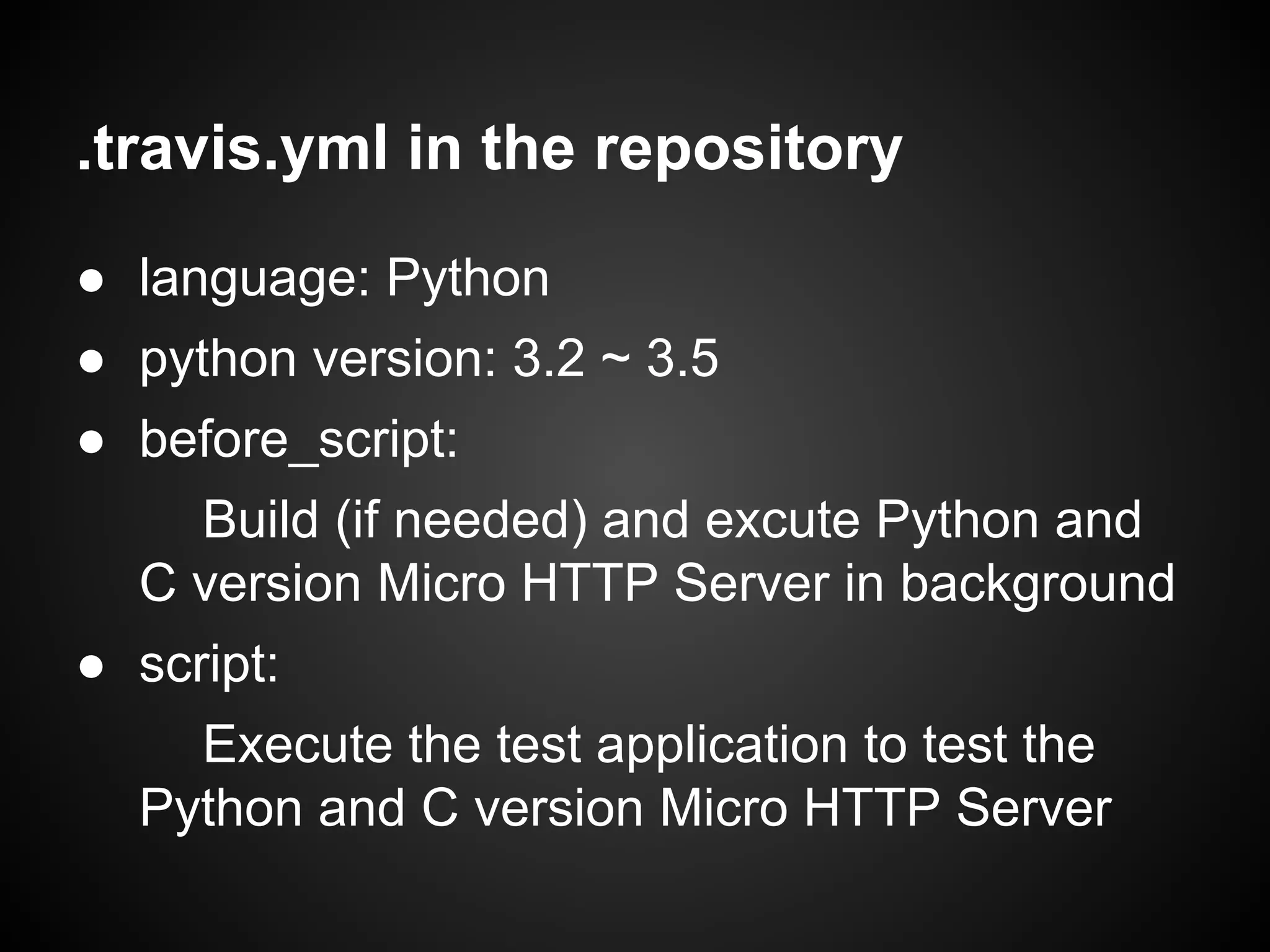
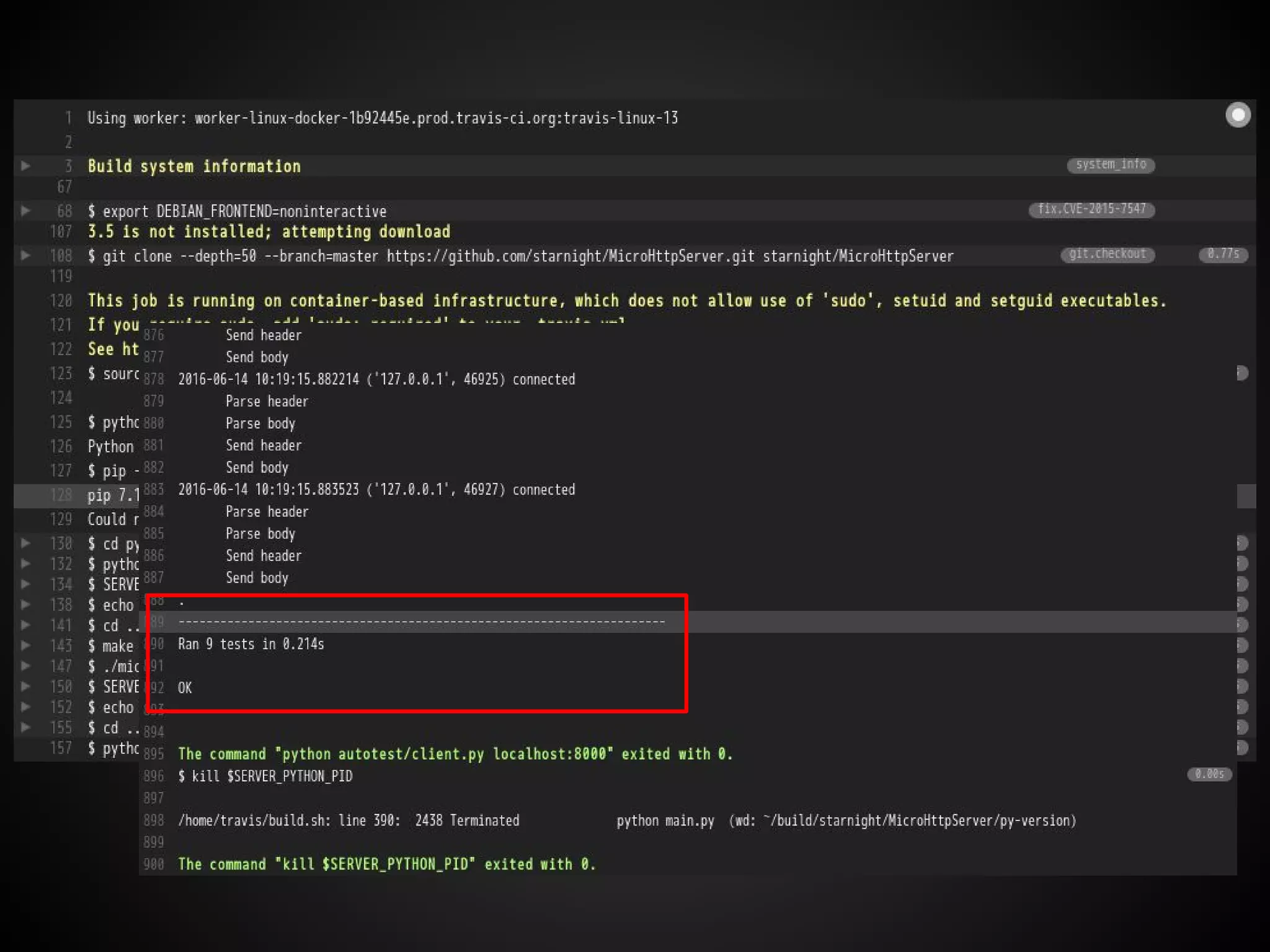
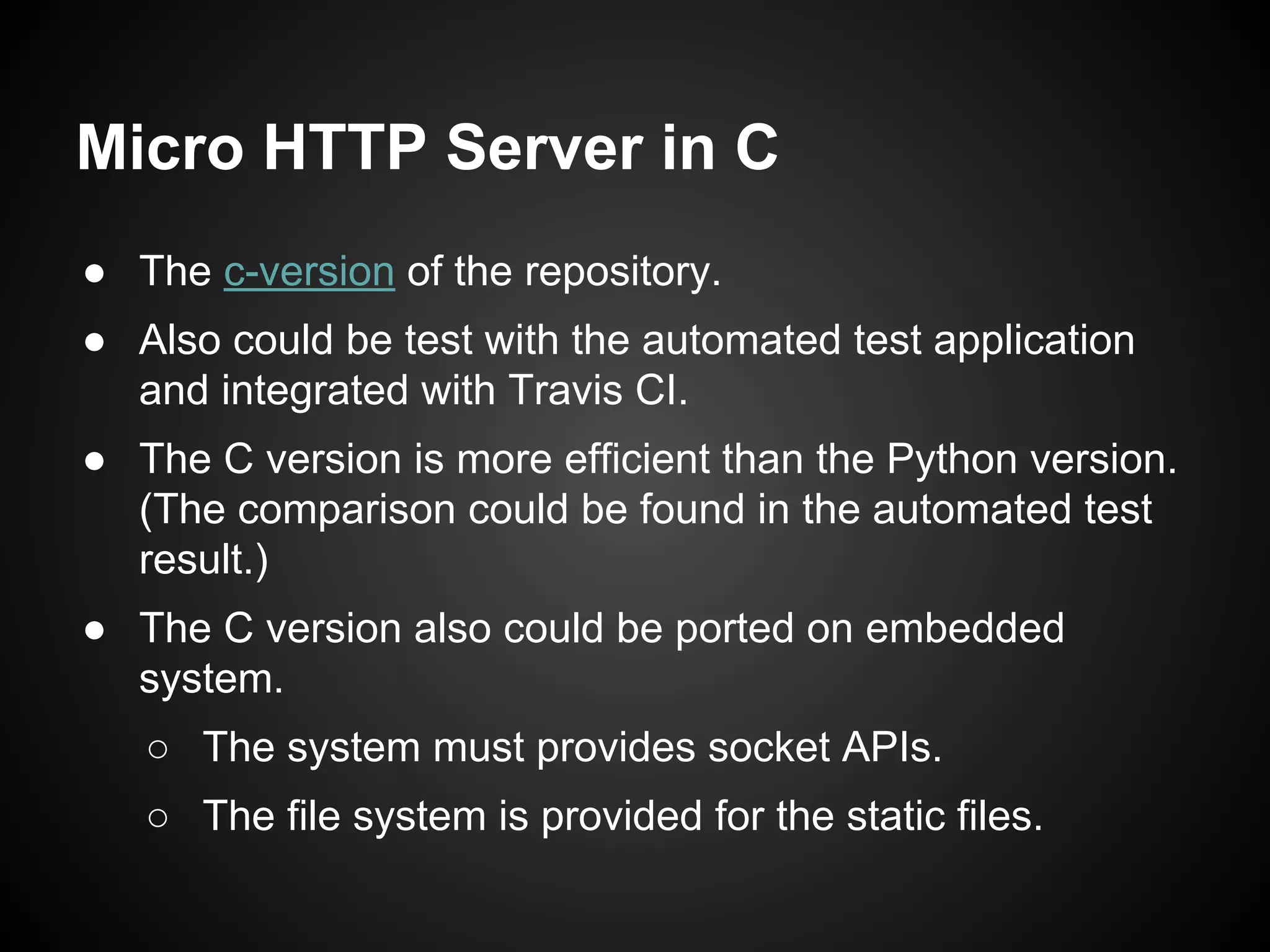

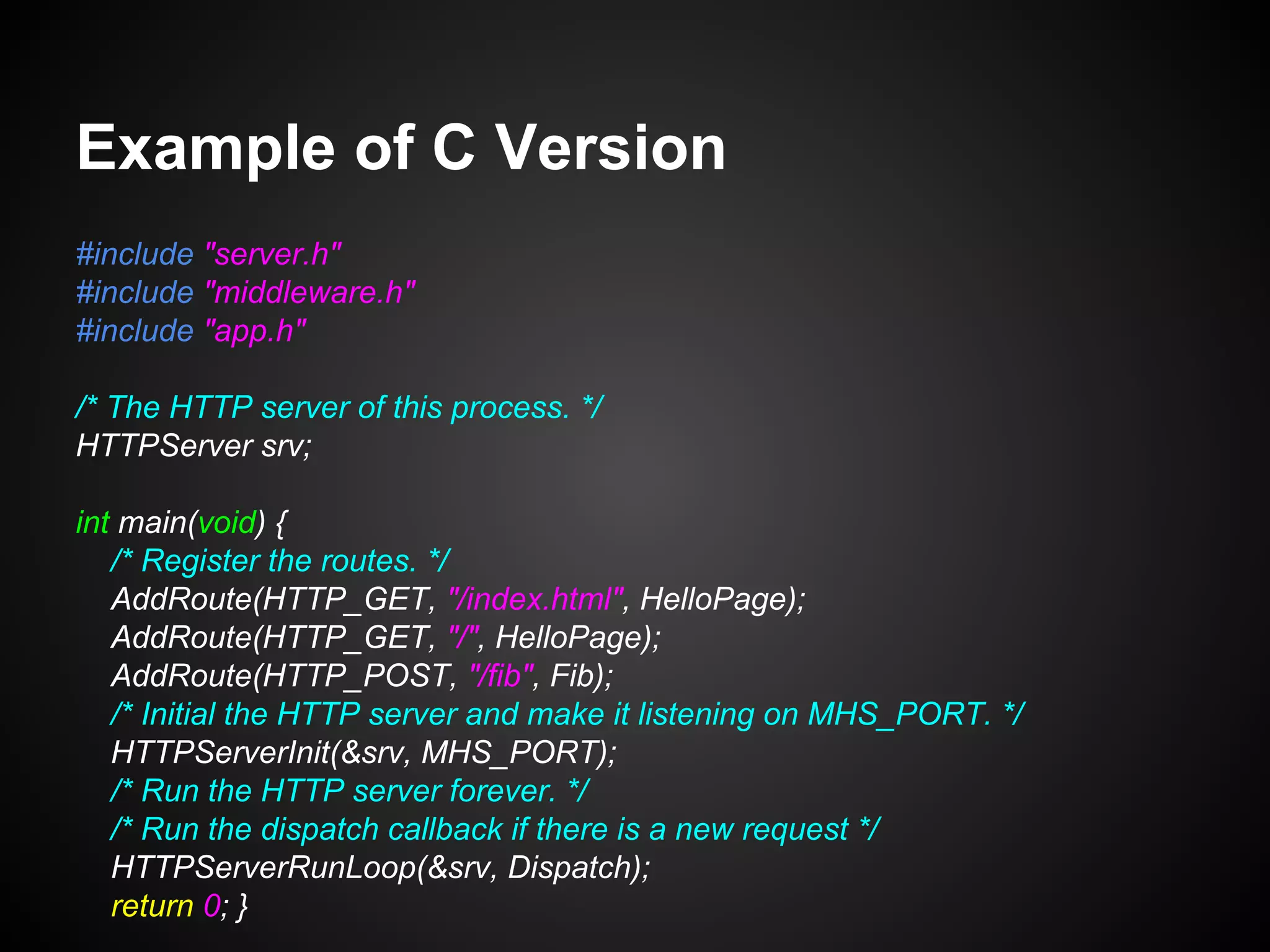
![#include <string.h>
#include <stdlib.h>
#include "app.h"
void HelloPage(HTTPReqMessage *req, HTTPResMessage *res) {
int n, i = 0, j;
char *p;
char header[] = "HTTP/1.1 200 OKrnConnection: closern"
"Content-Type: text/html; charset=UTF-8rnrn";
char body[] = "<html><body>Hello!<br>許功蓋<br></body></html>";
/* Build header. */
p = (char *)res->_buf;
n = strlen(header);
memcpy(p, header, n);
p += n; i += n;
/* Build body. */
n = strlen(body);
memcpy(p, body, n);
p += n; i += n;
/* Set the length of the HTTP response message. */
res->_index = i; }](https://image.slidesharecdn.com/buildamicrohttpserverforembeddedsystem-161012205755/75/Build-a-Micro-HTTP-Server-for-Embedded-System-71-2048.jpg)
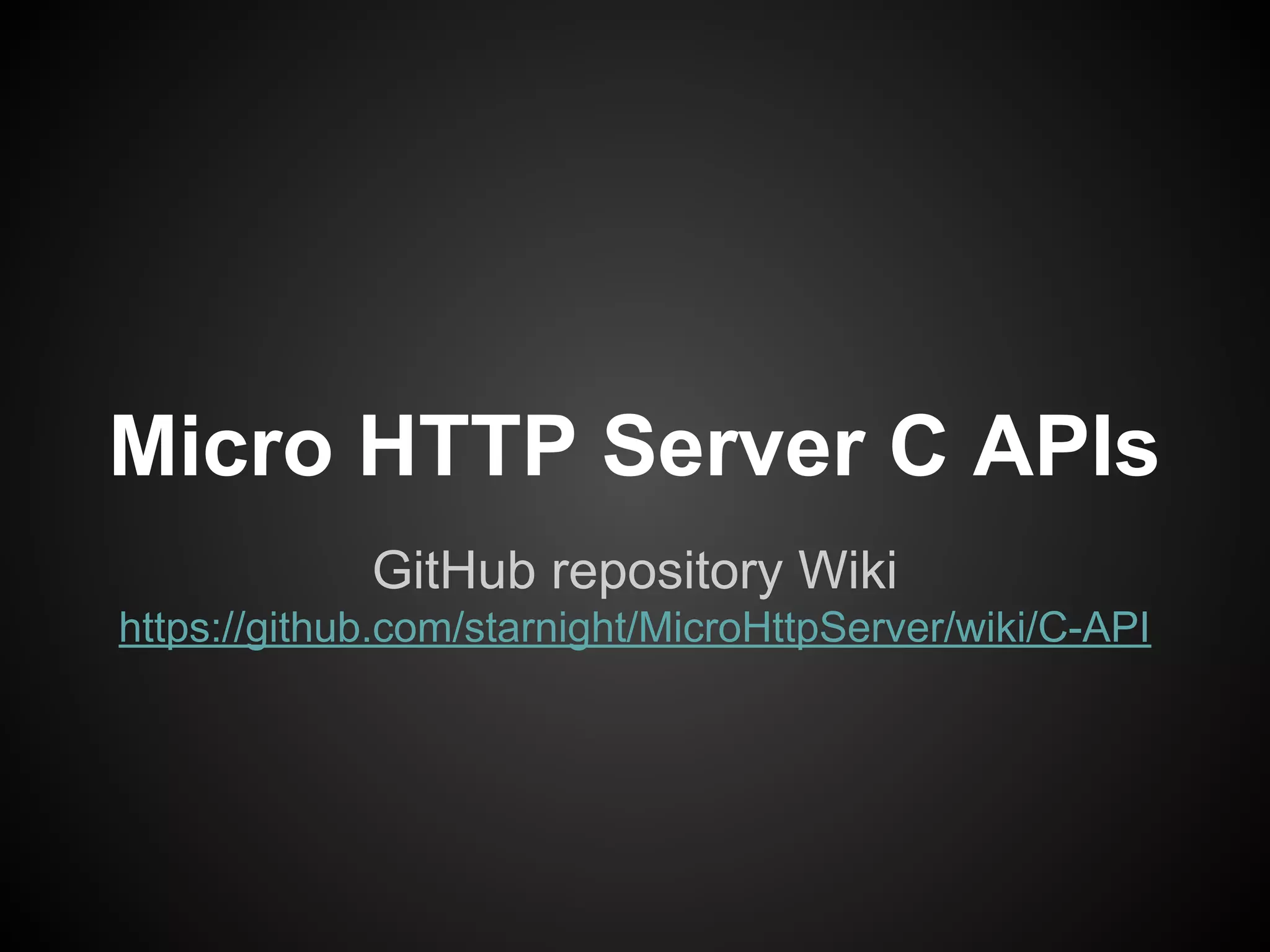
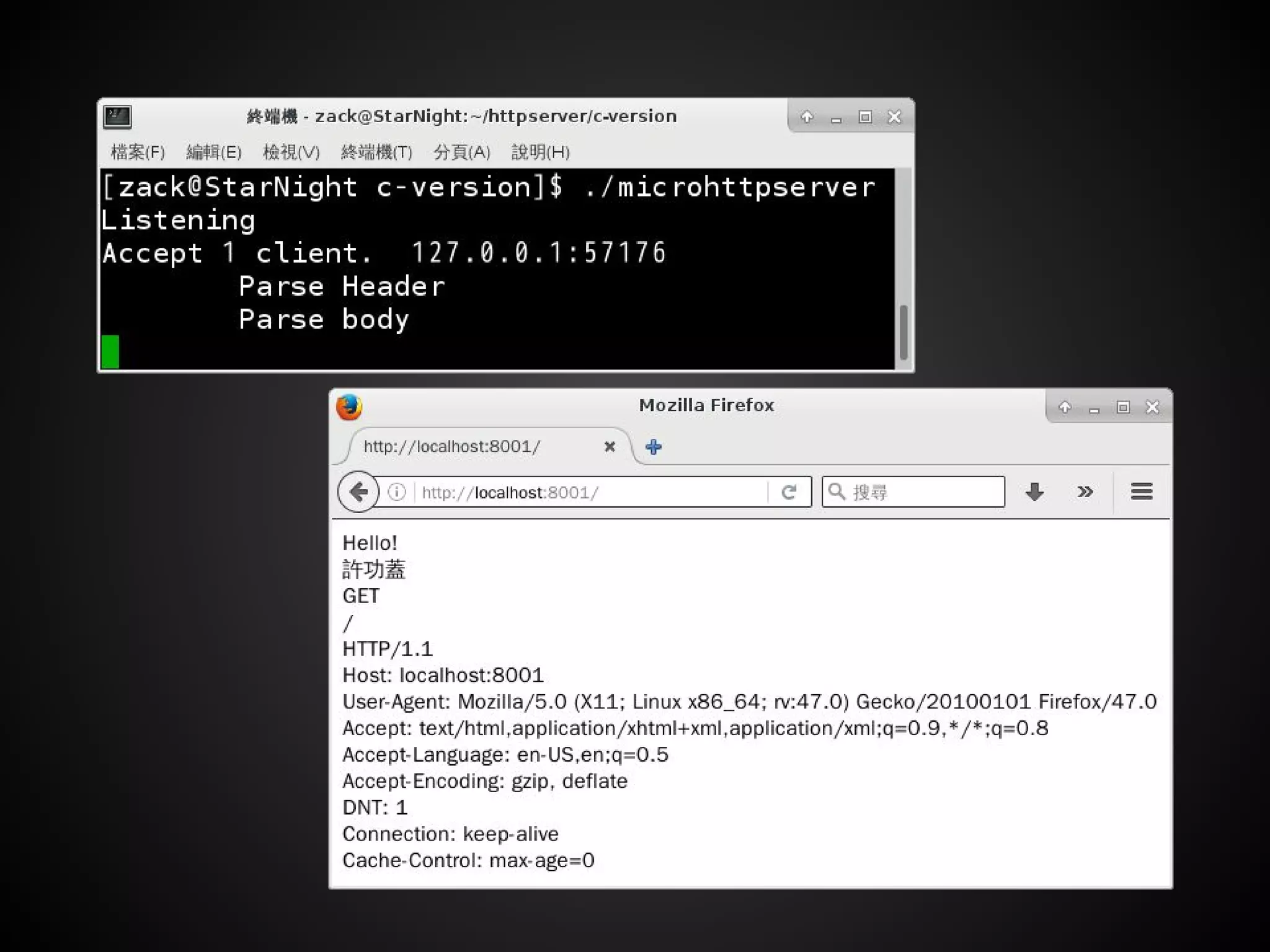

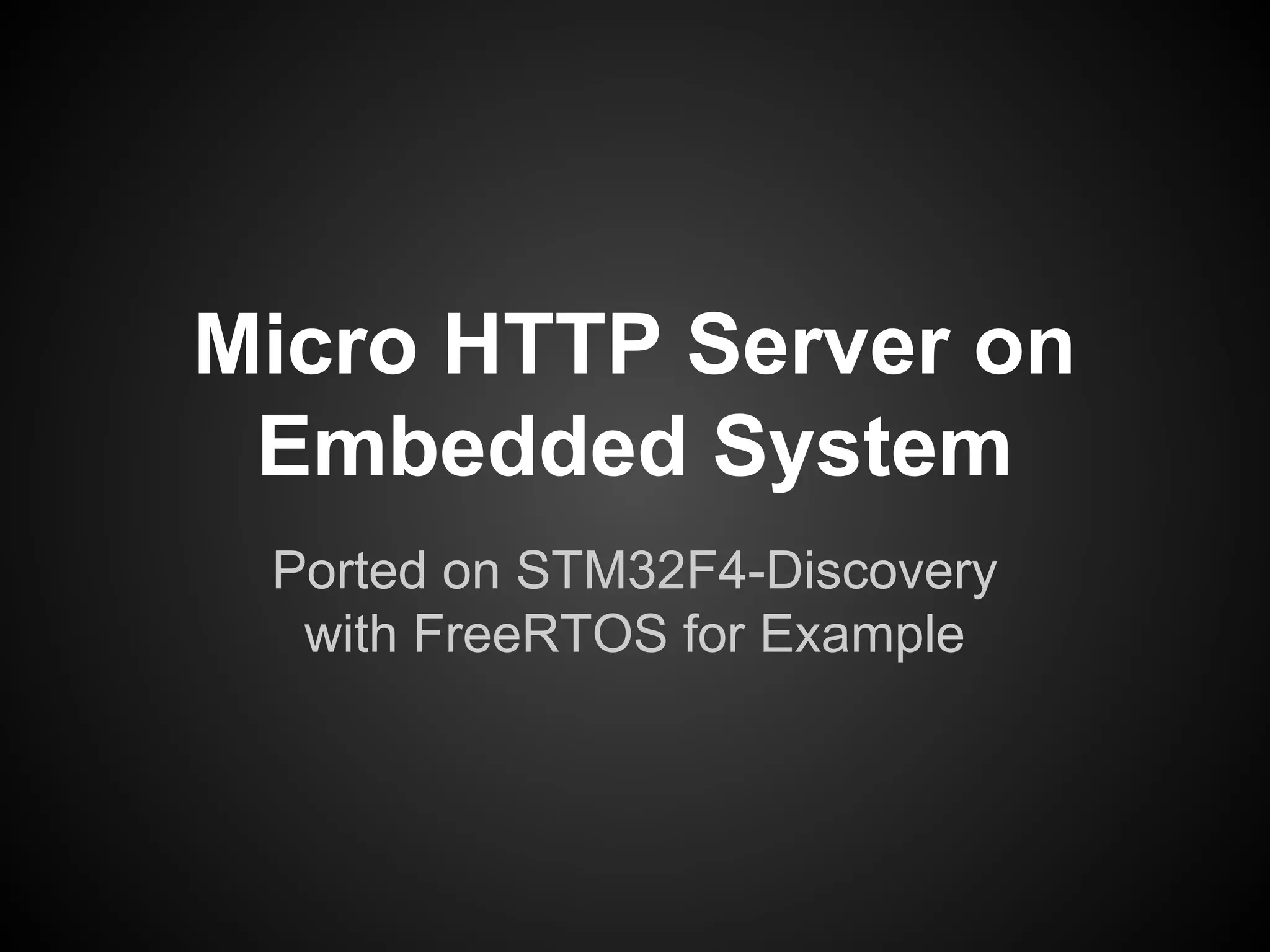
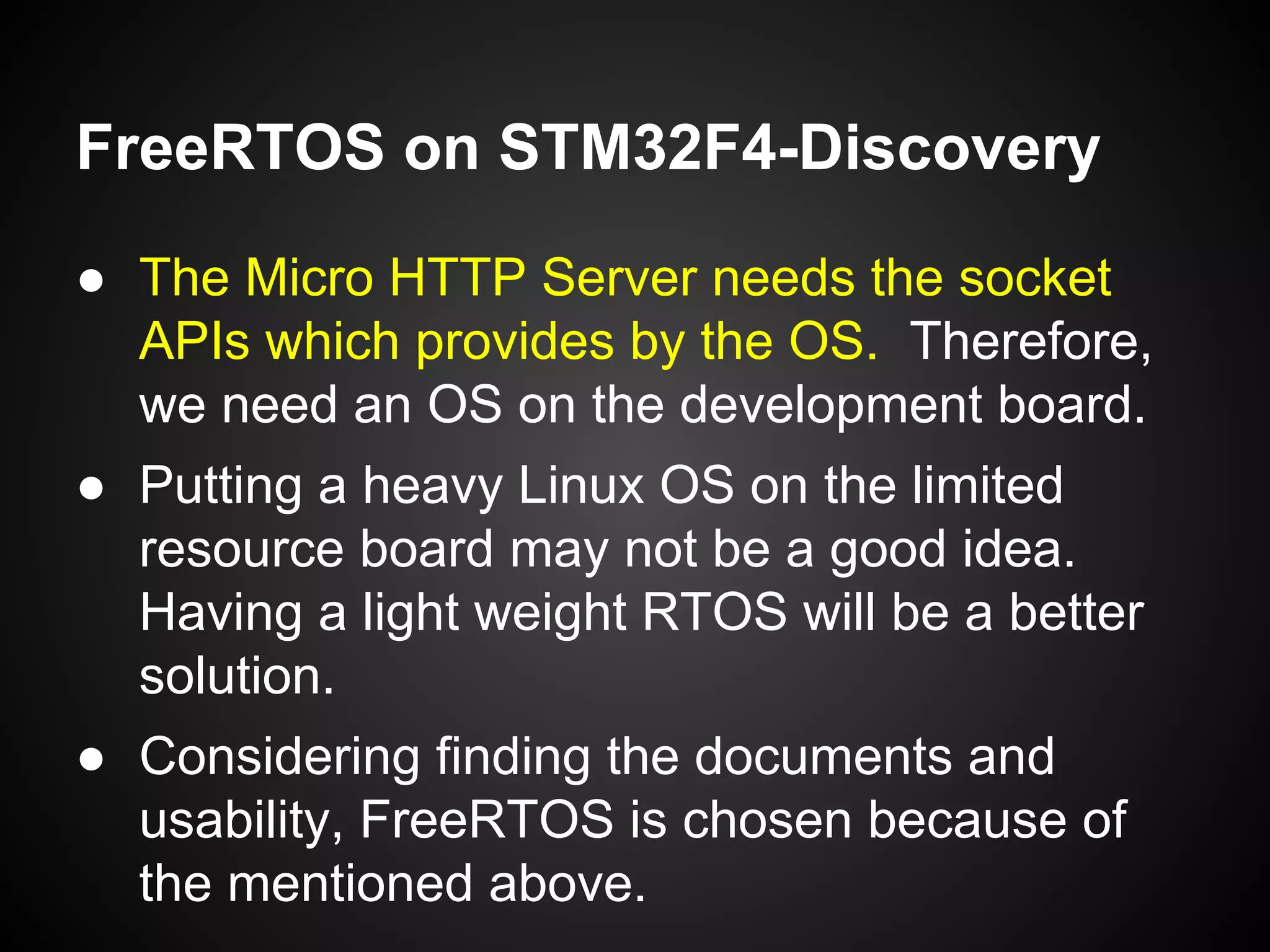
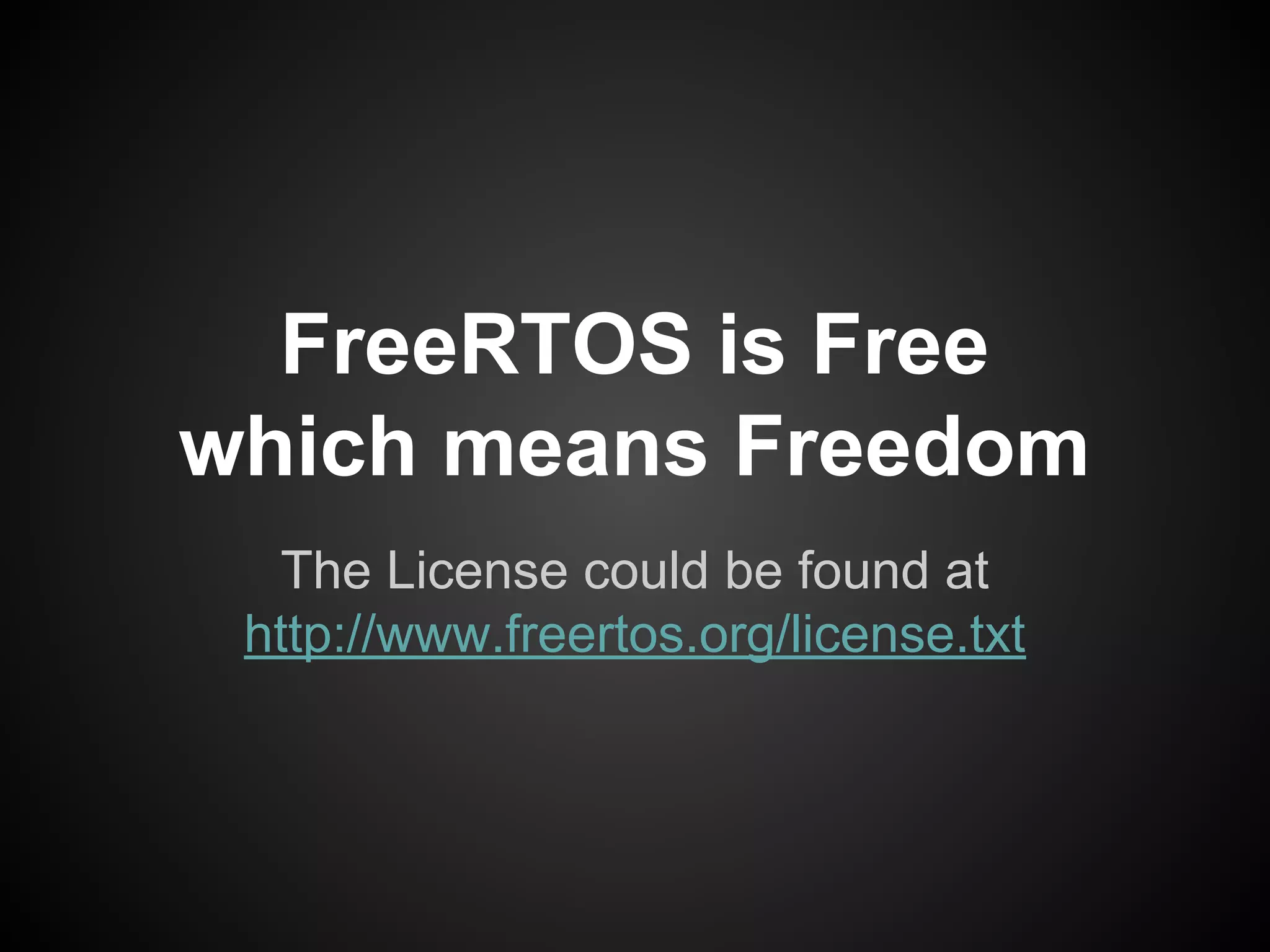
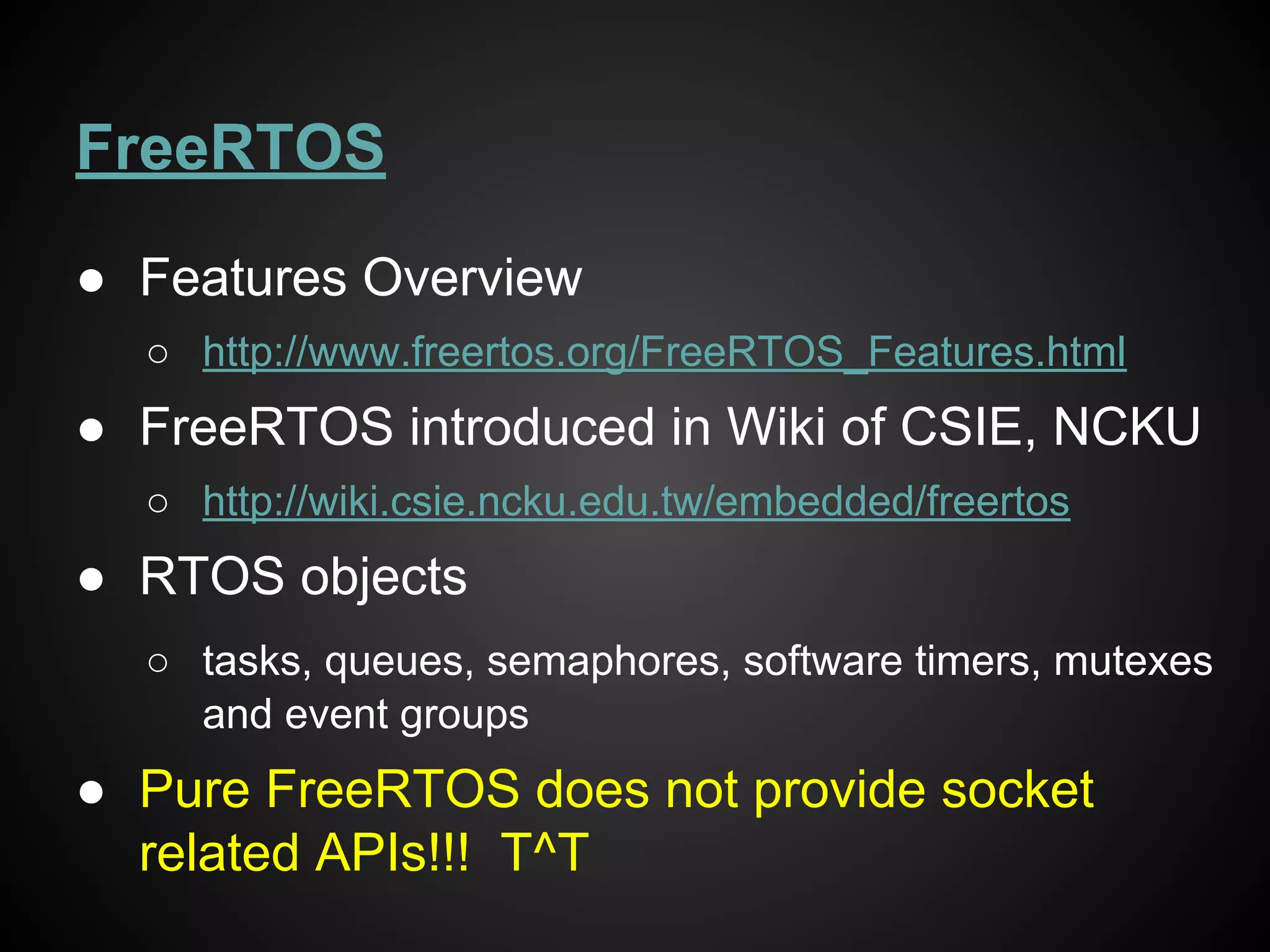
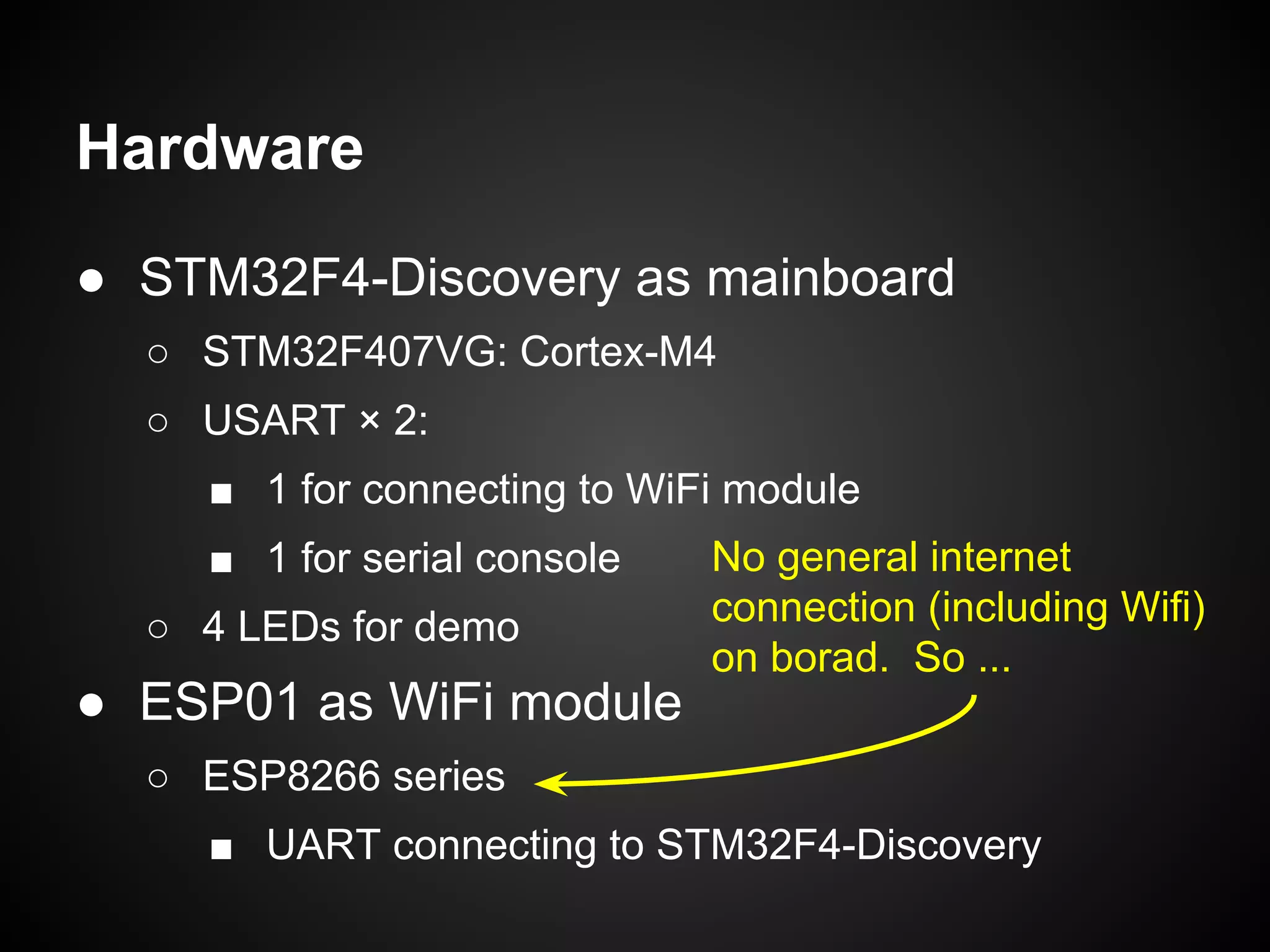
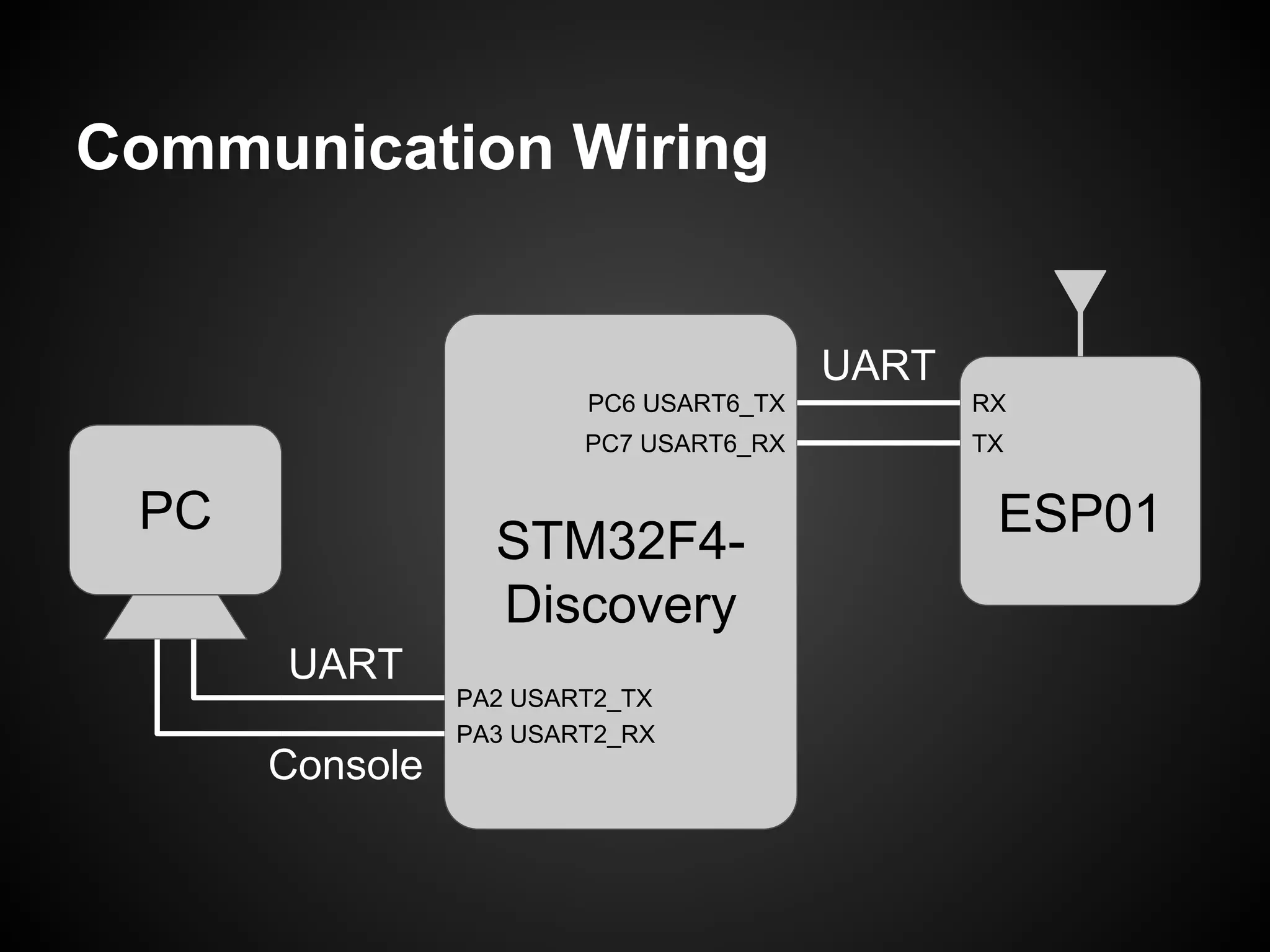




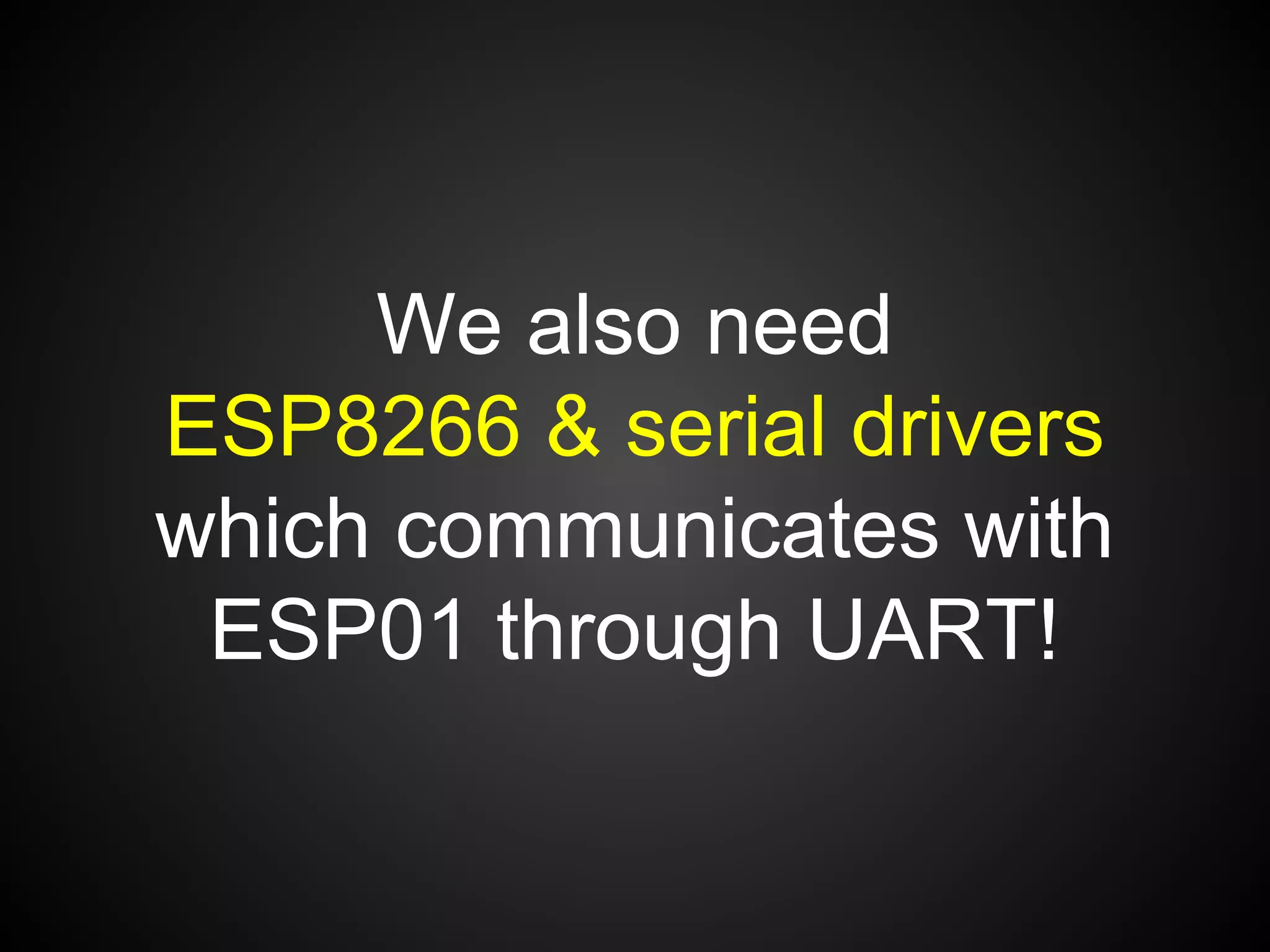
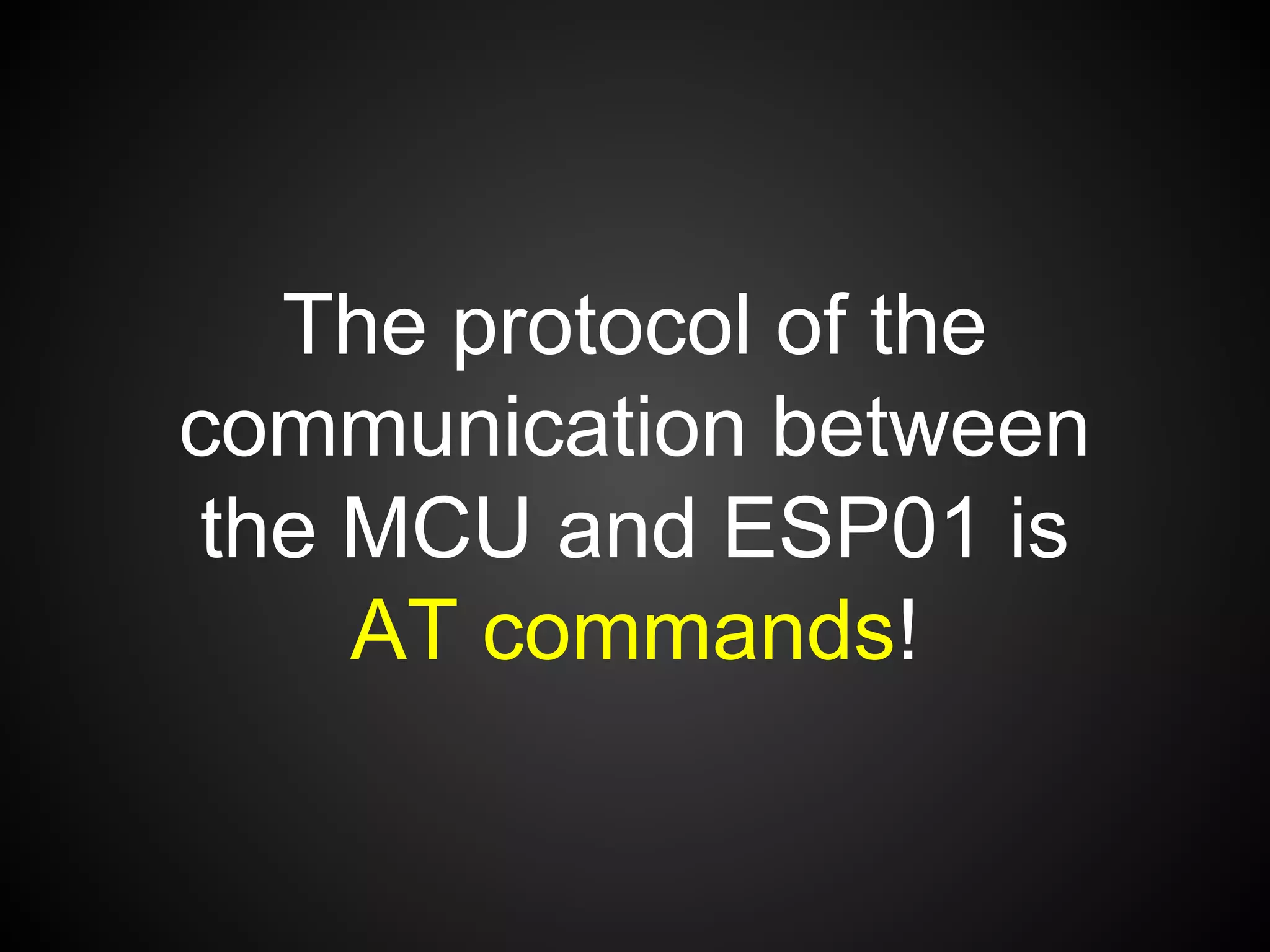
![AT Commands of ESP01
https://cdn.sparkfun.com/assets/learn_tutorials/4/0/3/4A-ES
P8266__AT_Instruction_Set__EN_v0.30.pdf
● AT+CWJAP: Connect to AP
● AT+CIFSR: Get local IP address
● AT+CIPMUX: Enable multiple connections
● AT+CIPSERVER: Configure as TCP server
● AT+CIPSEND: Send data
● AT+CIPCLOSE: Close TCP or UDP connection
● [num],CONNECT: A new client connected (Not listed)
● +IPD: Receive network data](https://image.slidesharecdn.com/buildamicrohttpserverforembeddedsystem-161012205755/75/Build-a-Micro-HTTP-Server-for-Embedded-System-87-2048.jpg)
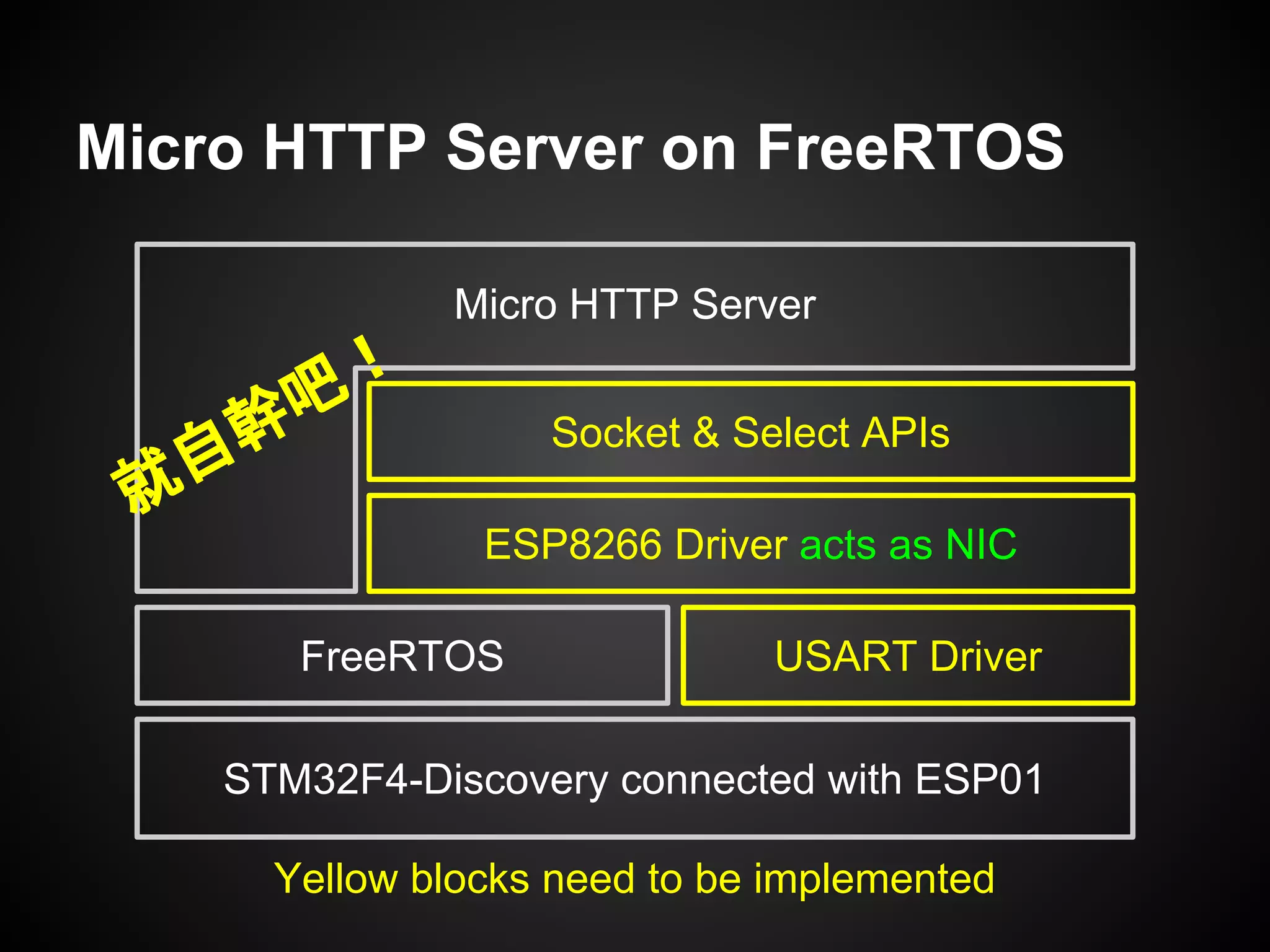
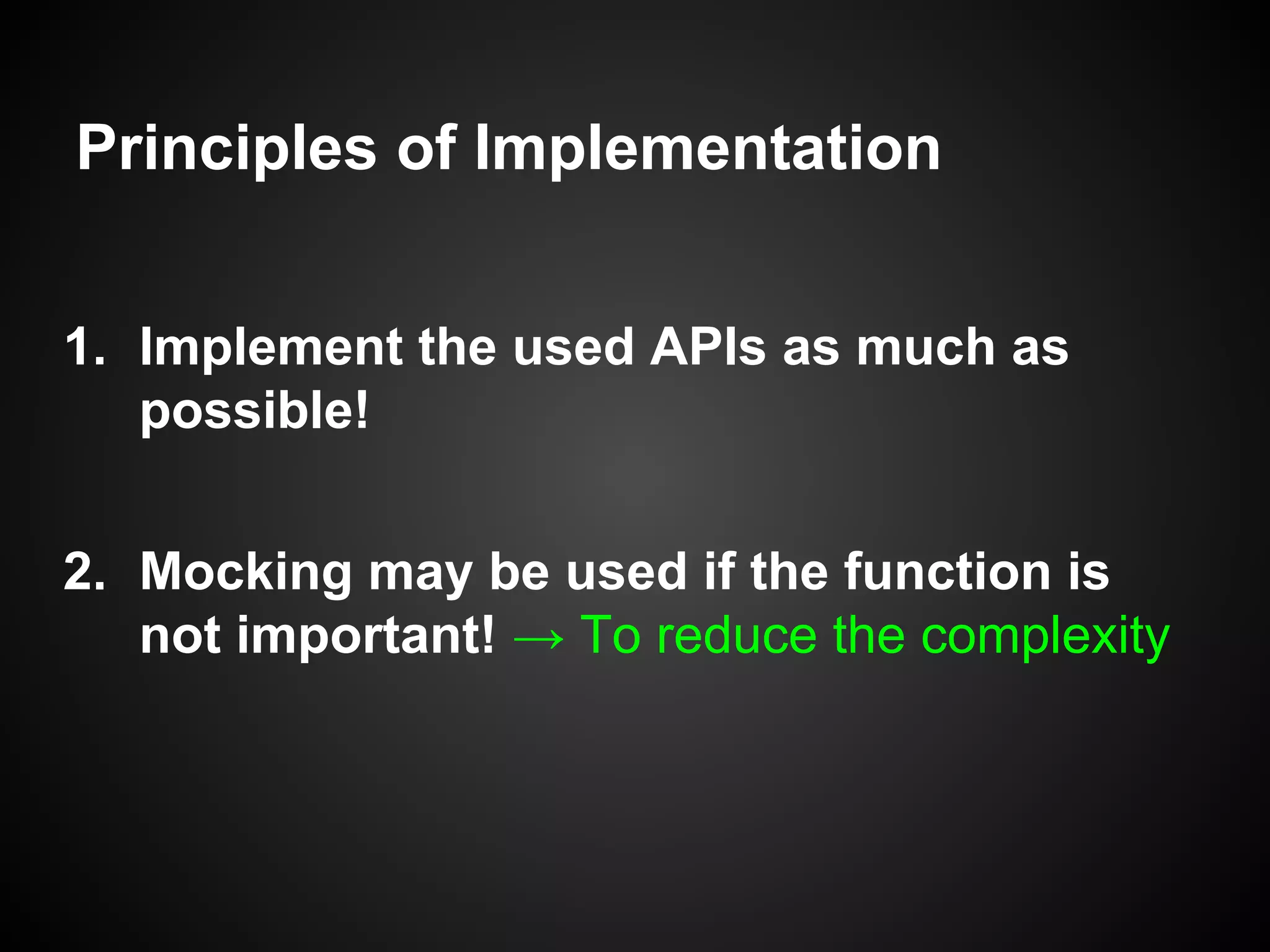

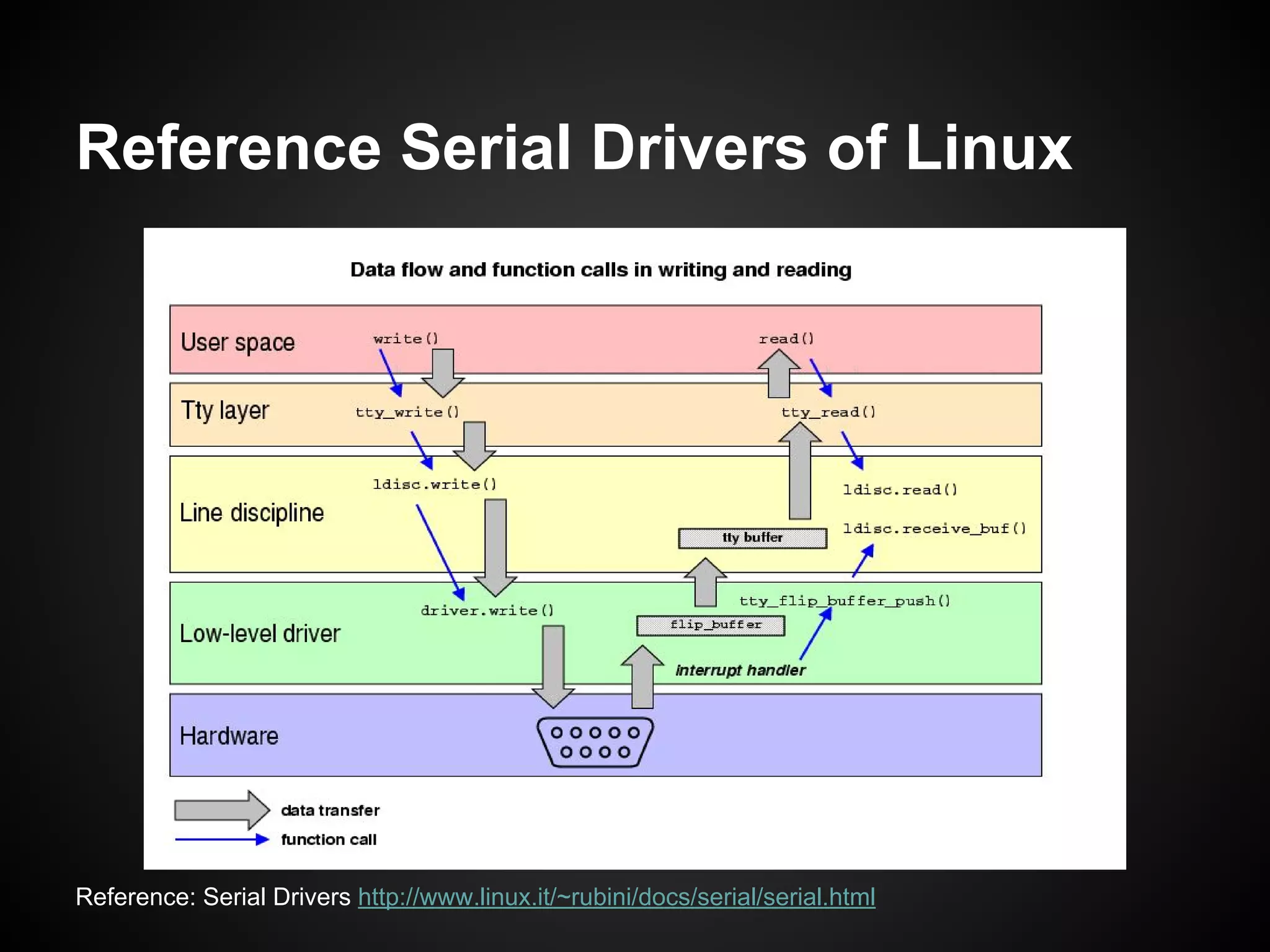
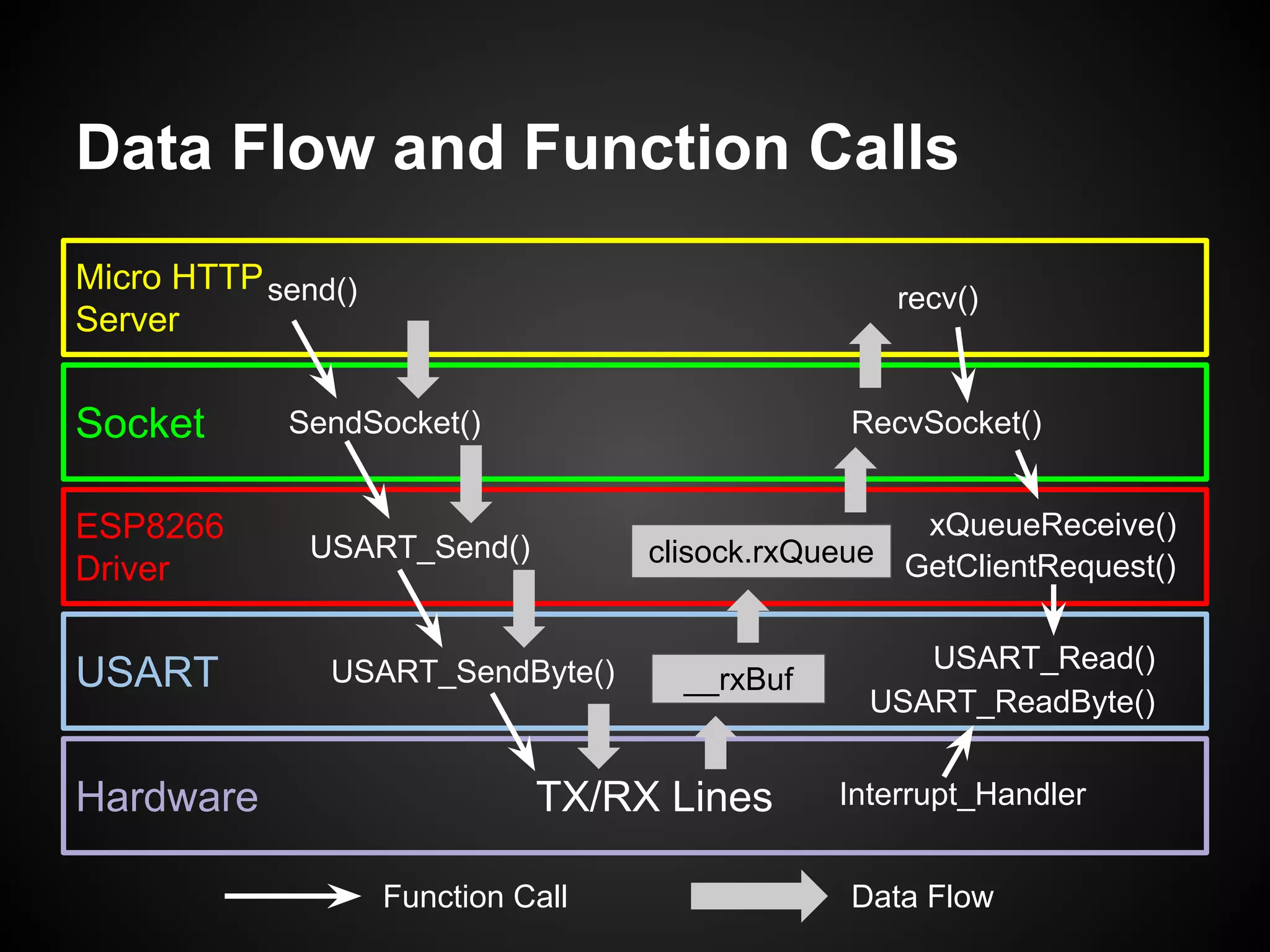
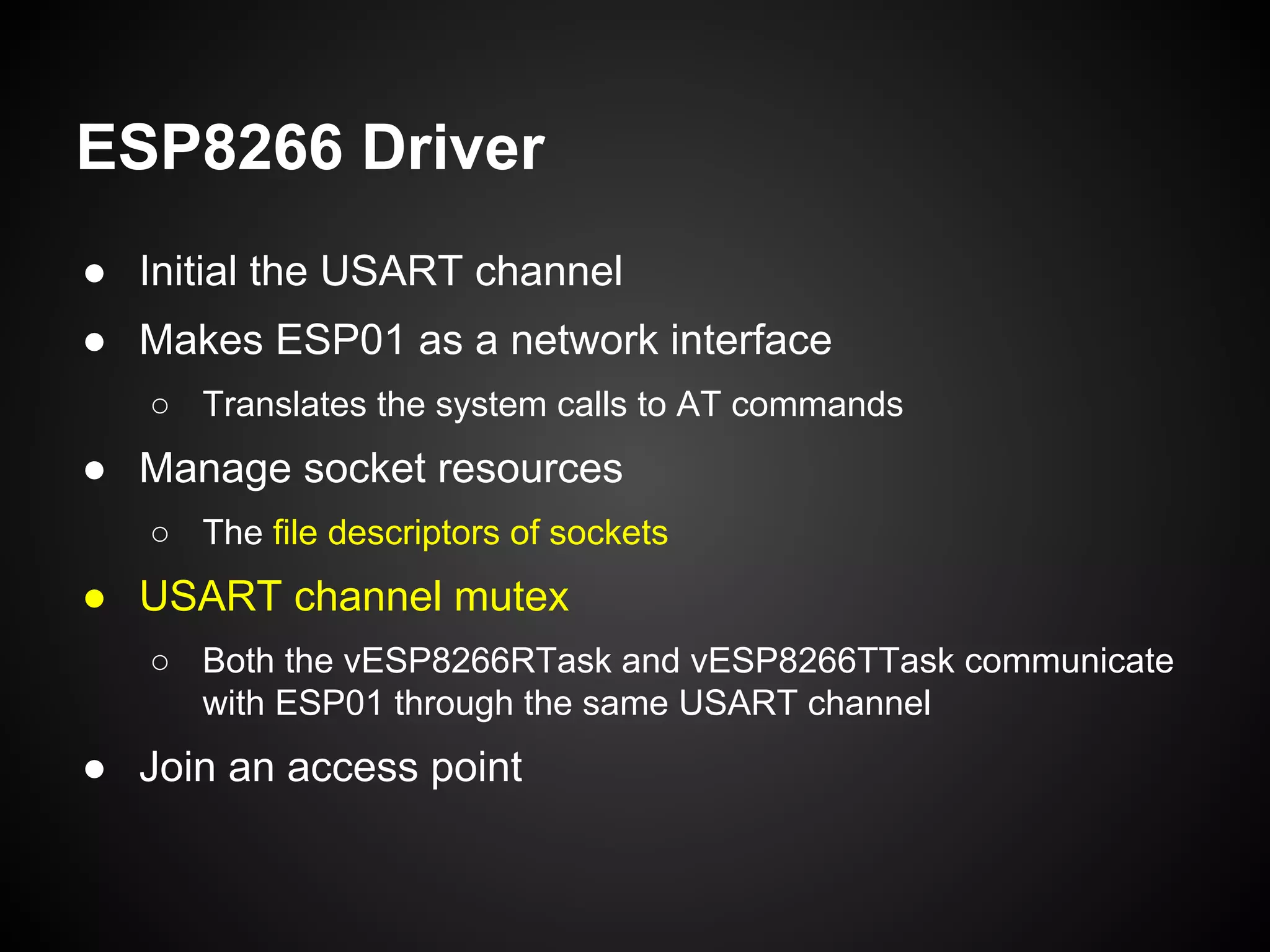
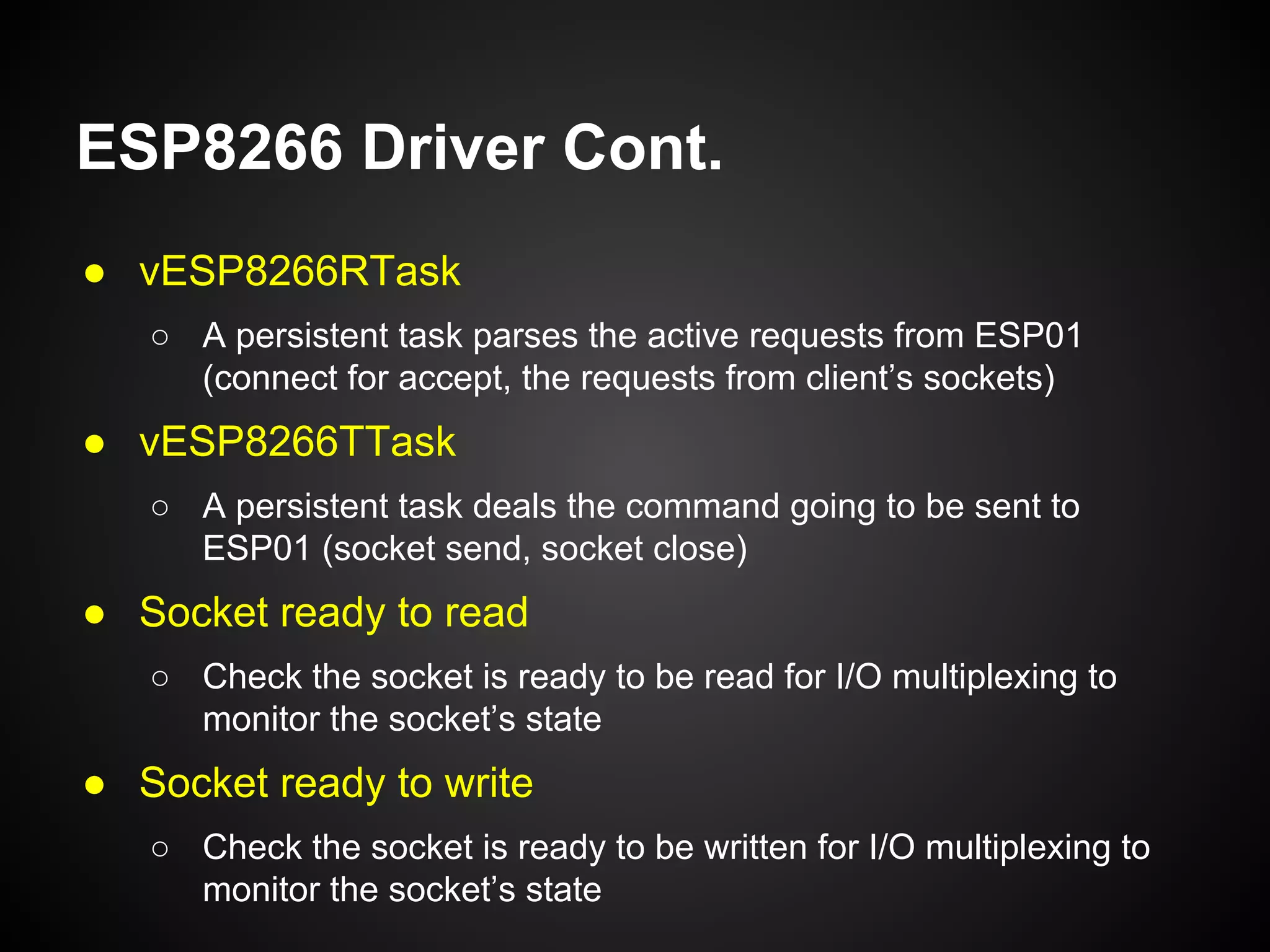
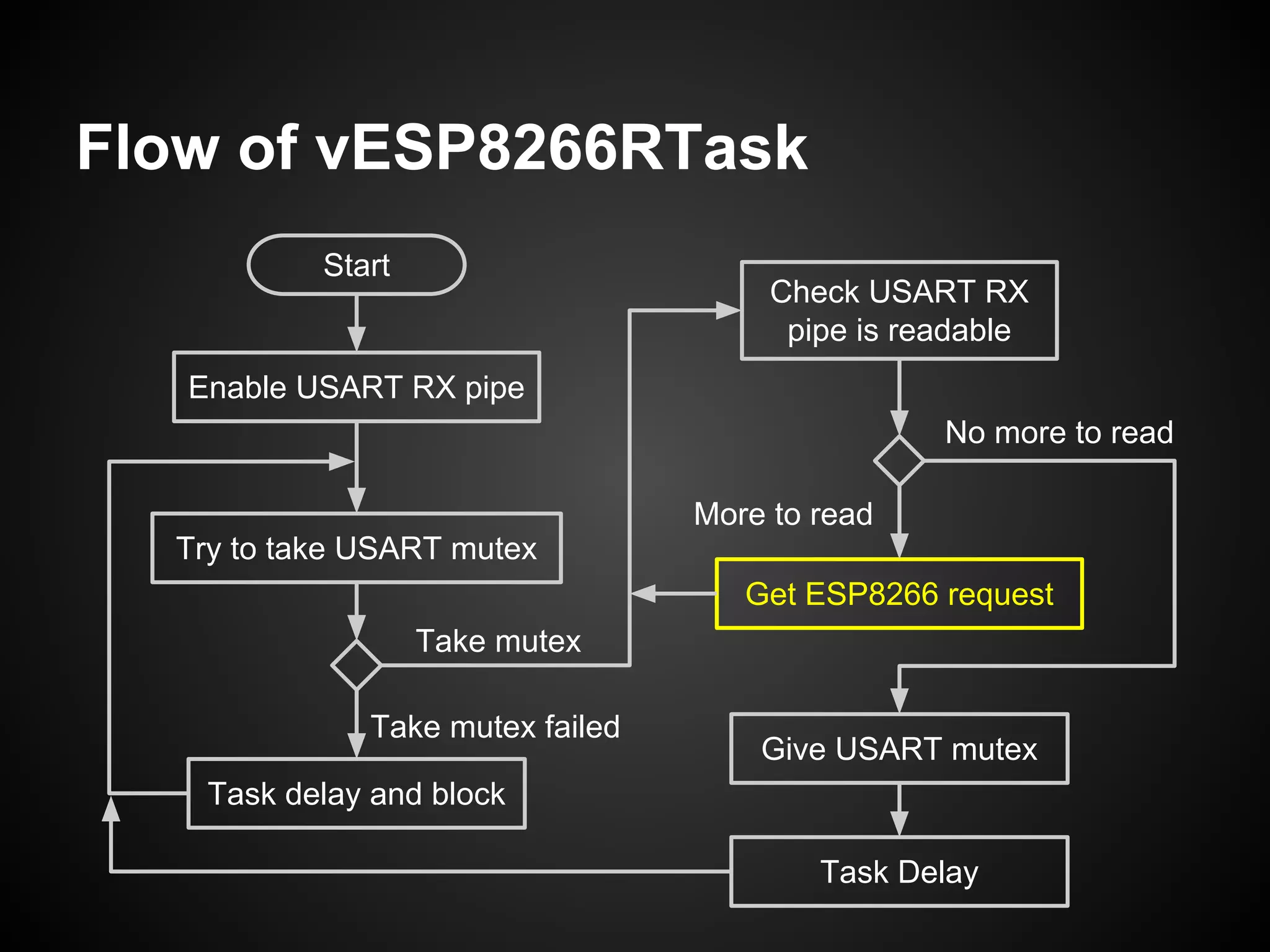
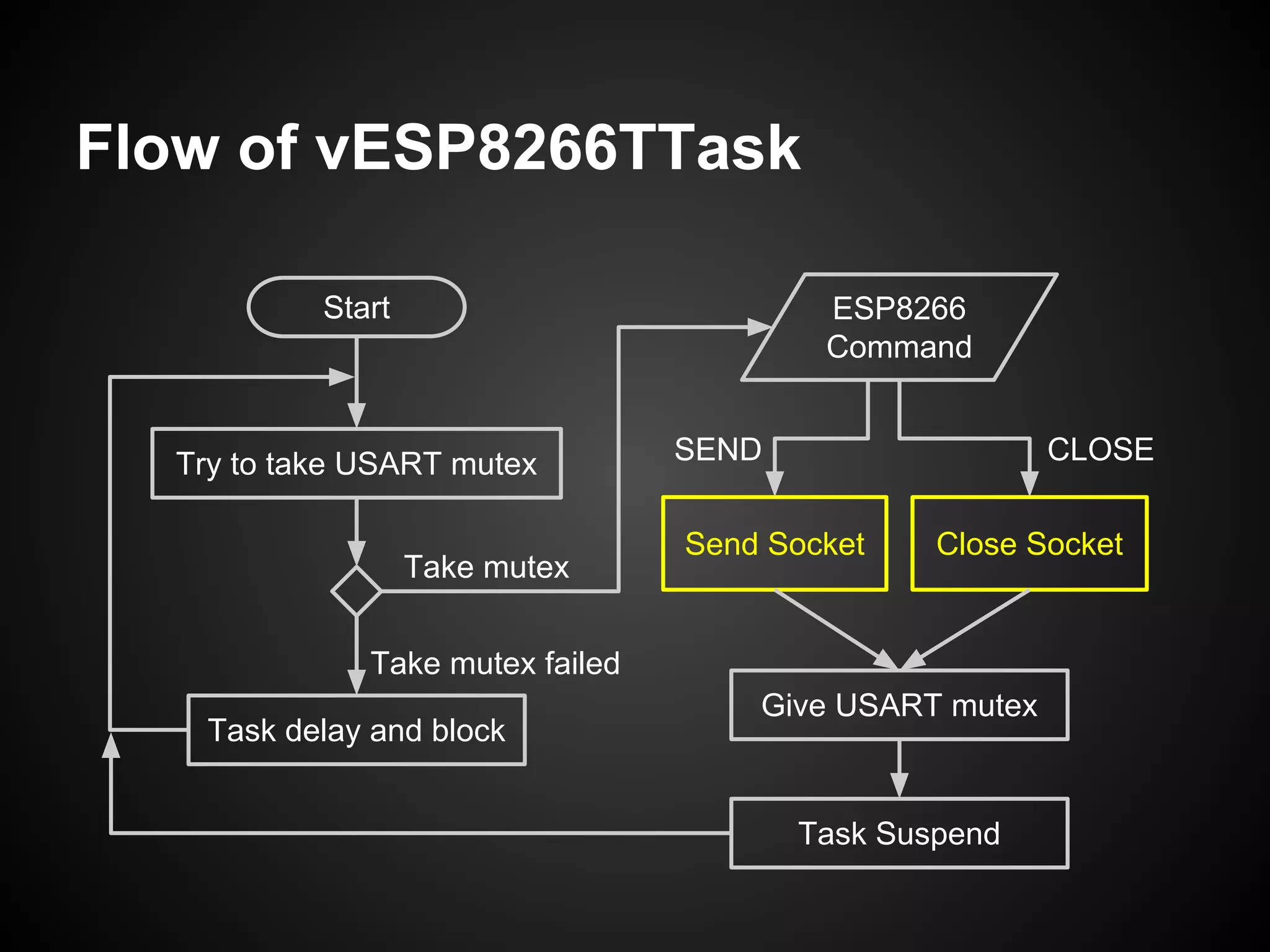
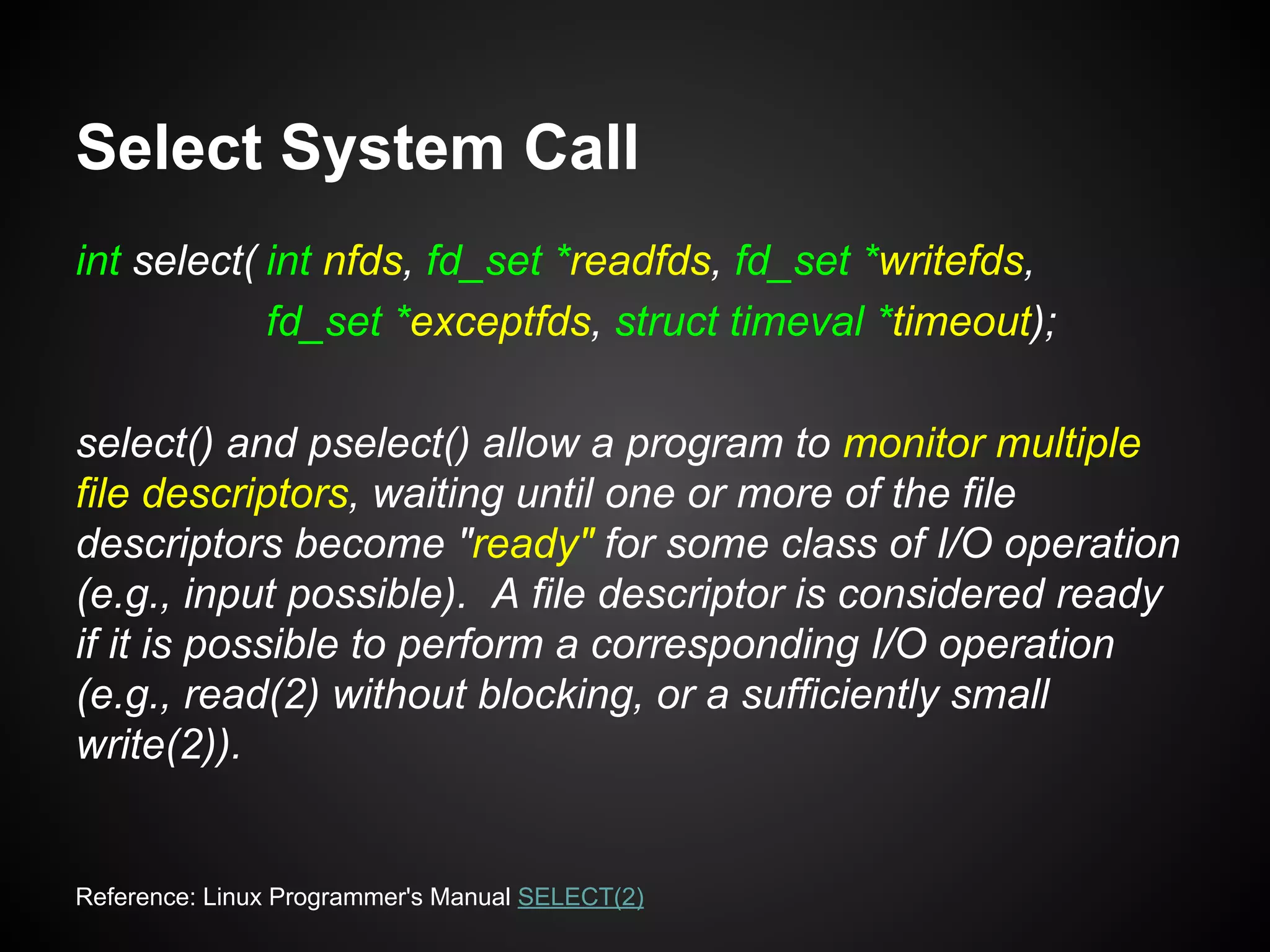
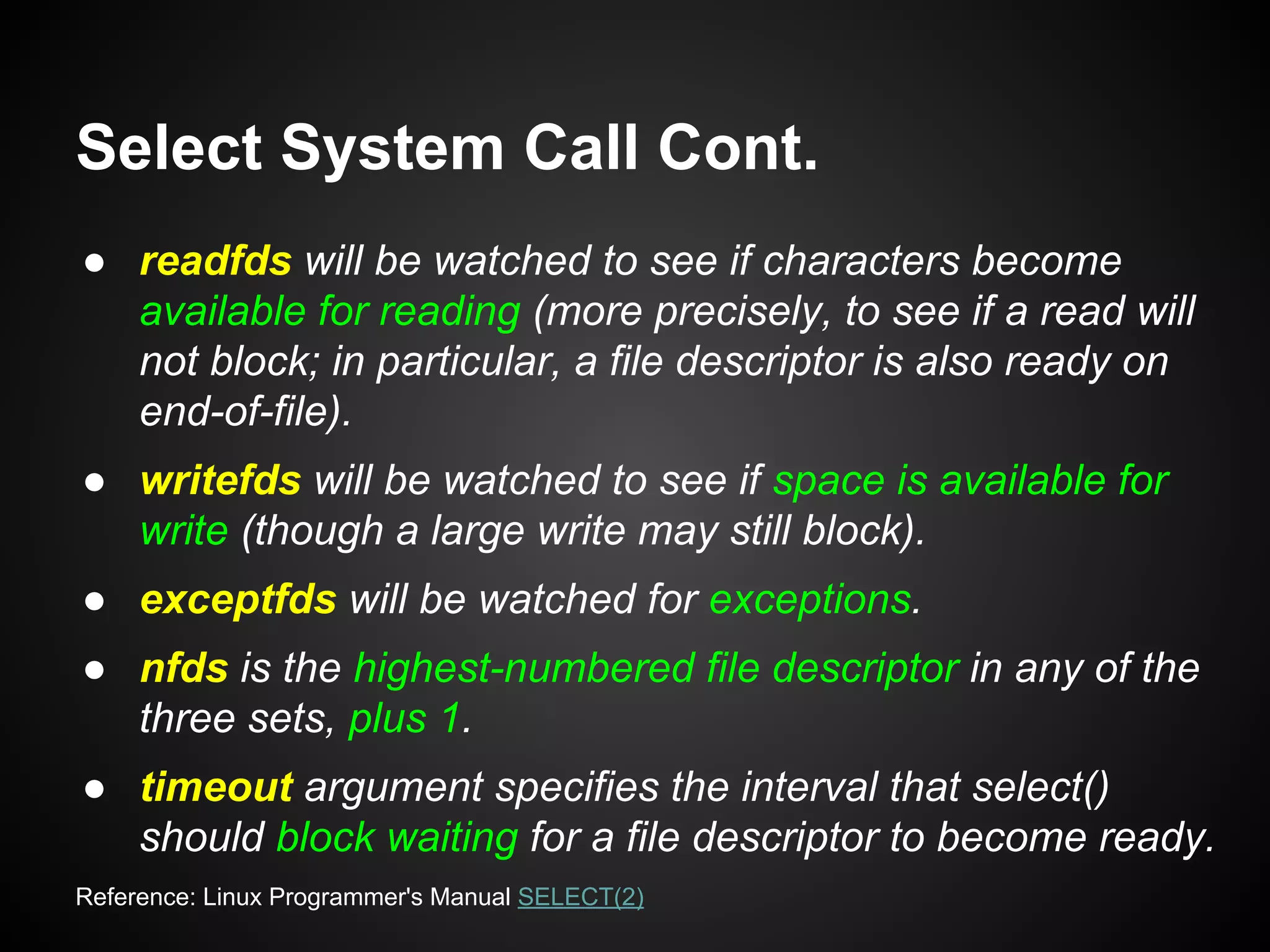
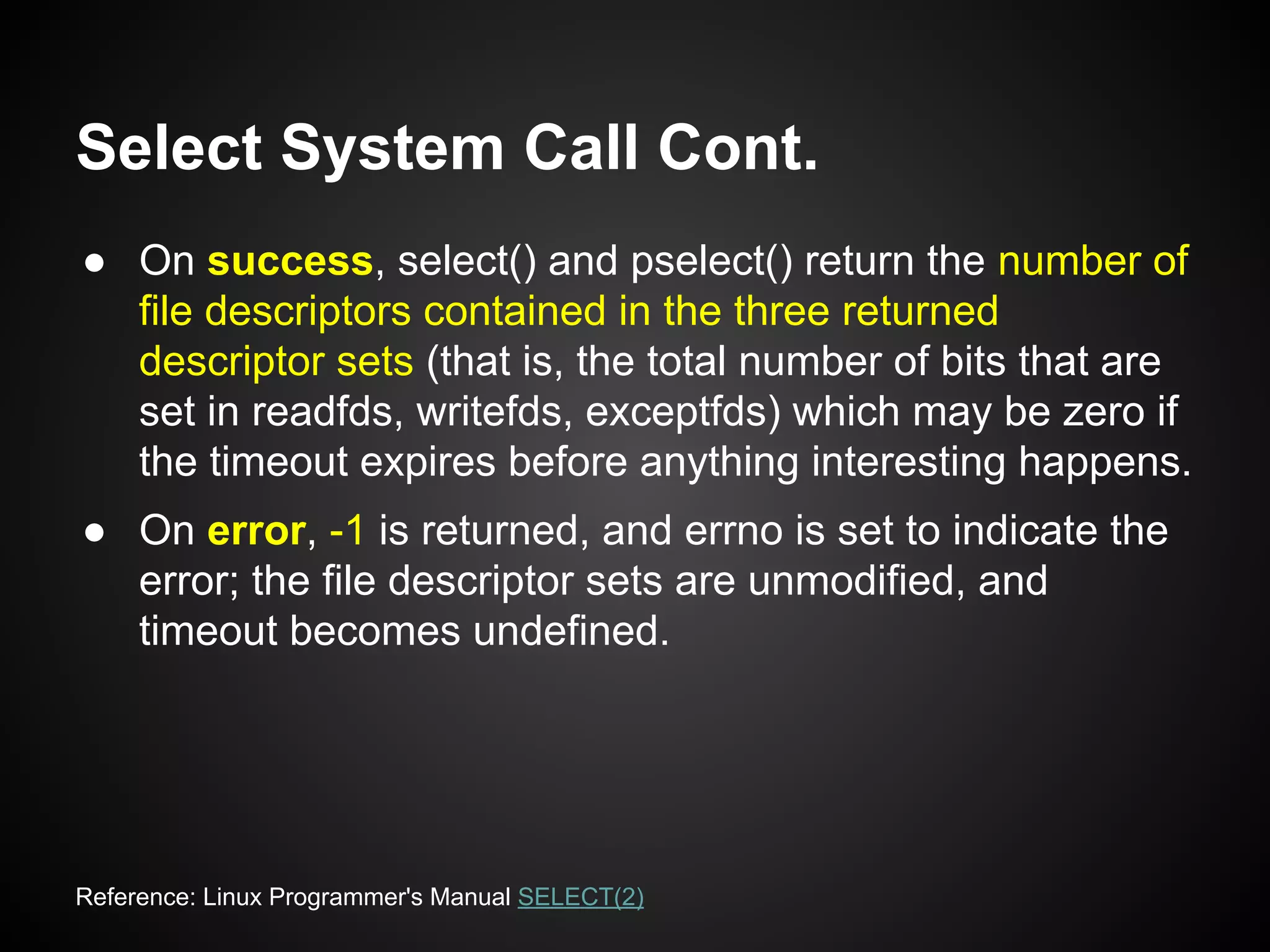
![fd_set
Linux/include/uapi/linux/posix_types.h
typedef struct {
unsigned long fds_bits[ __FD_SETSIZE /
(8 * sizeof(long))];
} __kernel_fd_set;
Linux/include/linux/types.h
typedef __kernel_fd_set fd_set;
=> Each bit of fd_set corresponds to one file descriptor in
order.
Bits Array fd=0 fd=1 fd=2 fd=3 fd=4 fd=5 fd=6 ...
I make it as the data type
of uint64_t !!!
typedef uint64_t fd_set;](https://image.slidesharecdn.com/buildamicrohttpserverforembeddedsystem-161012205755/75/Build-a-Micro-HTTP-Server-for-Embedded-System-100-2048.jpg)
